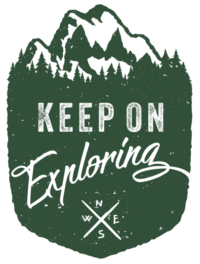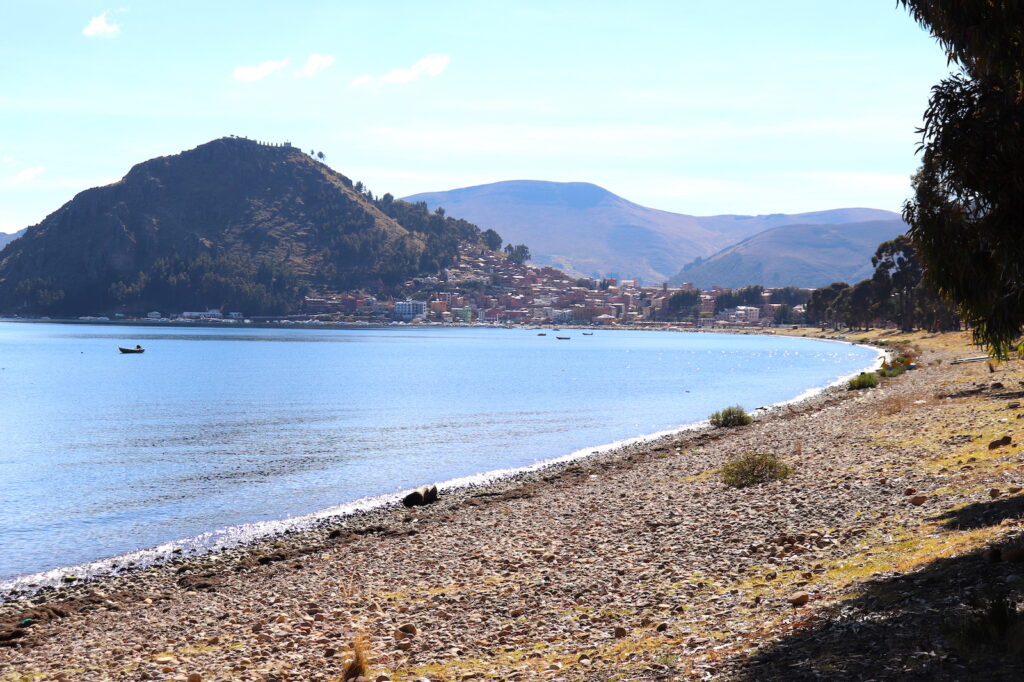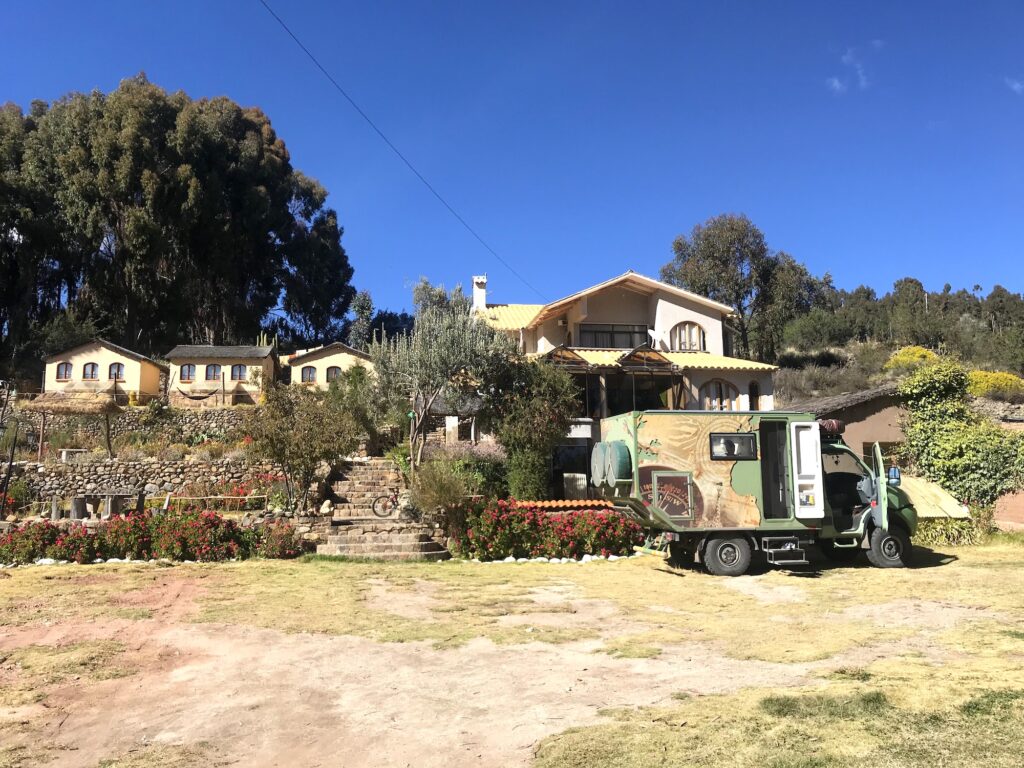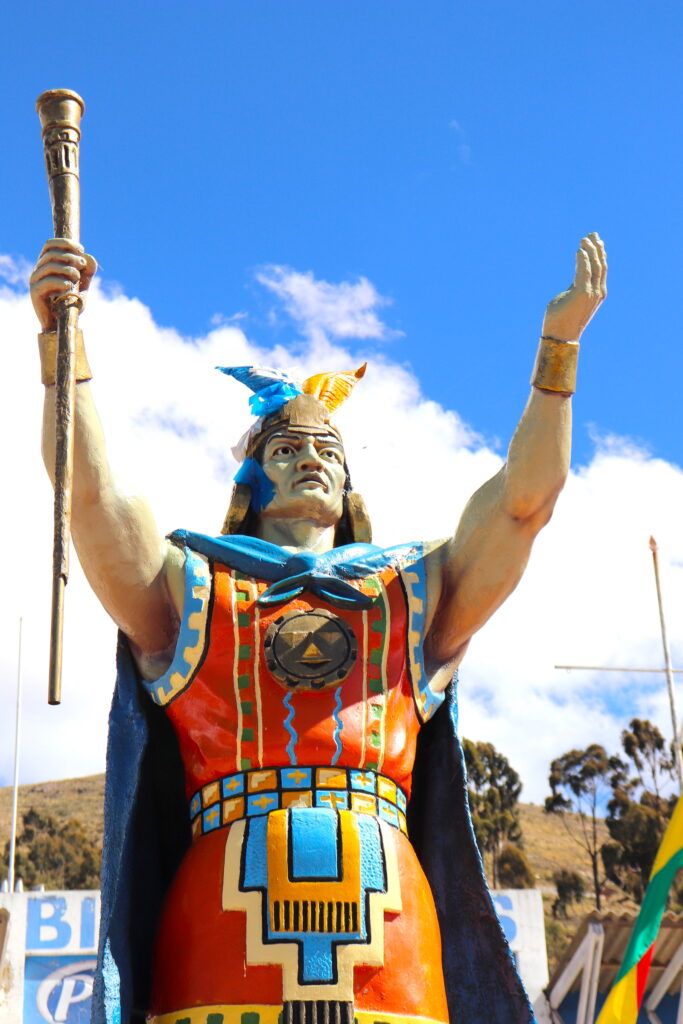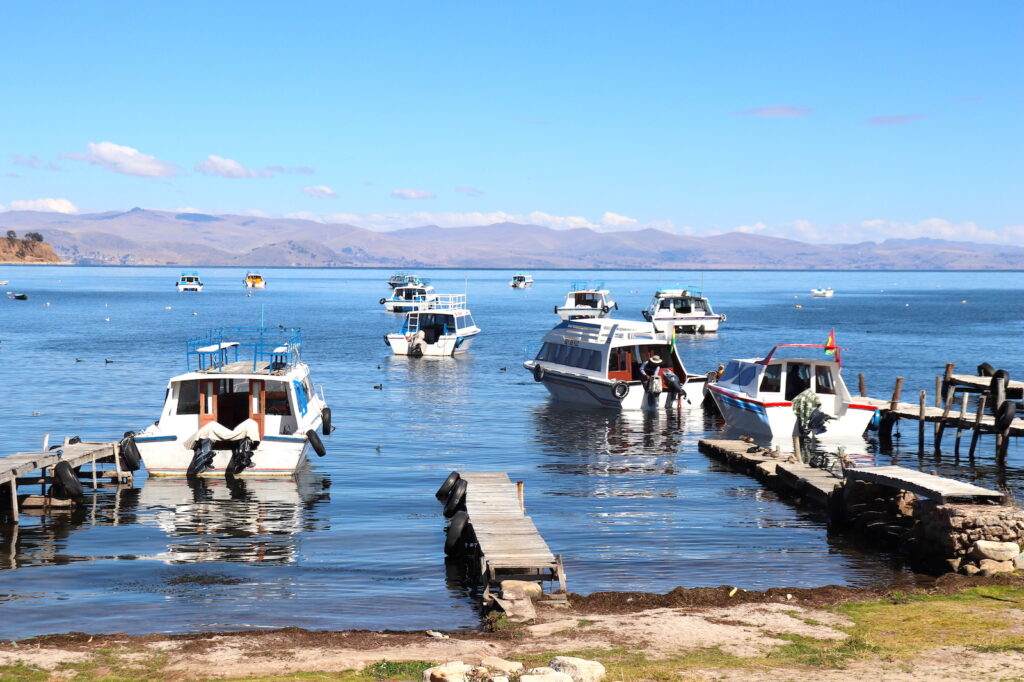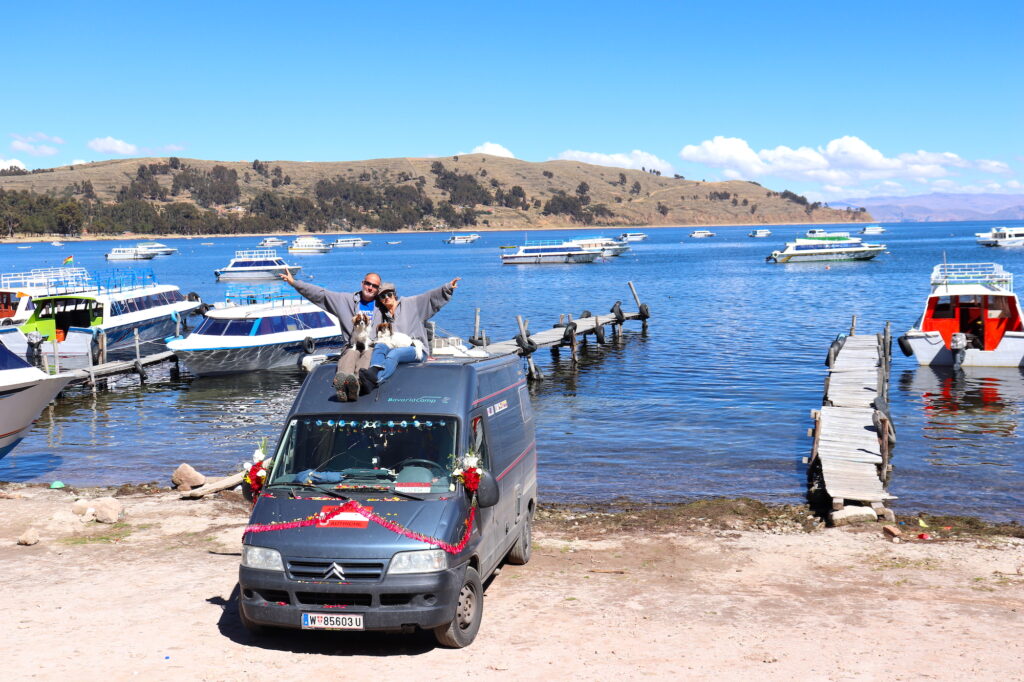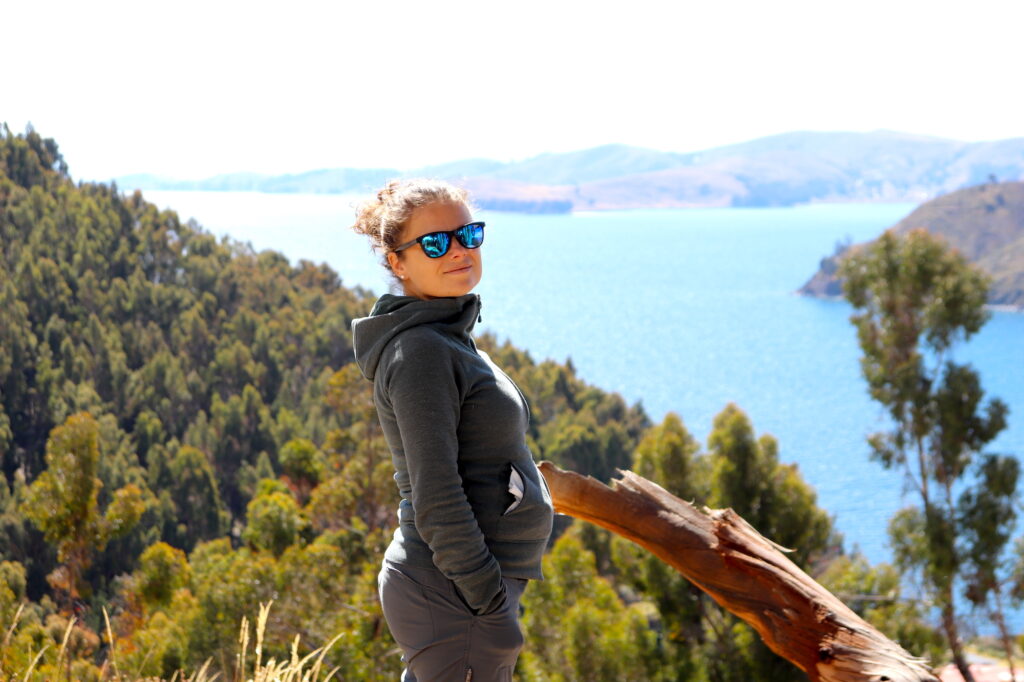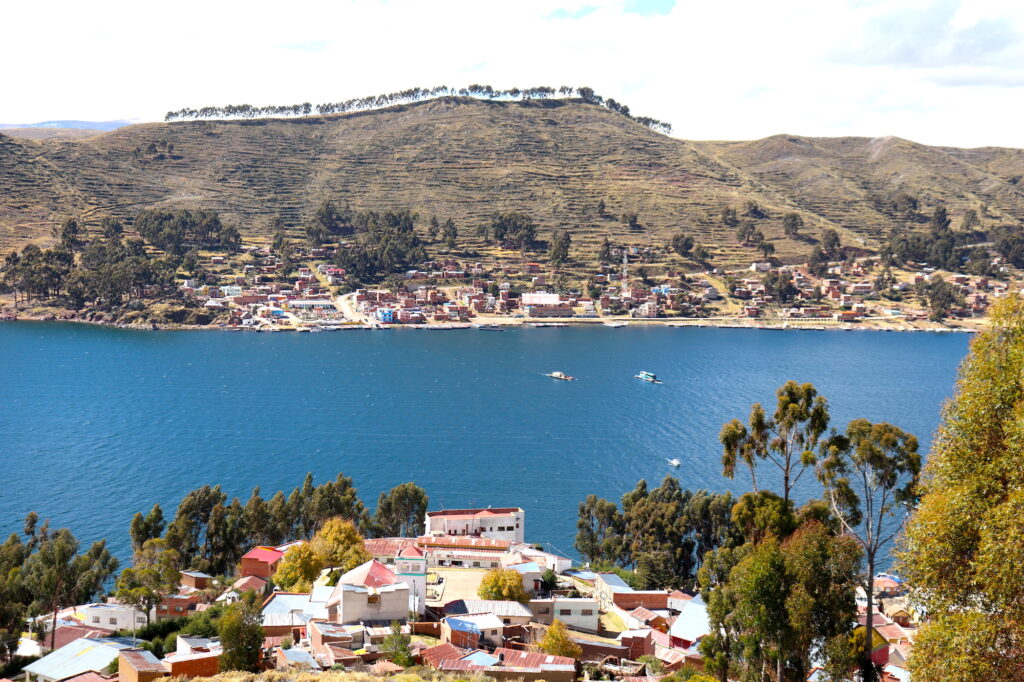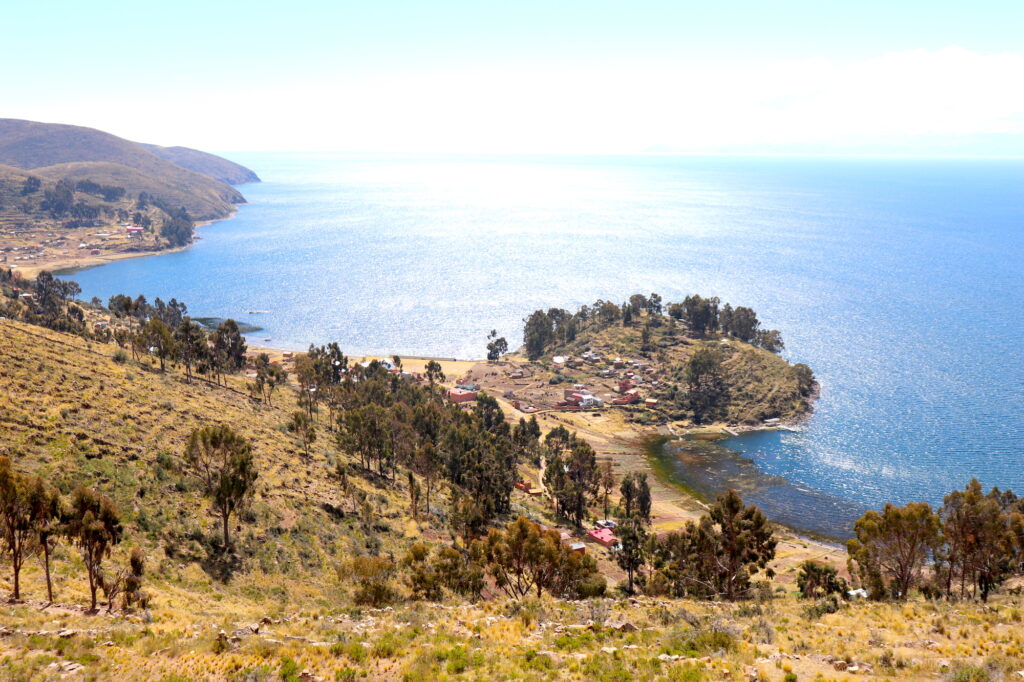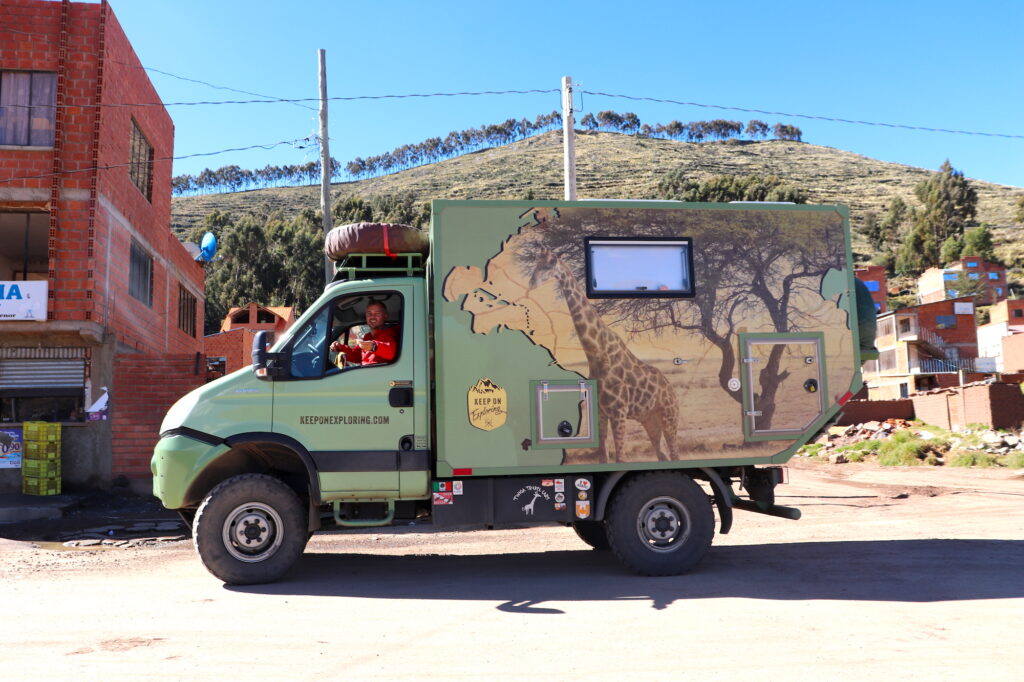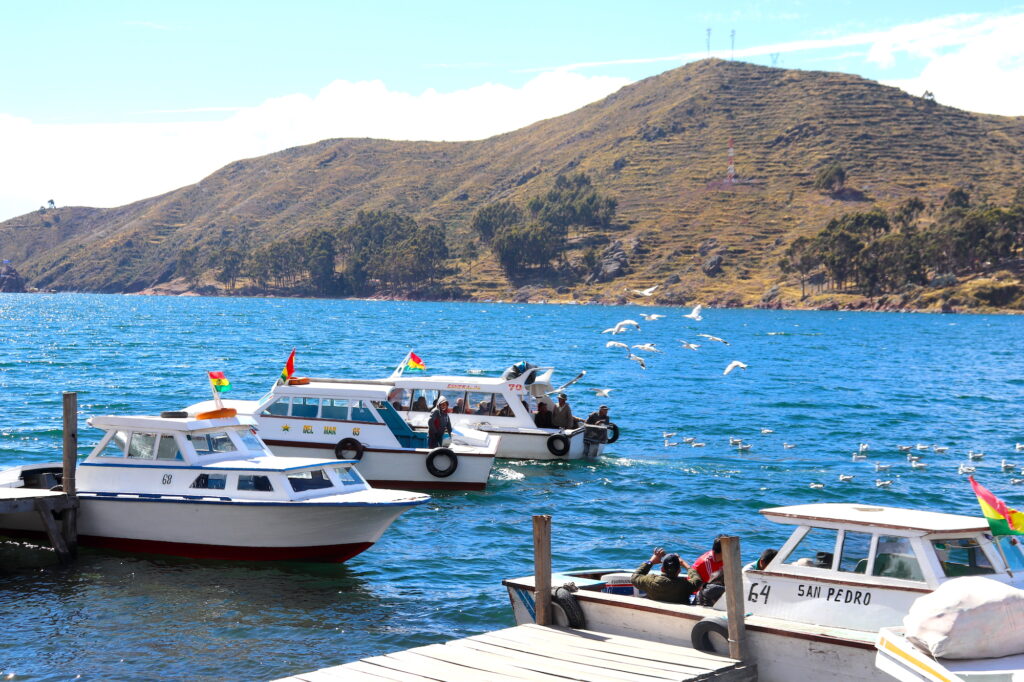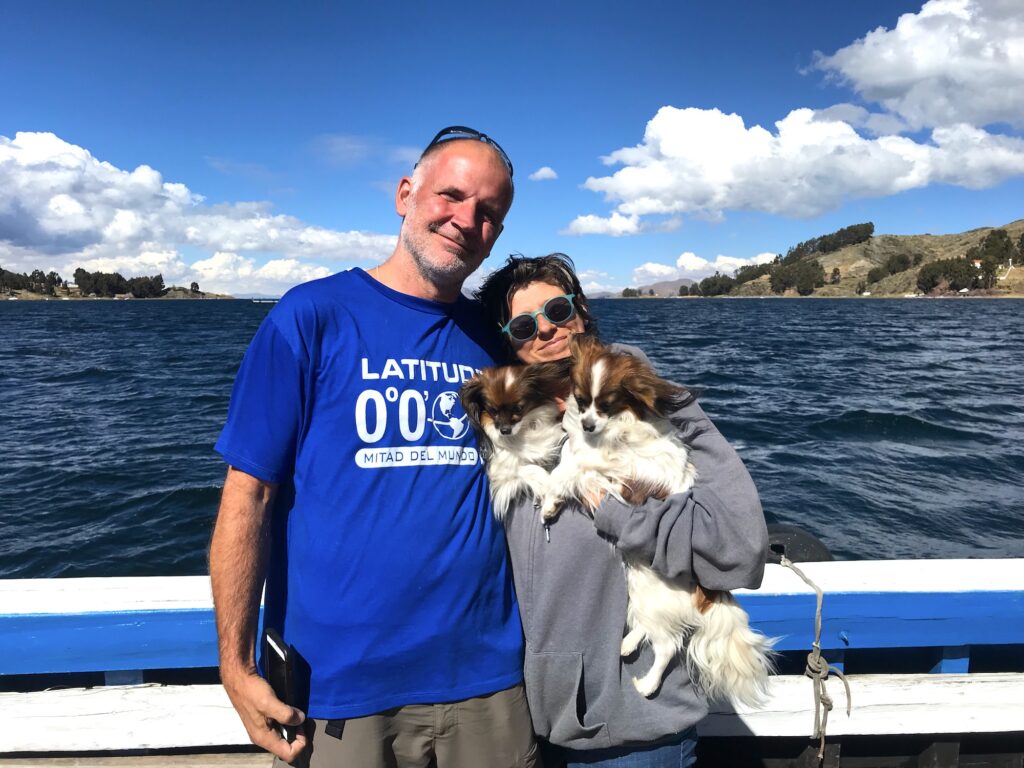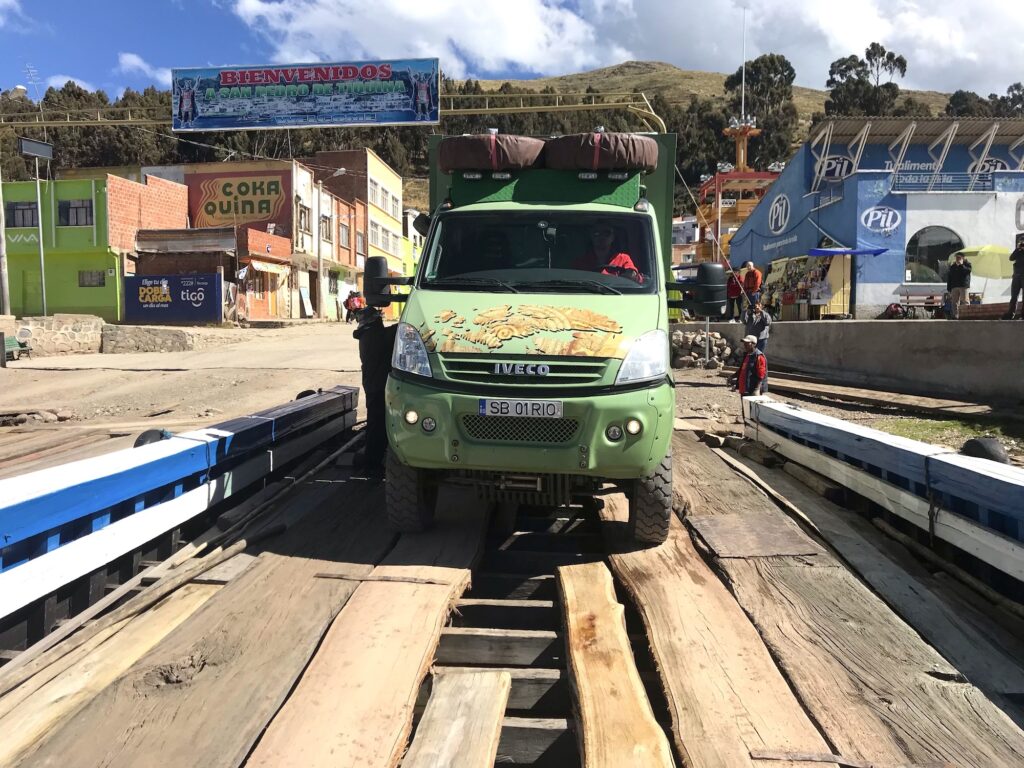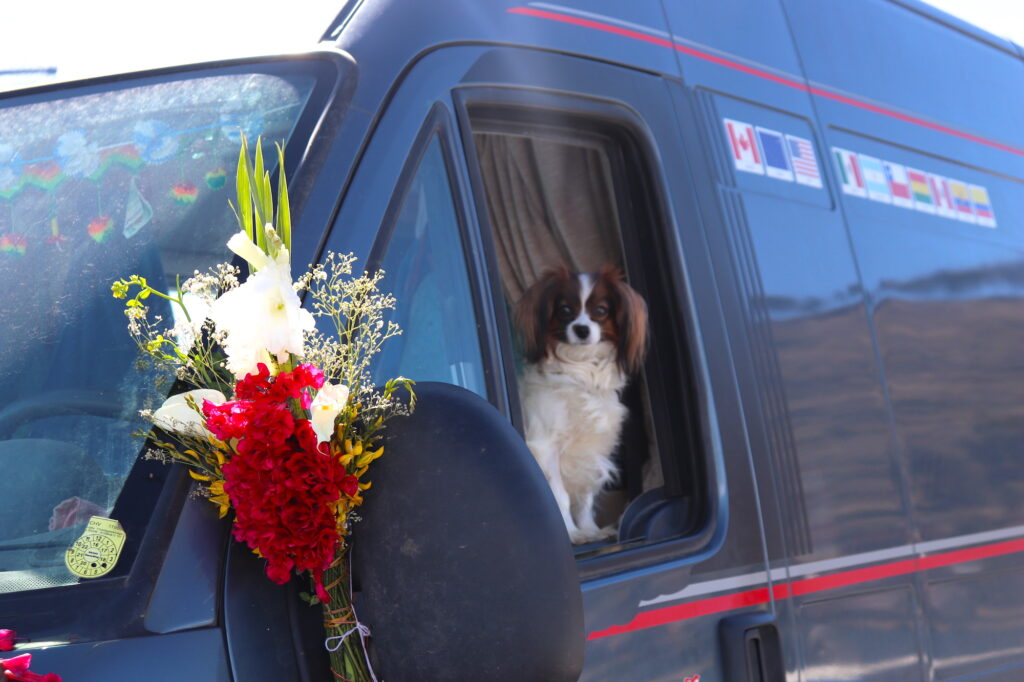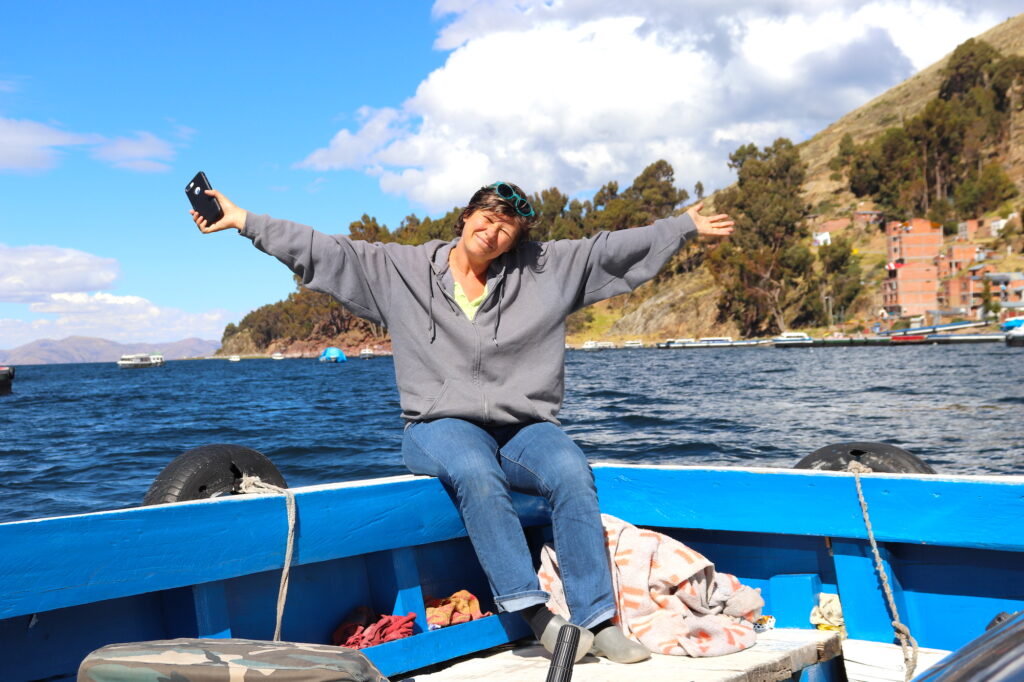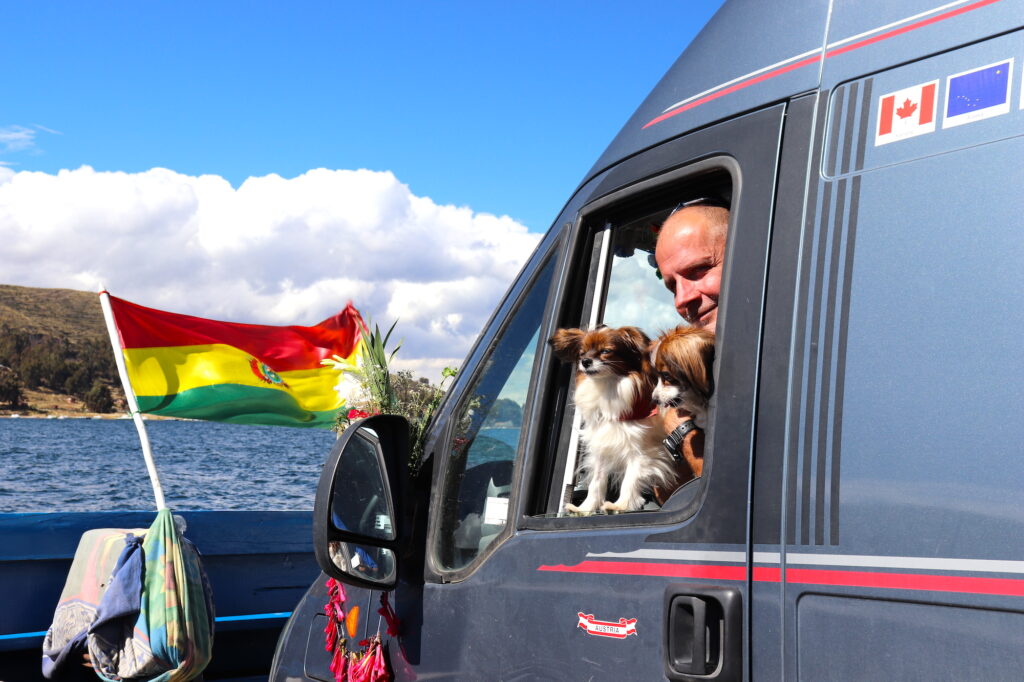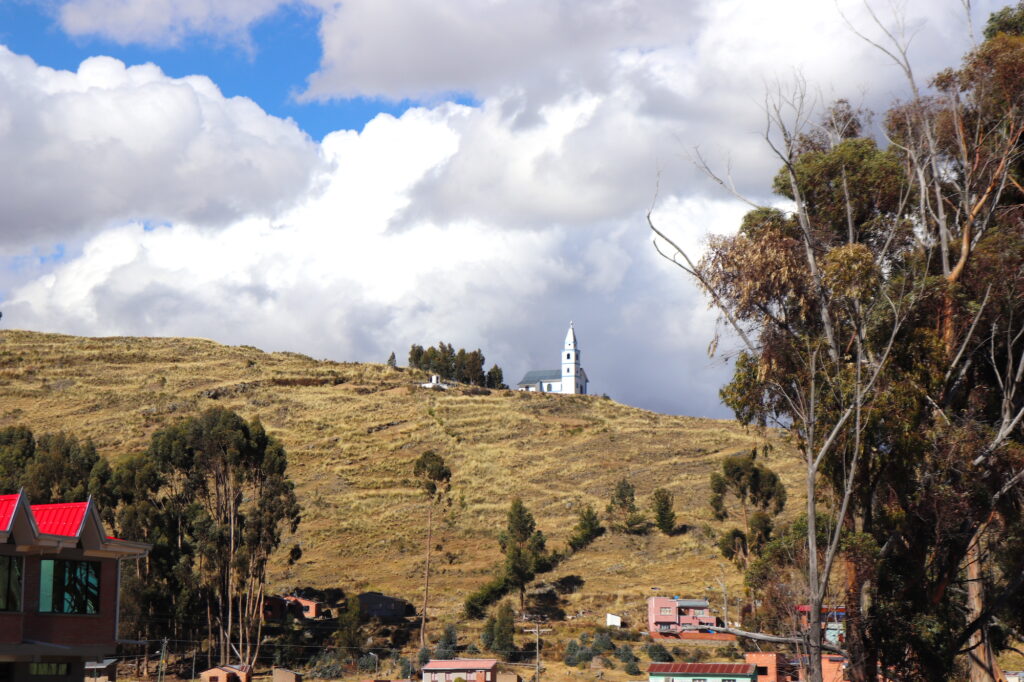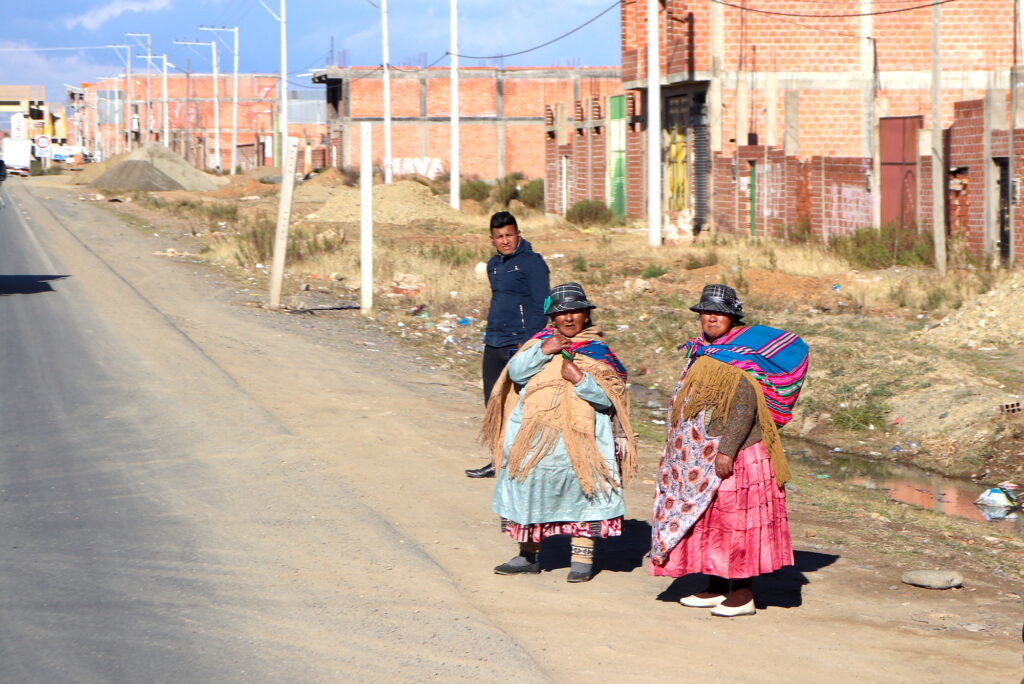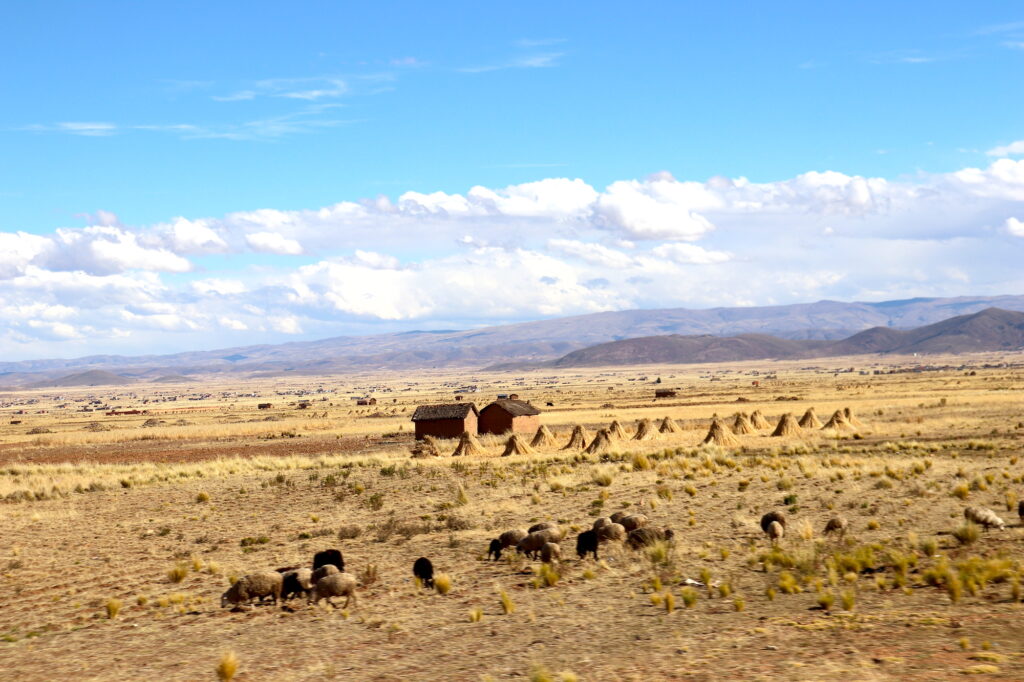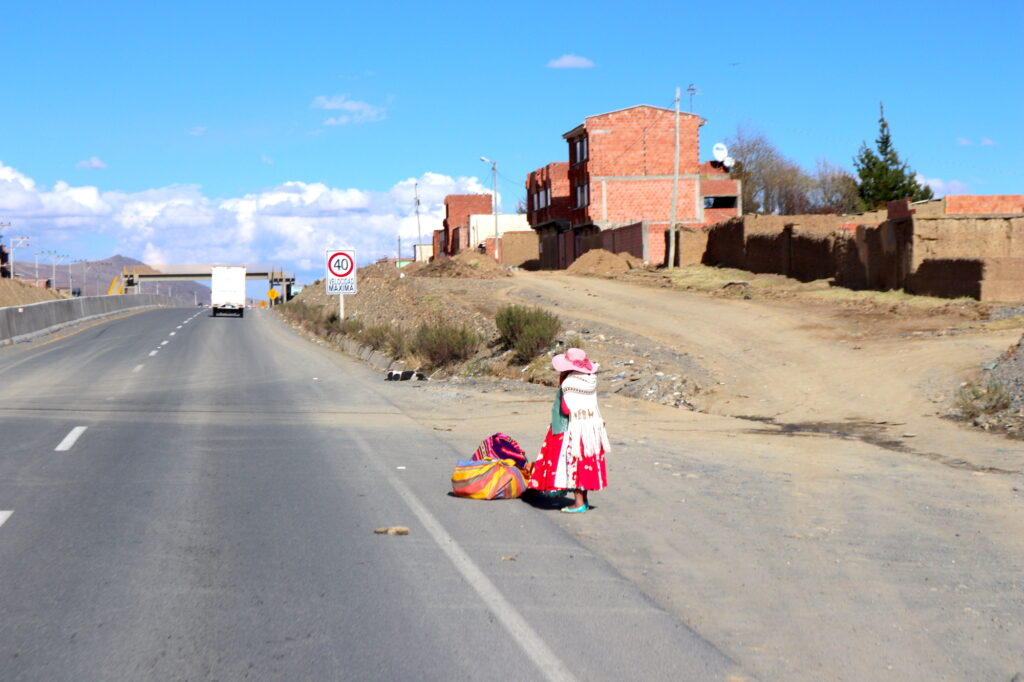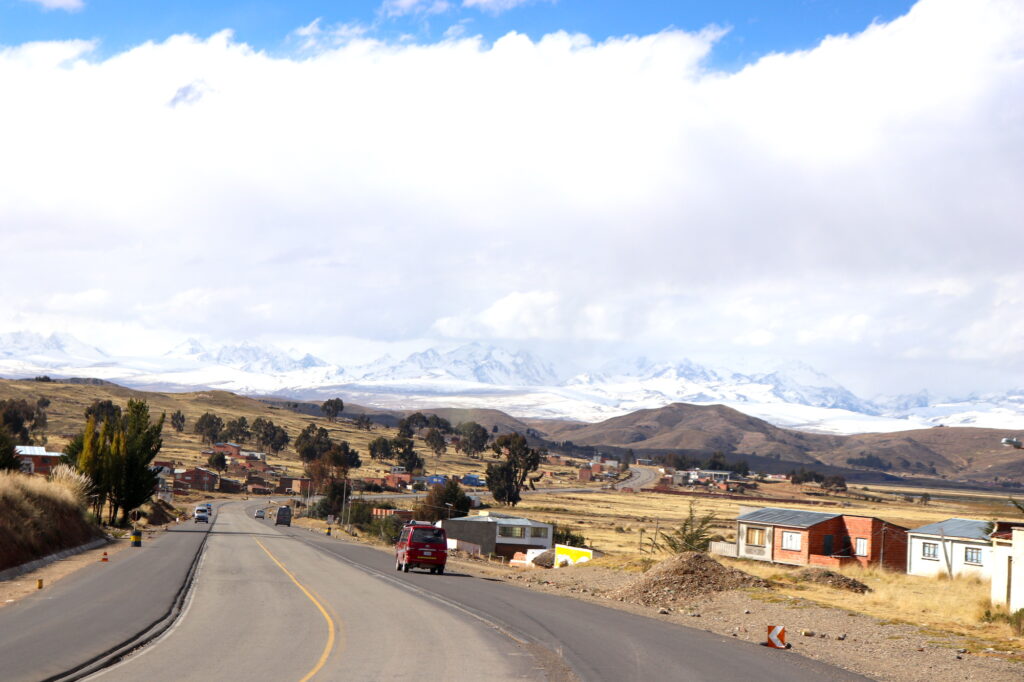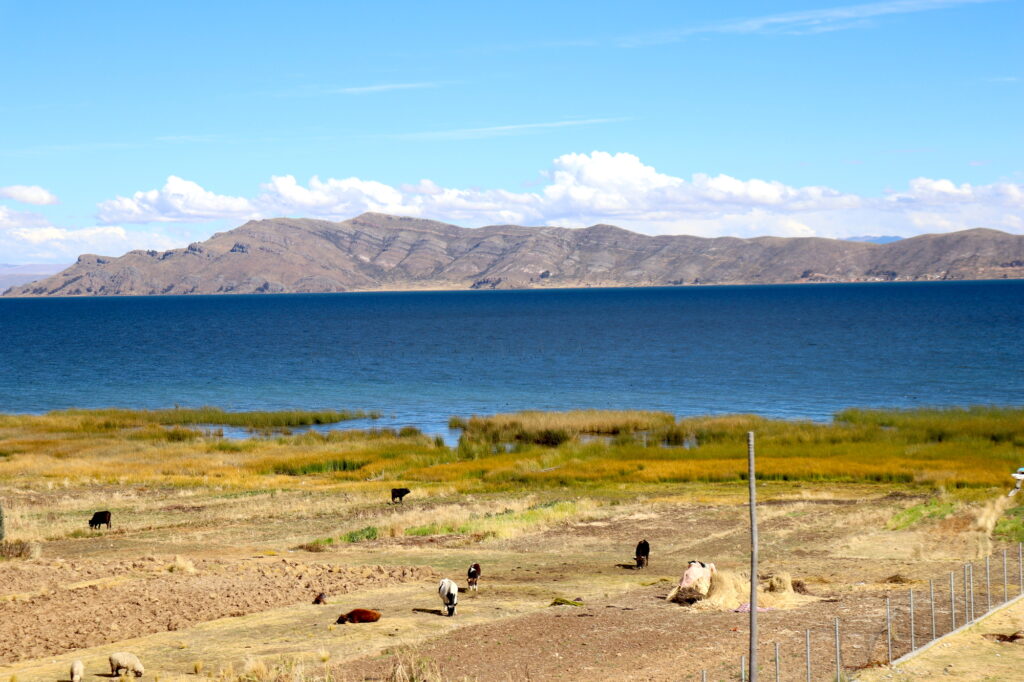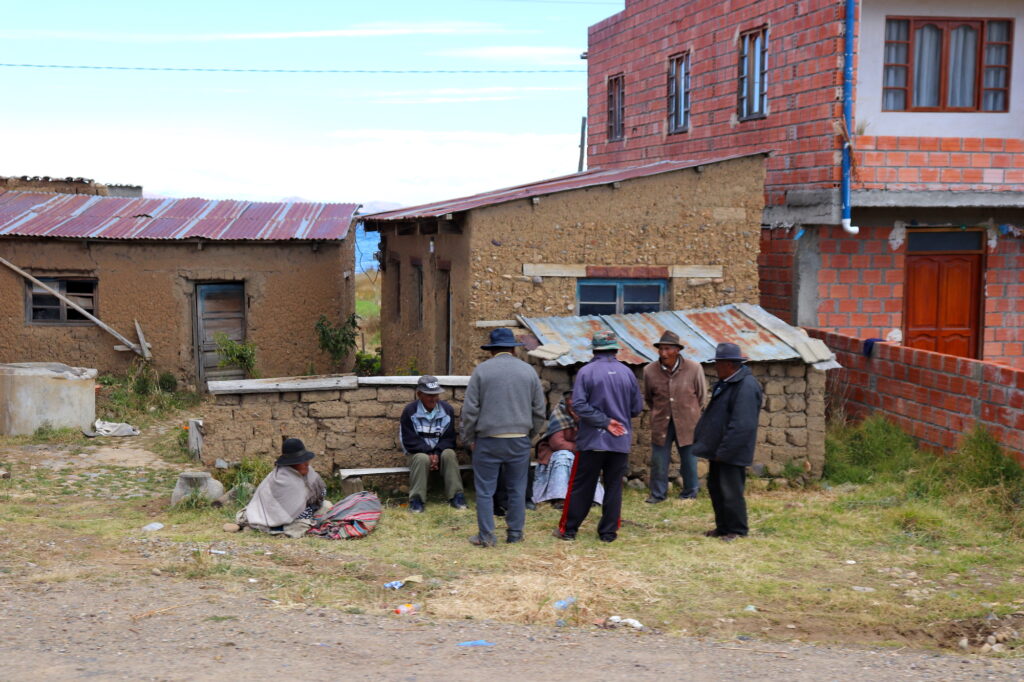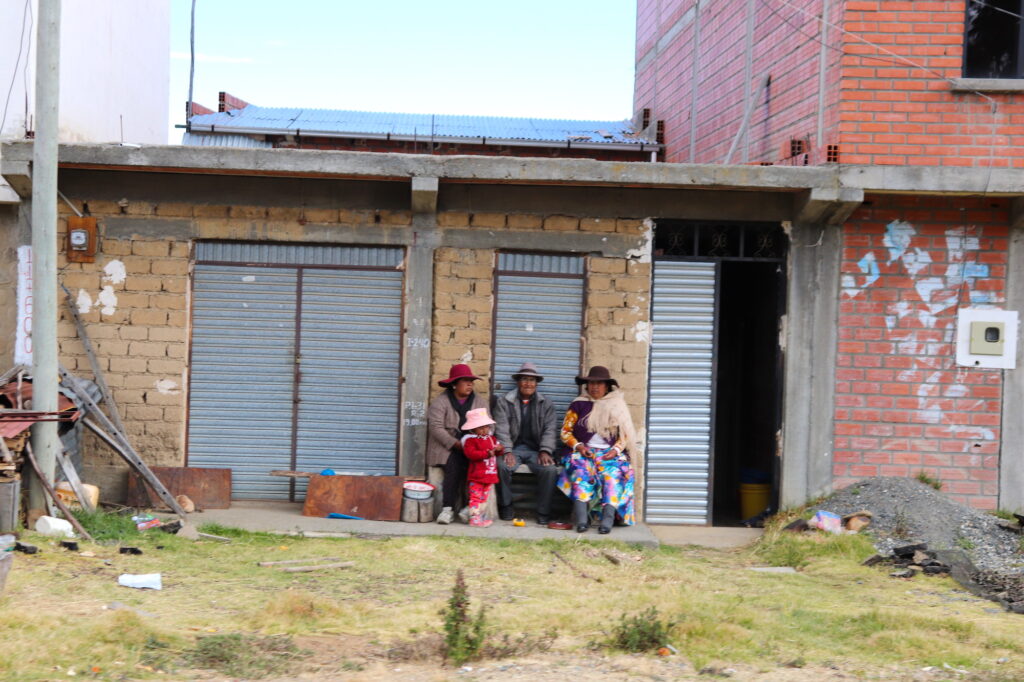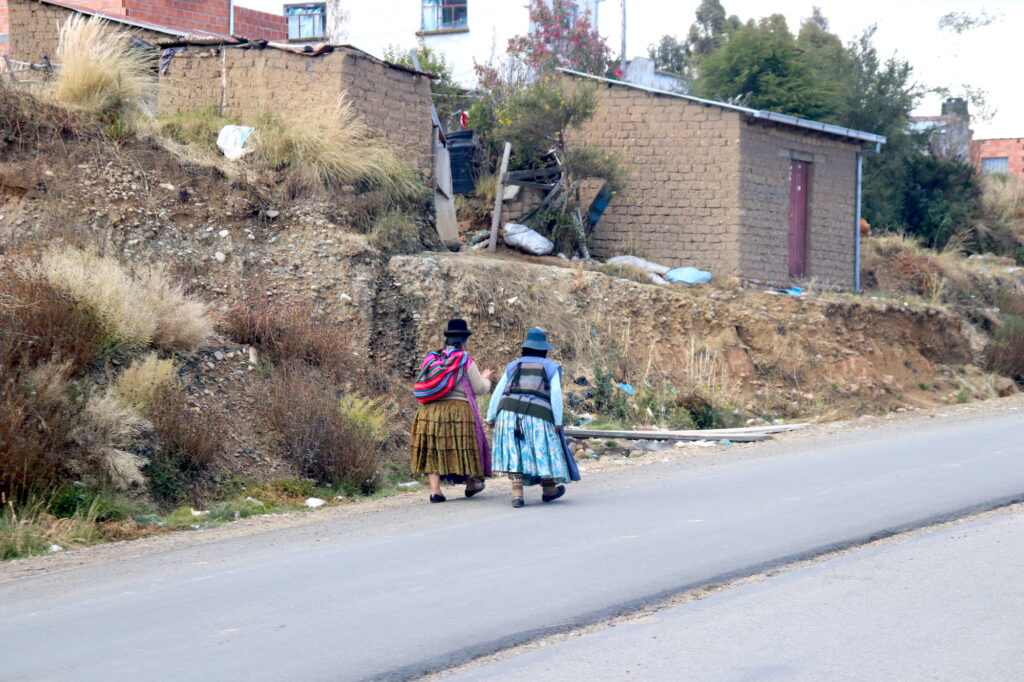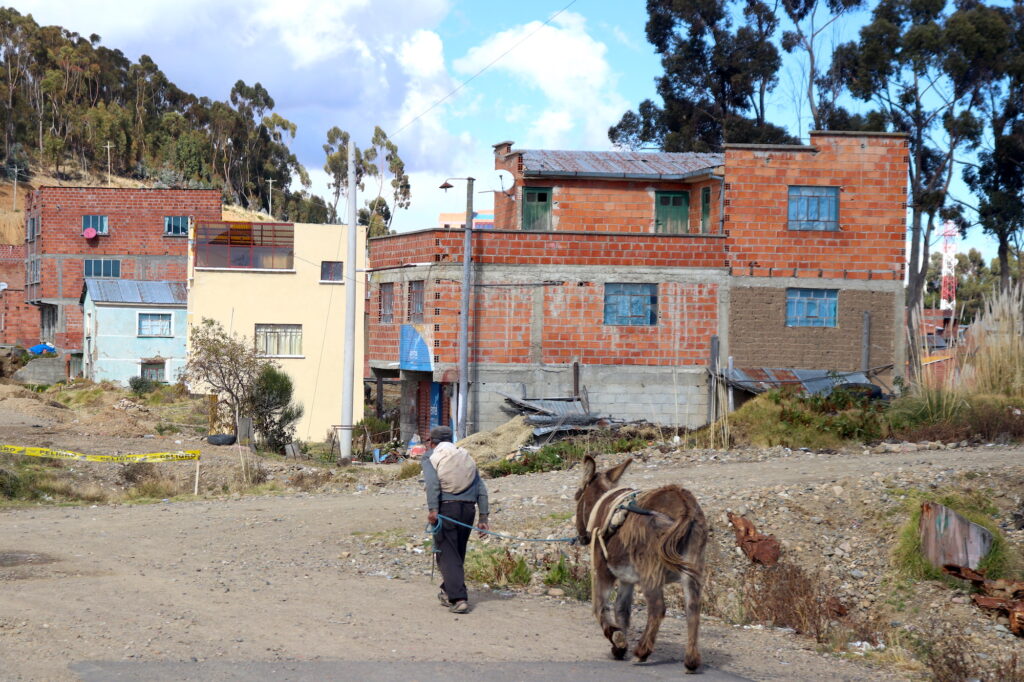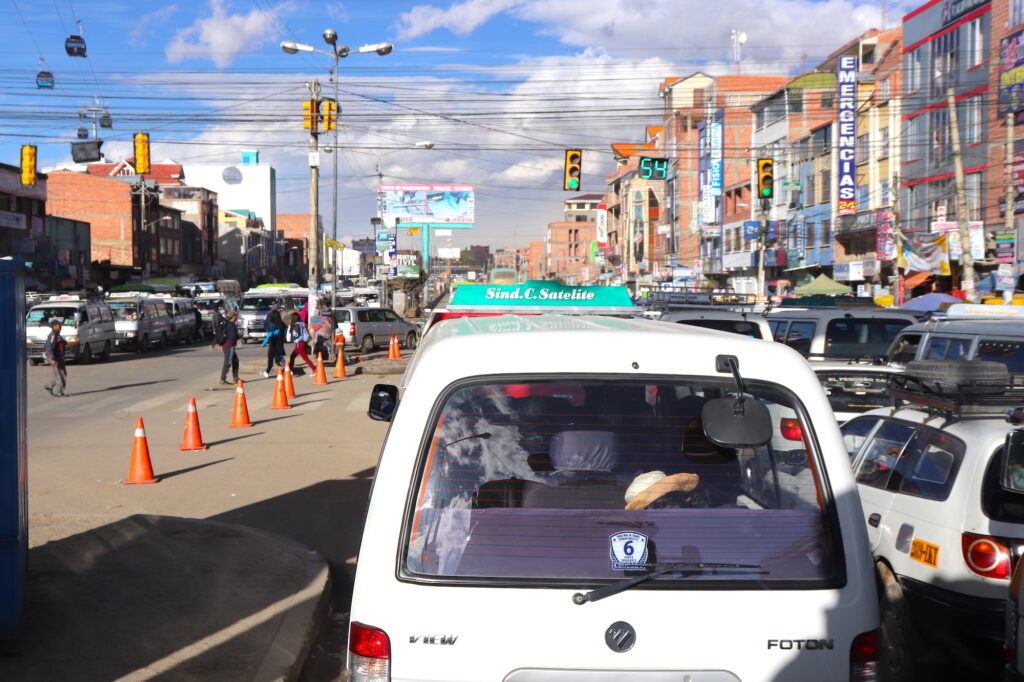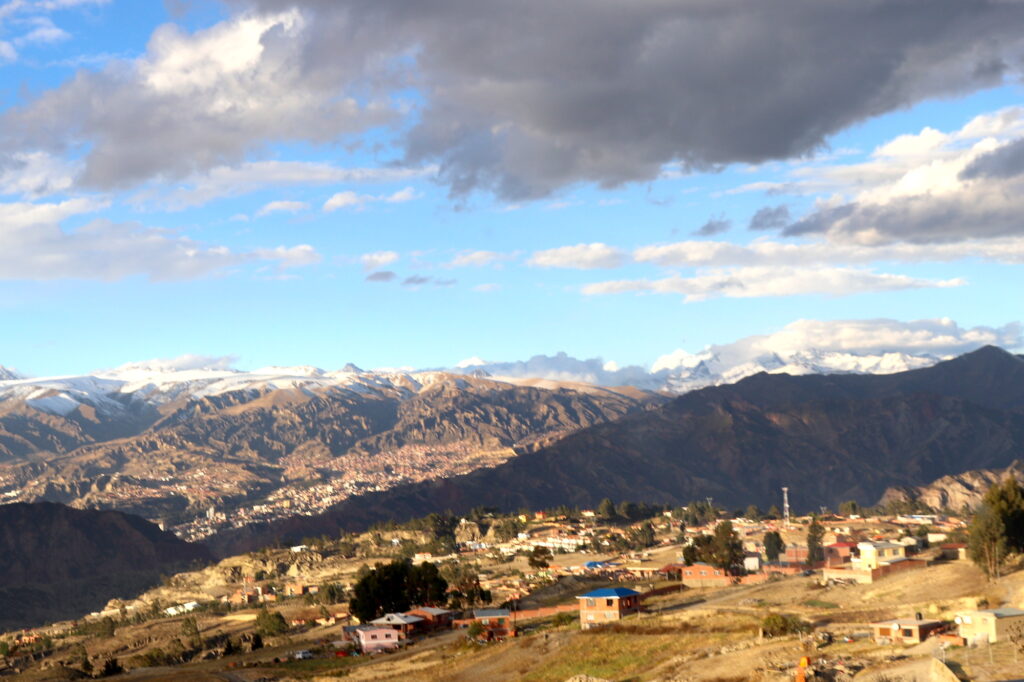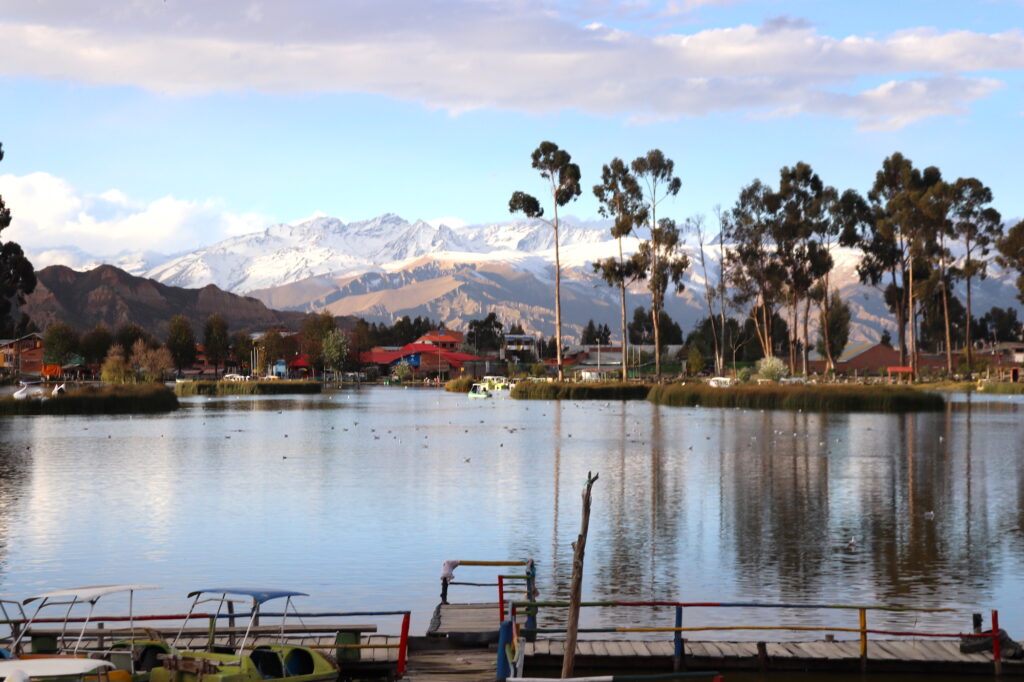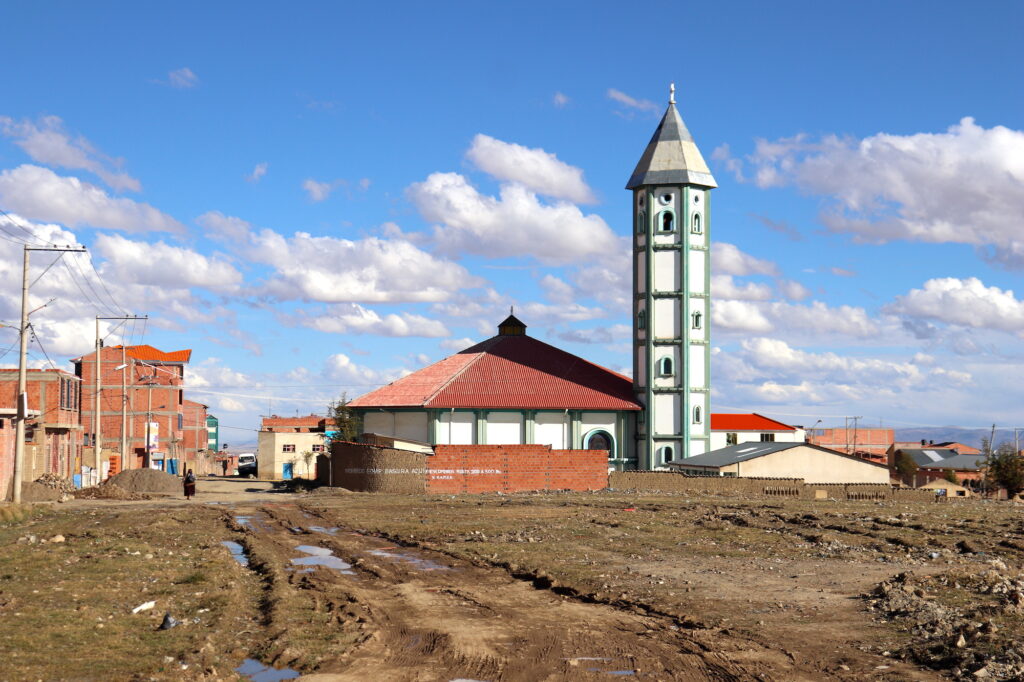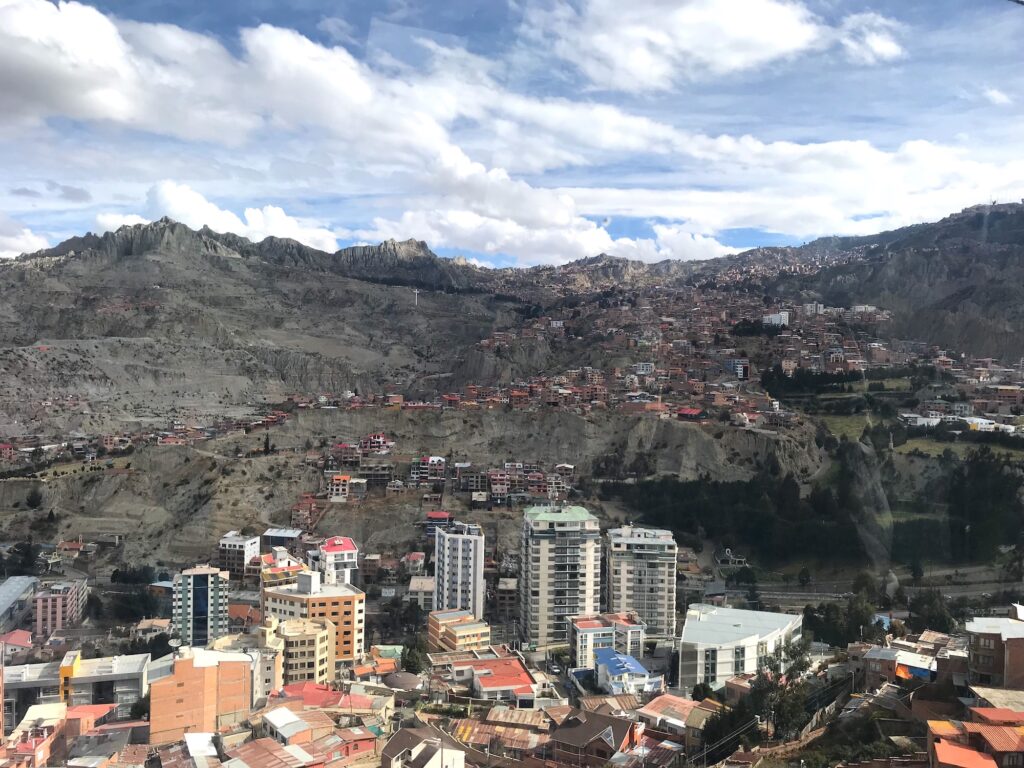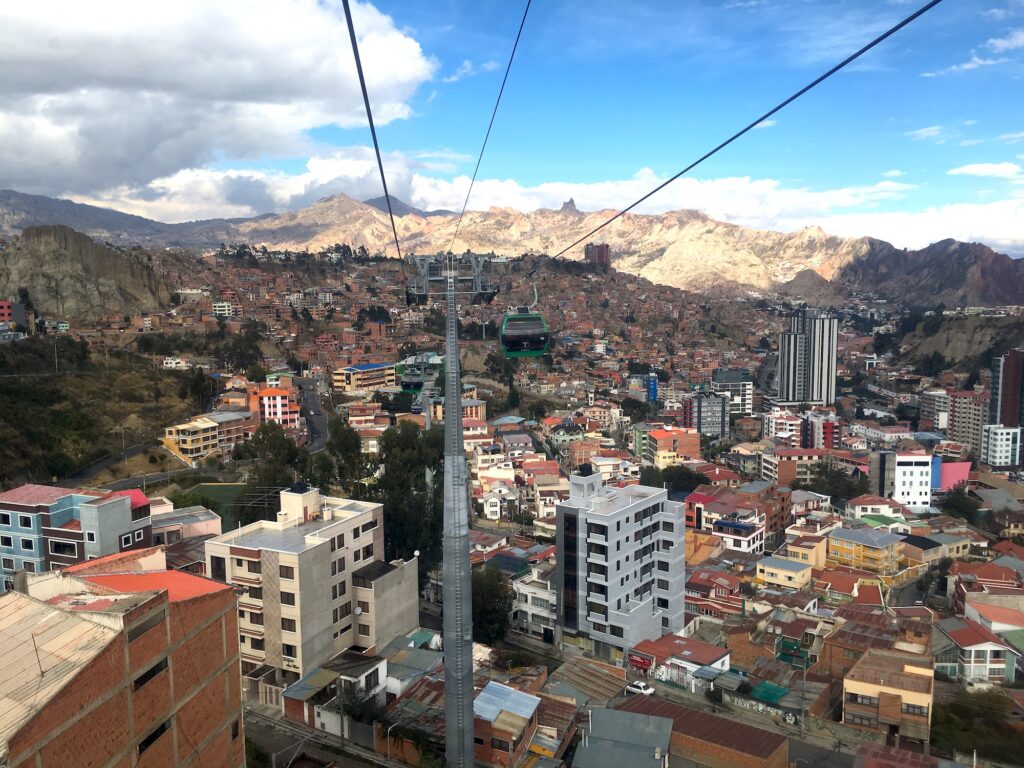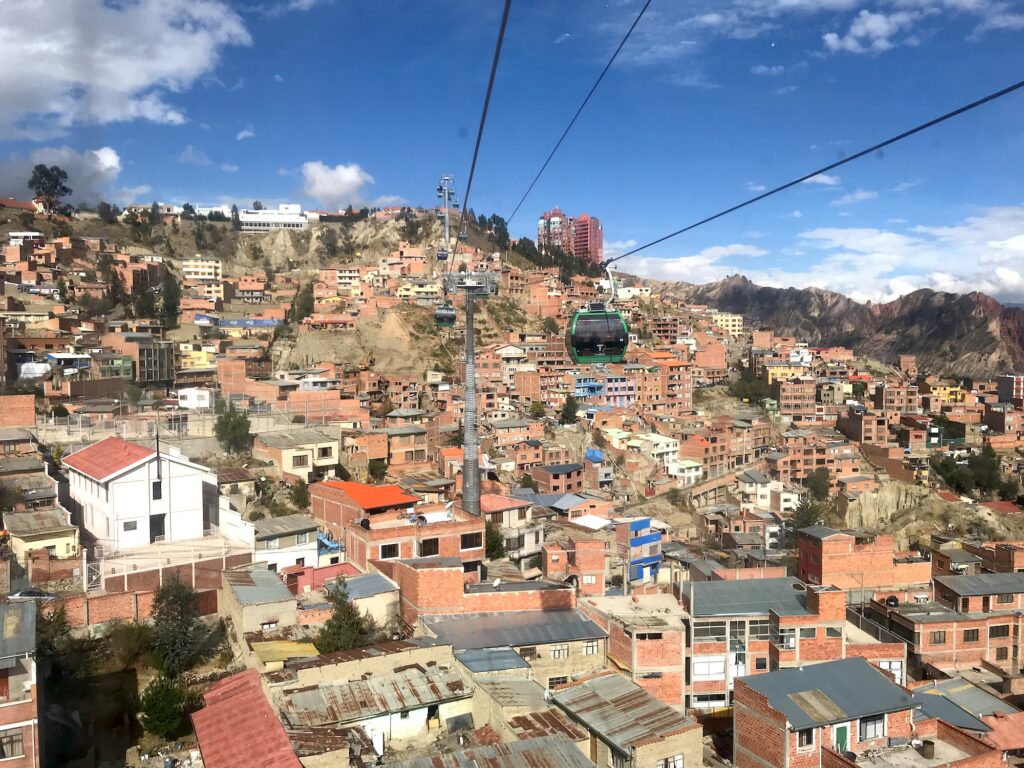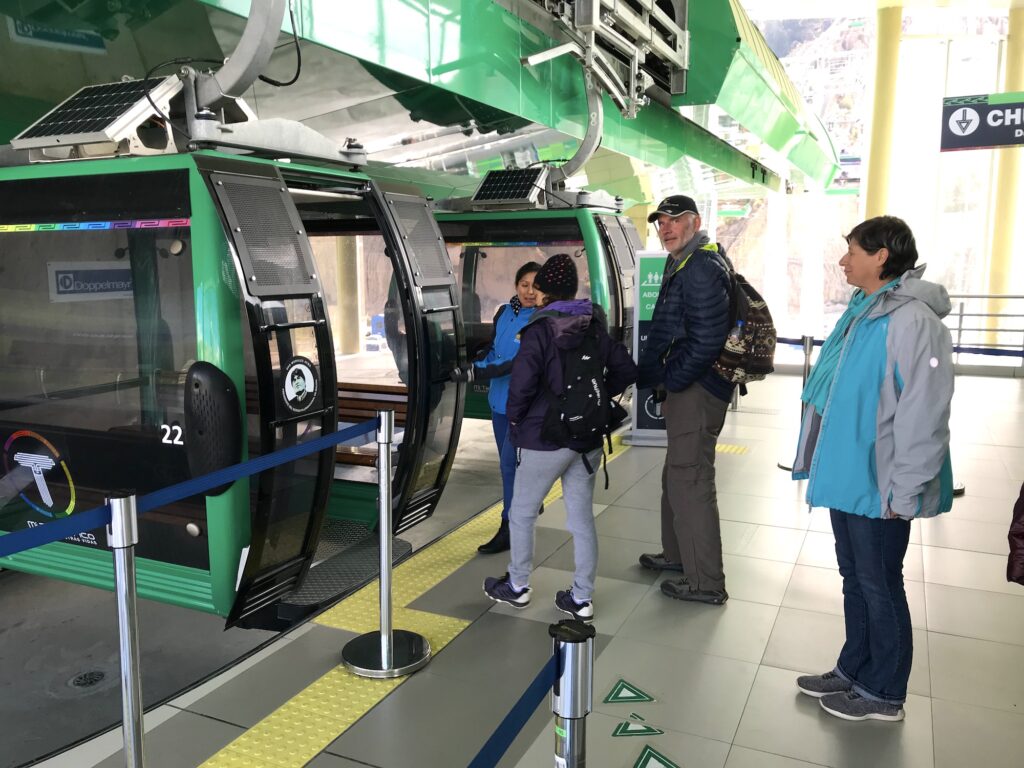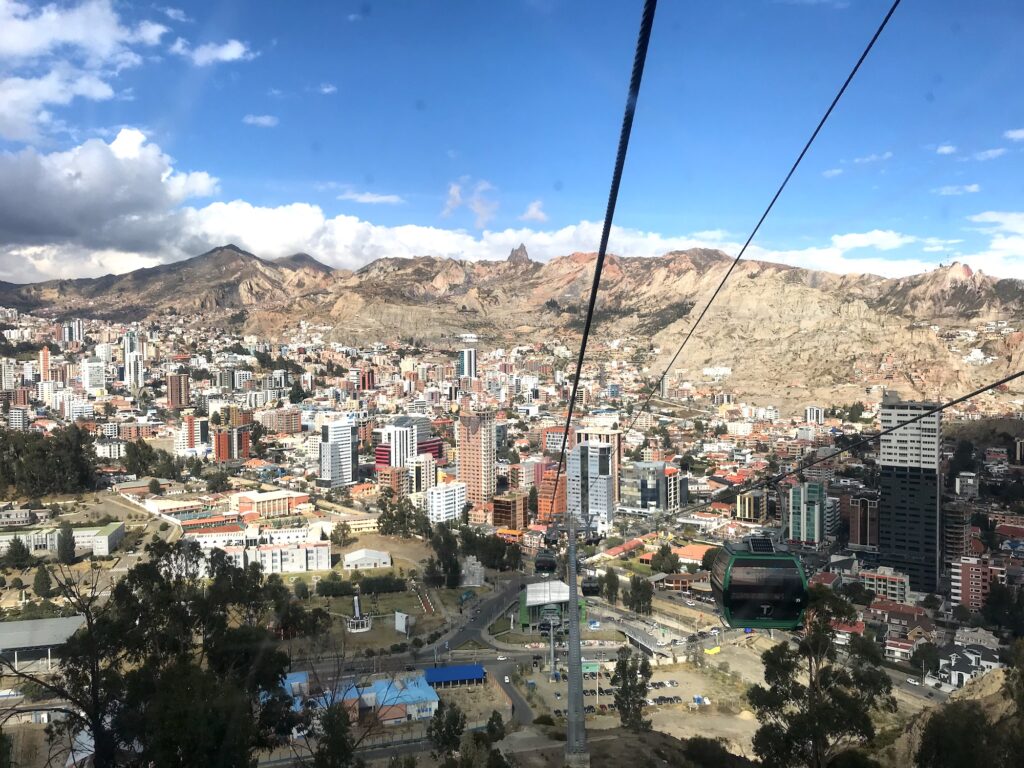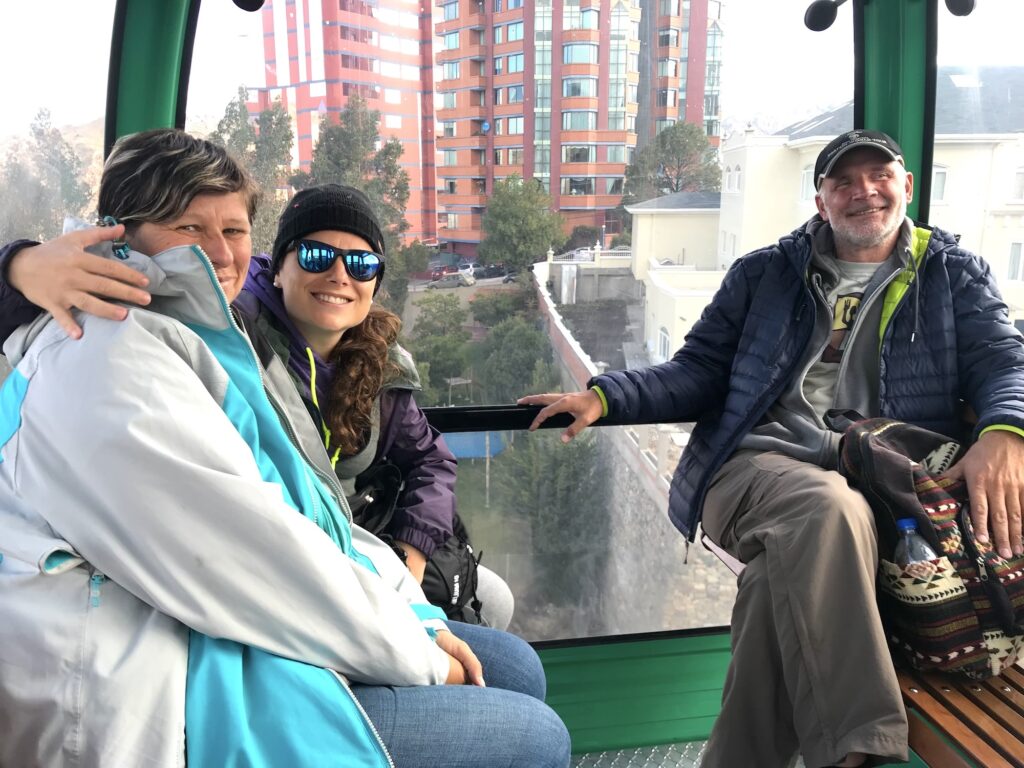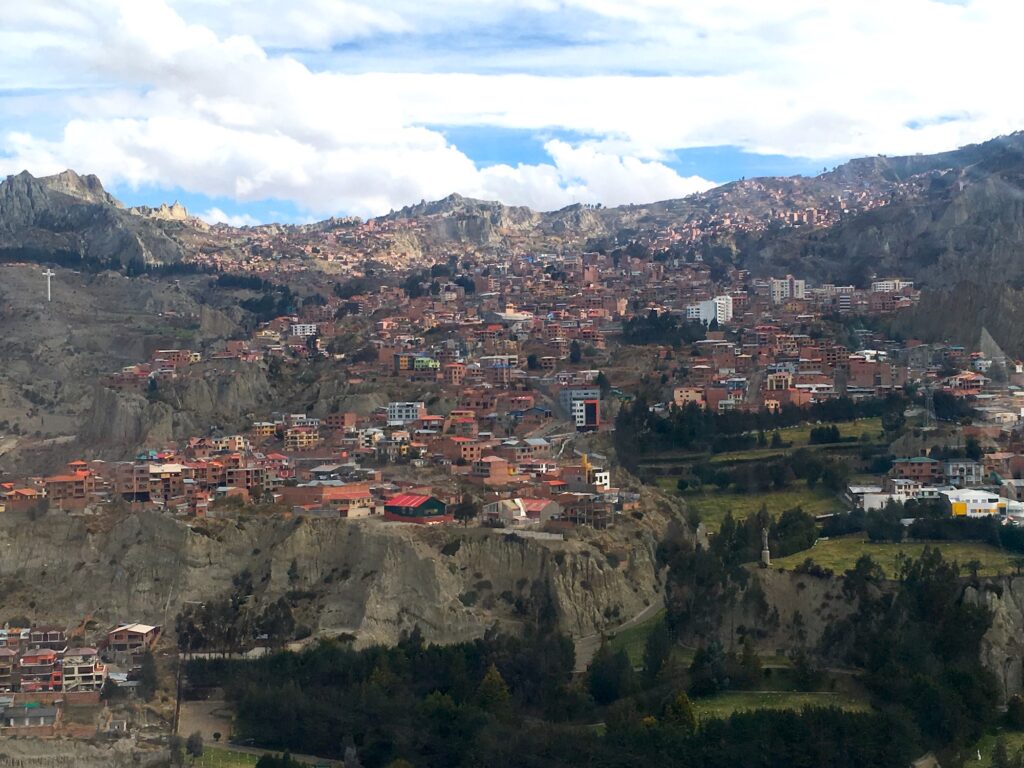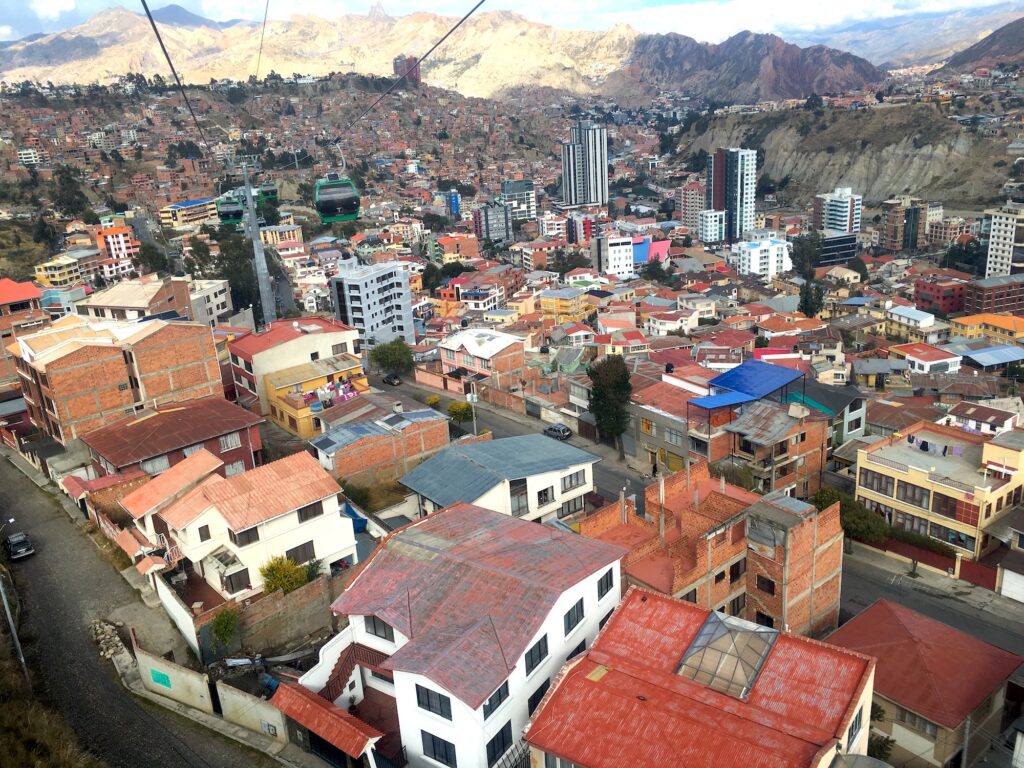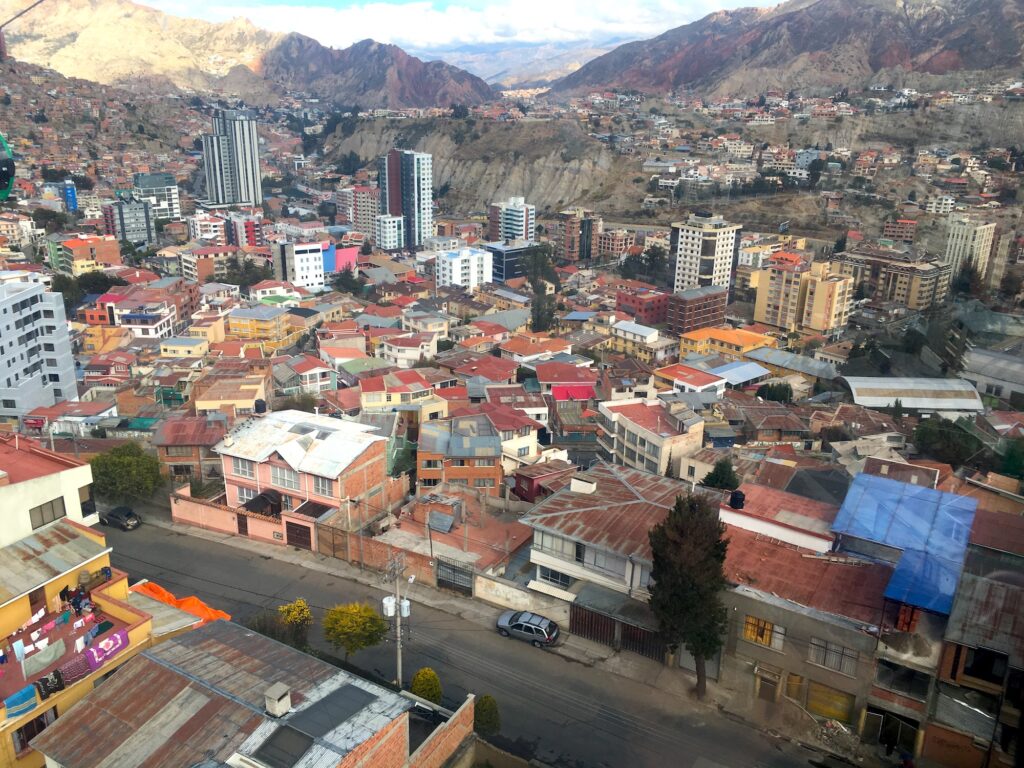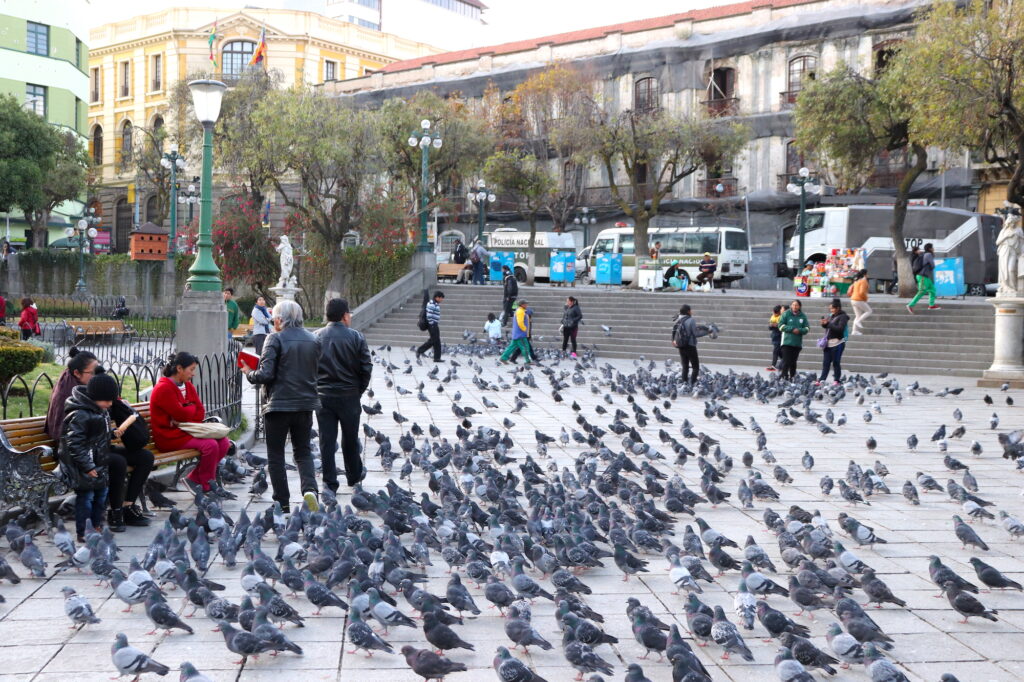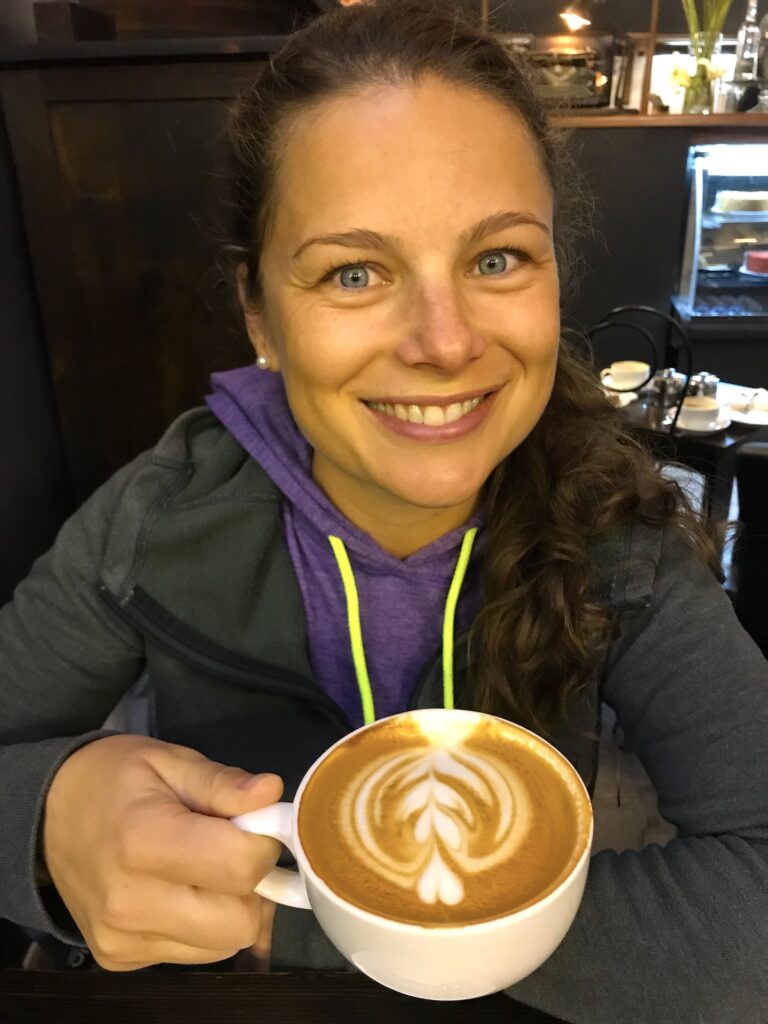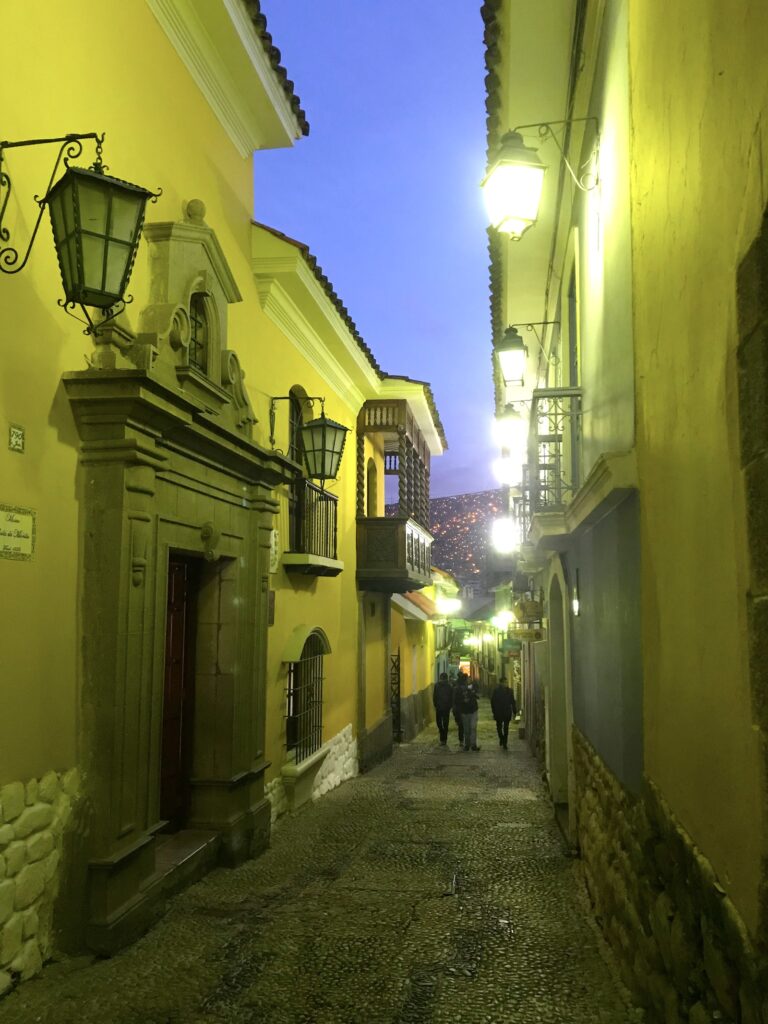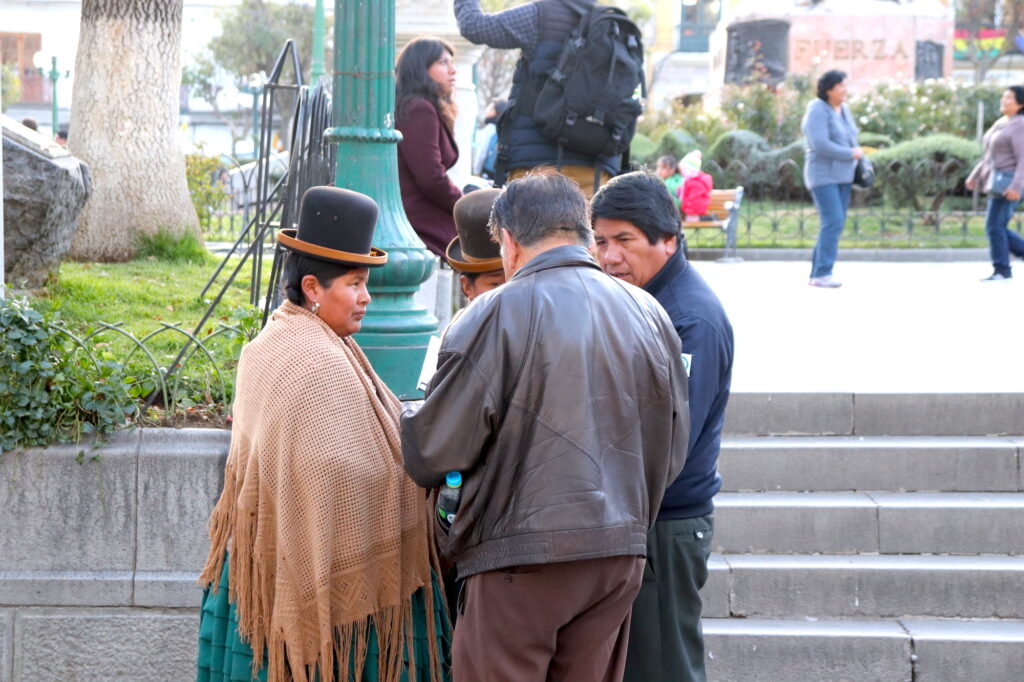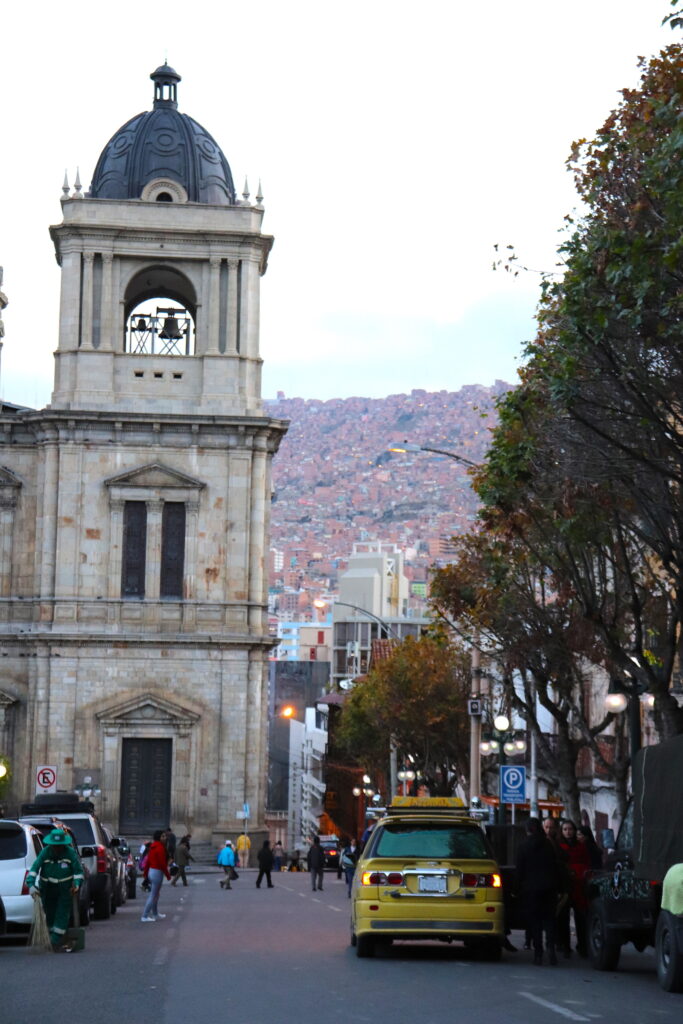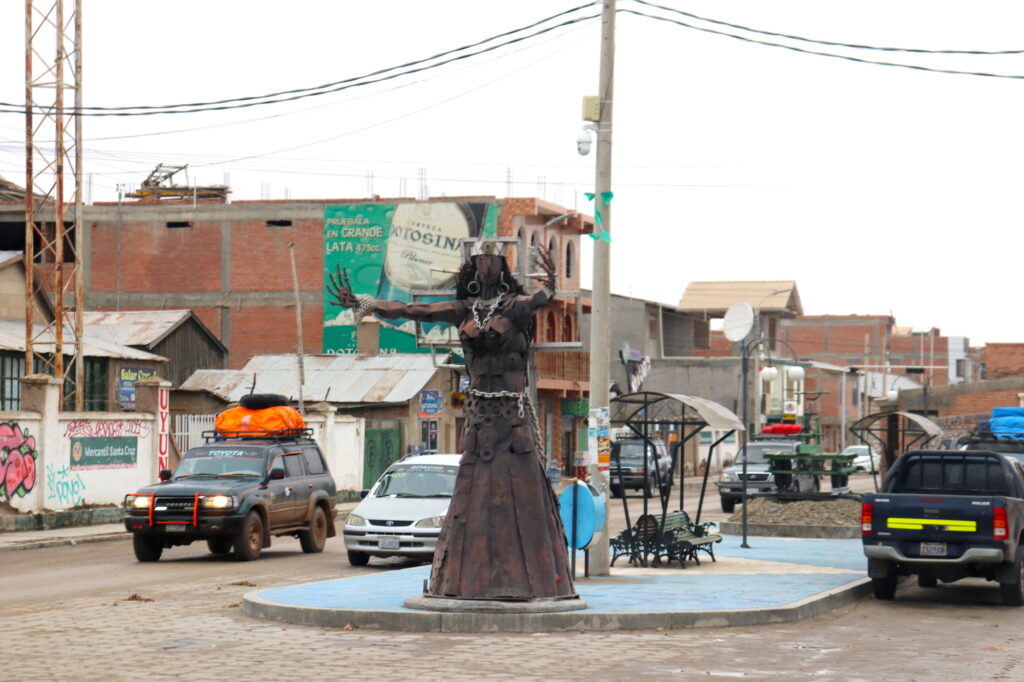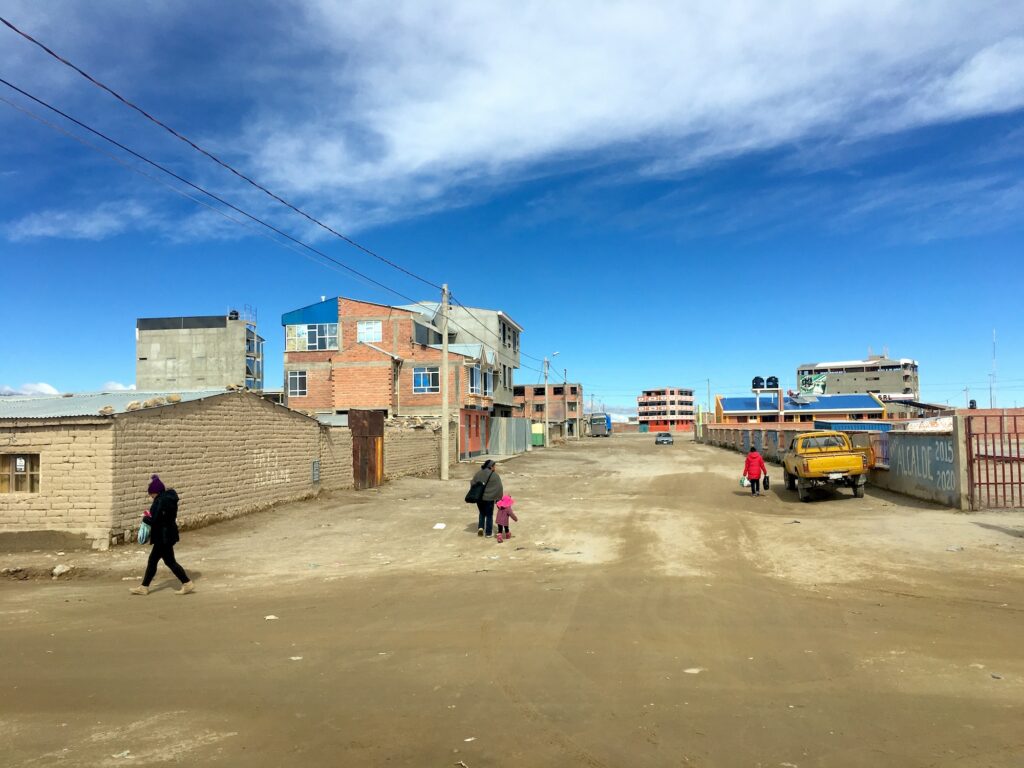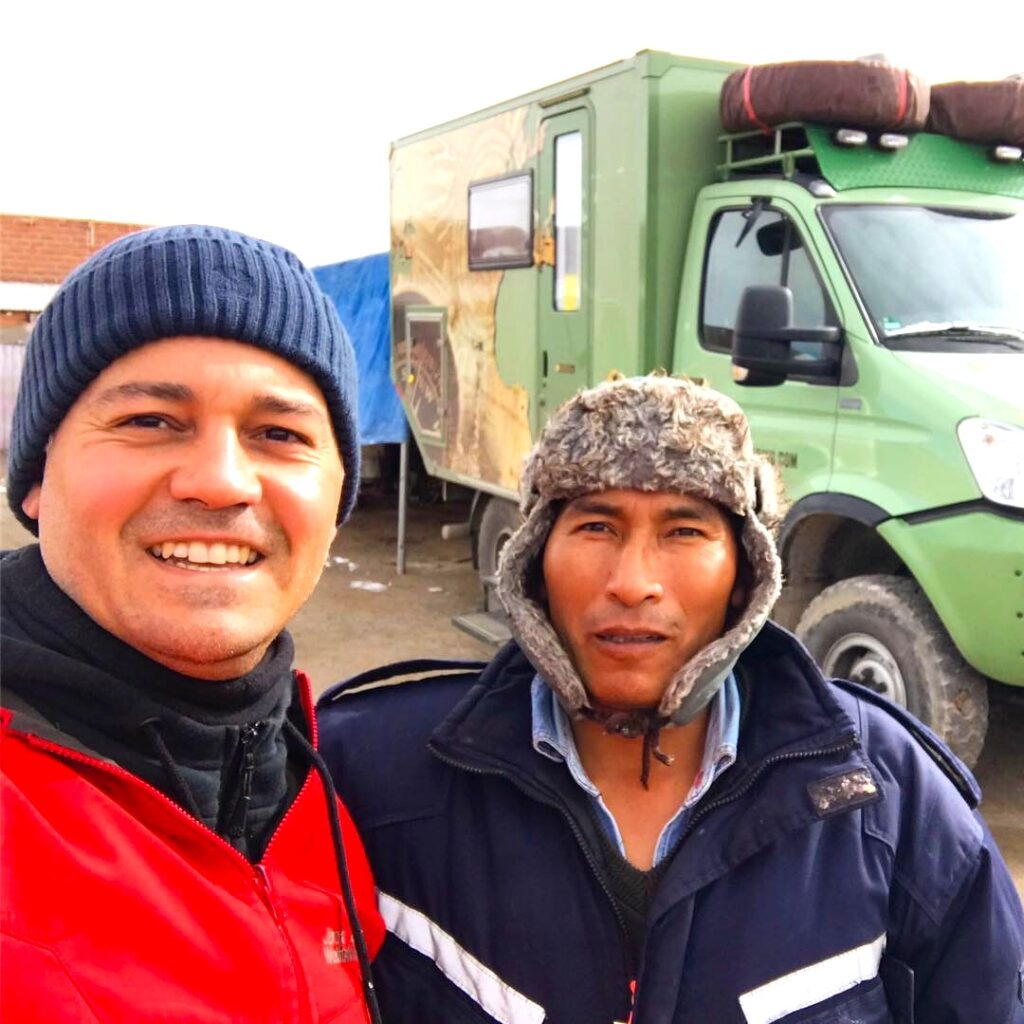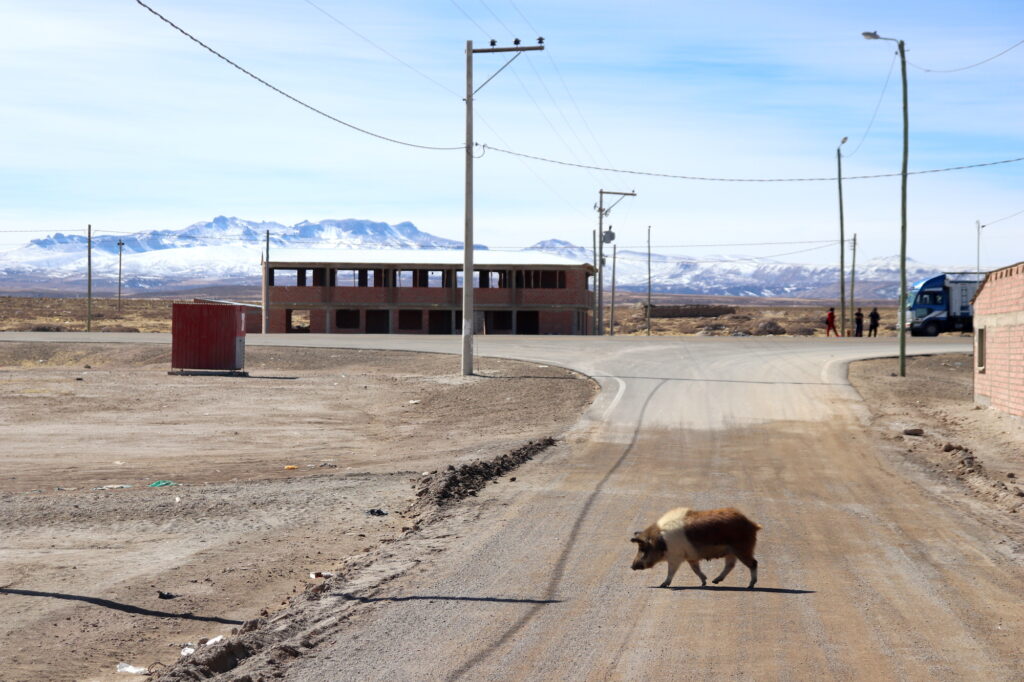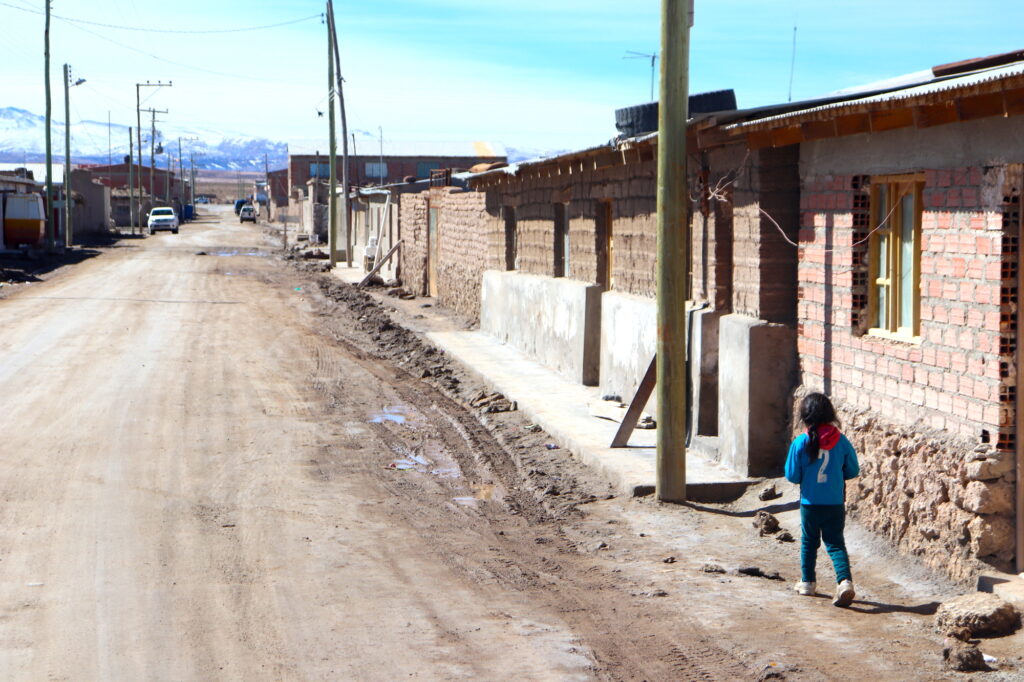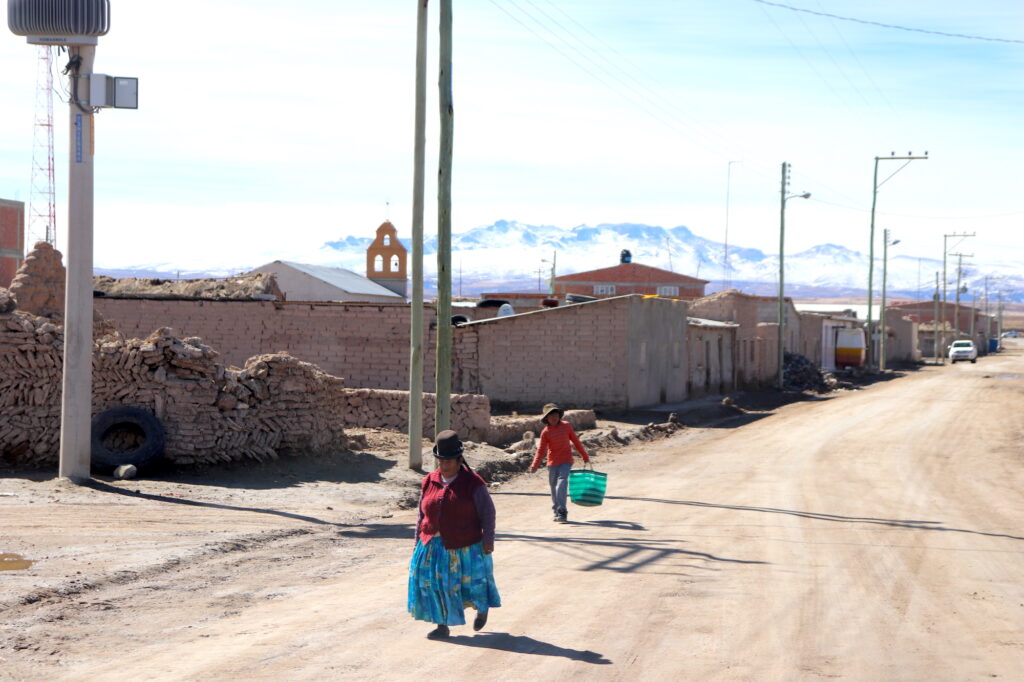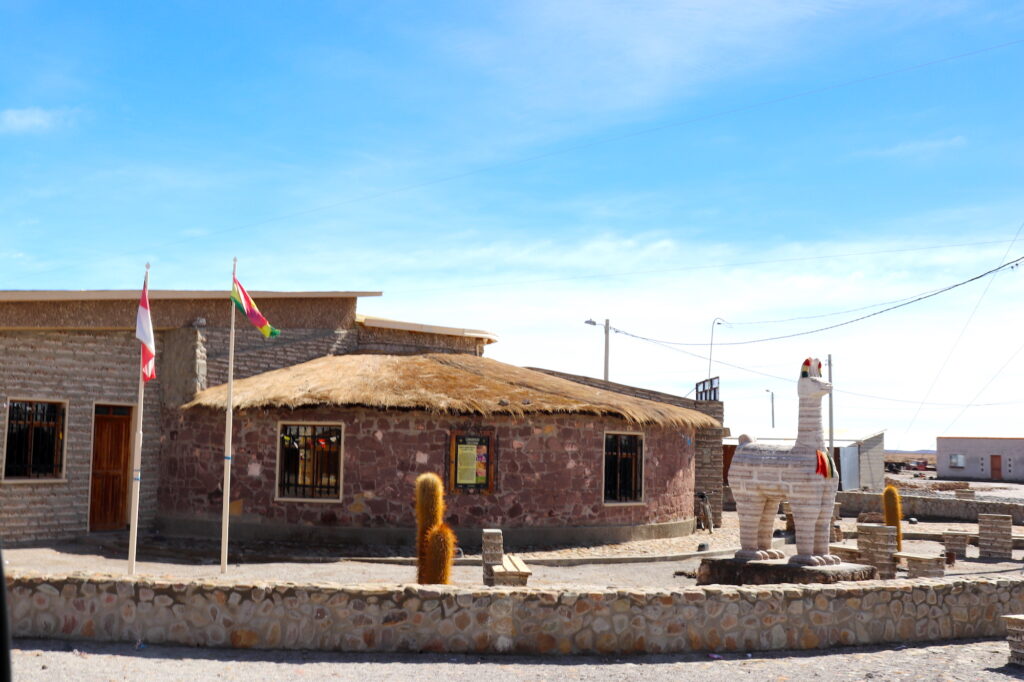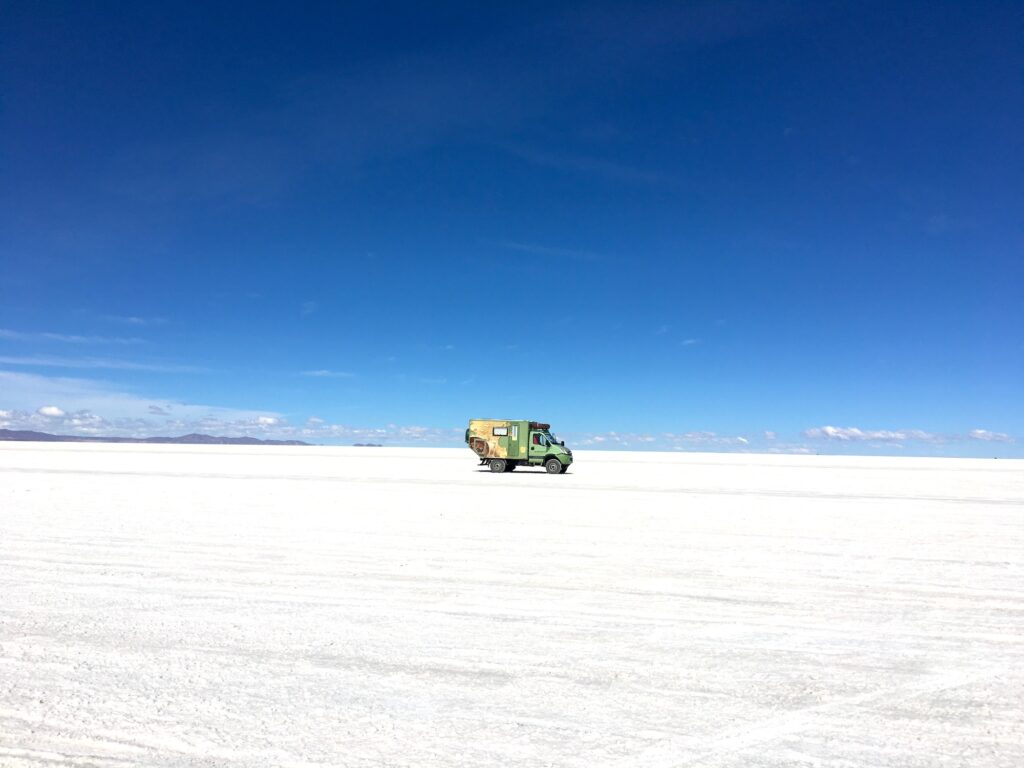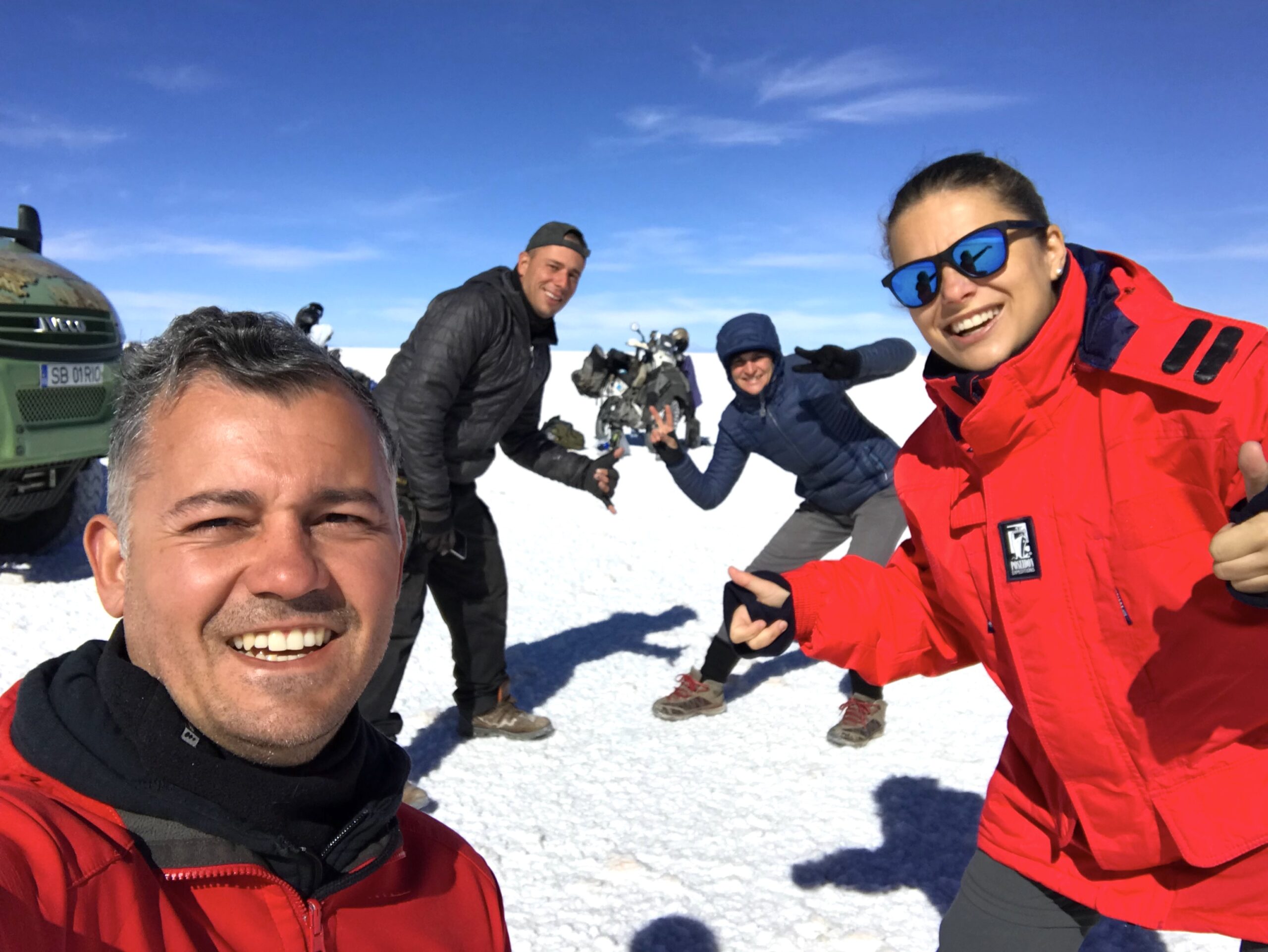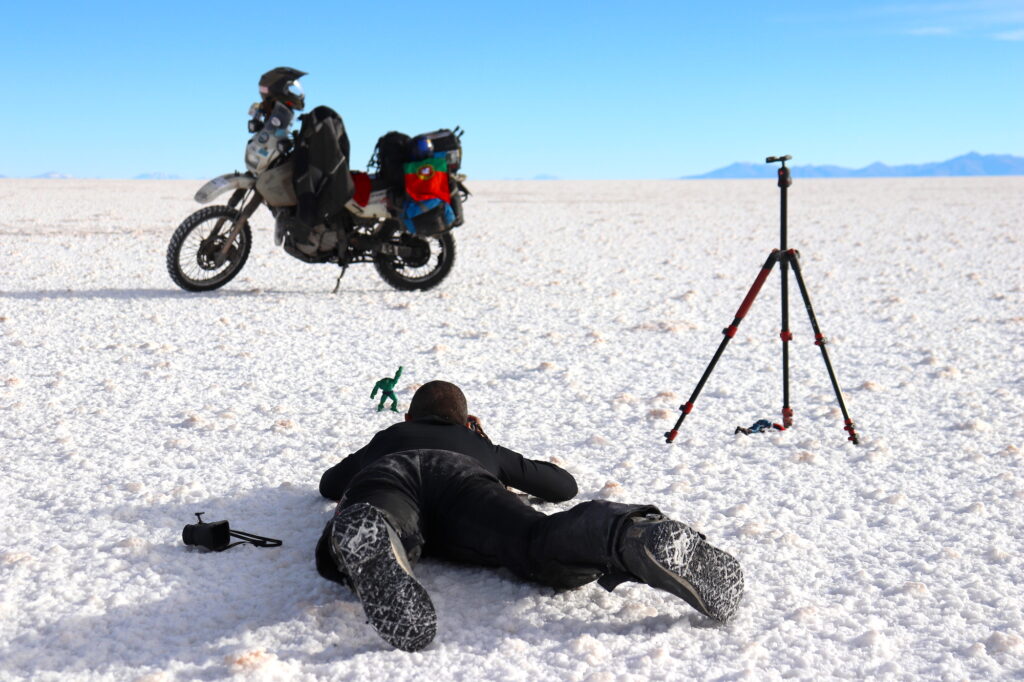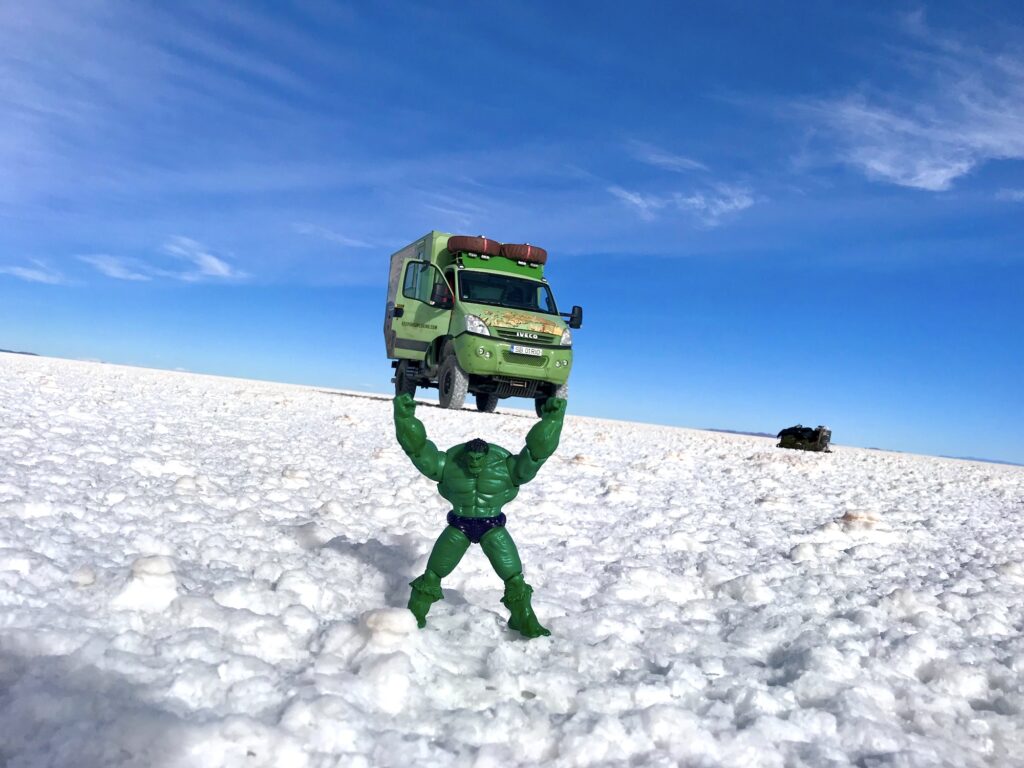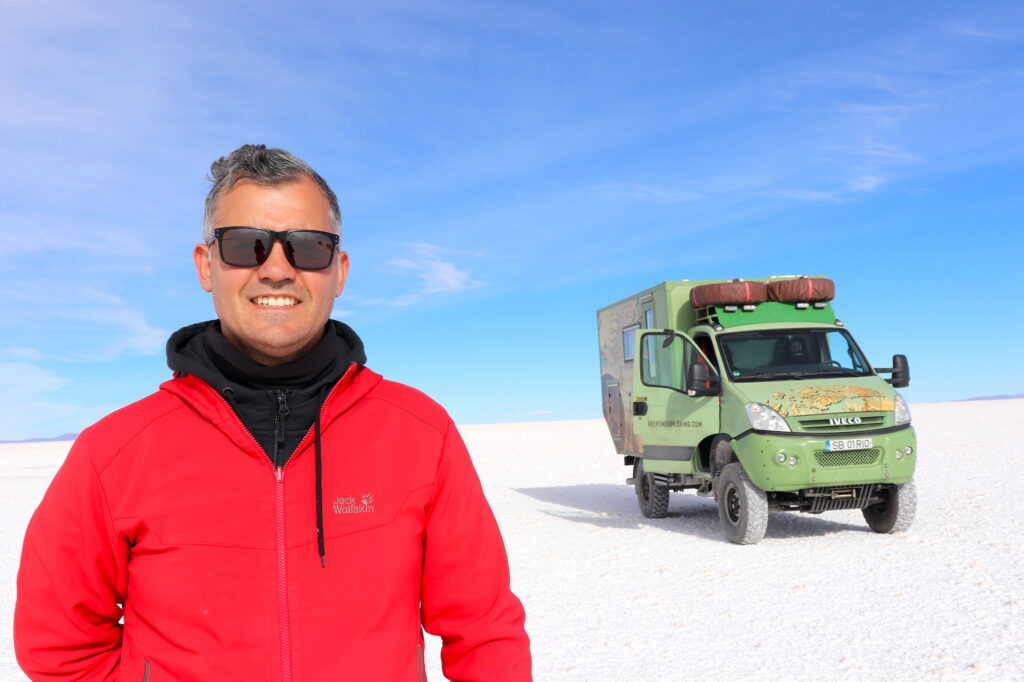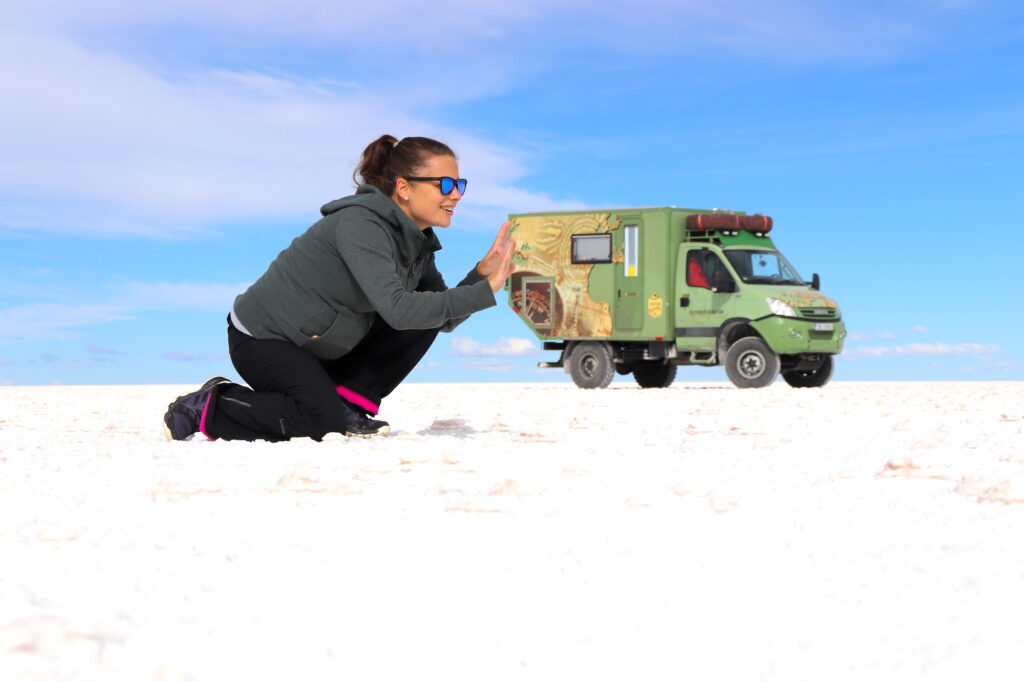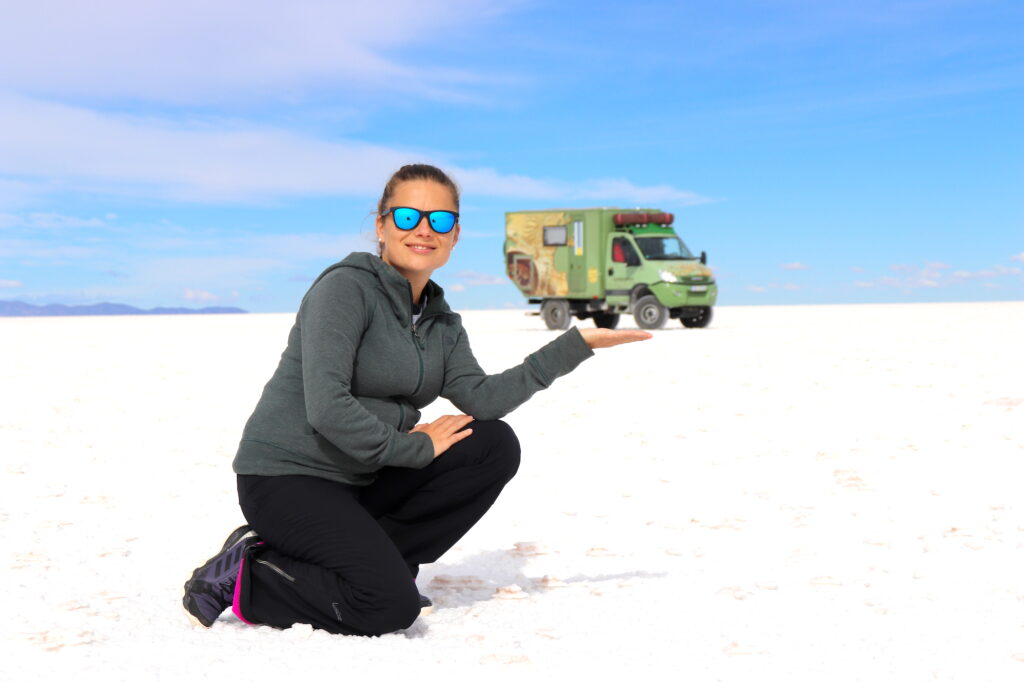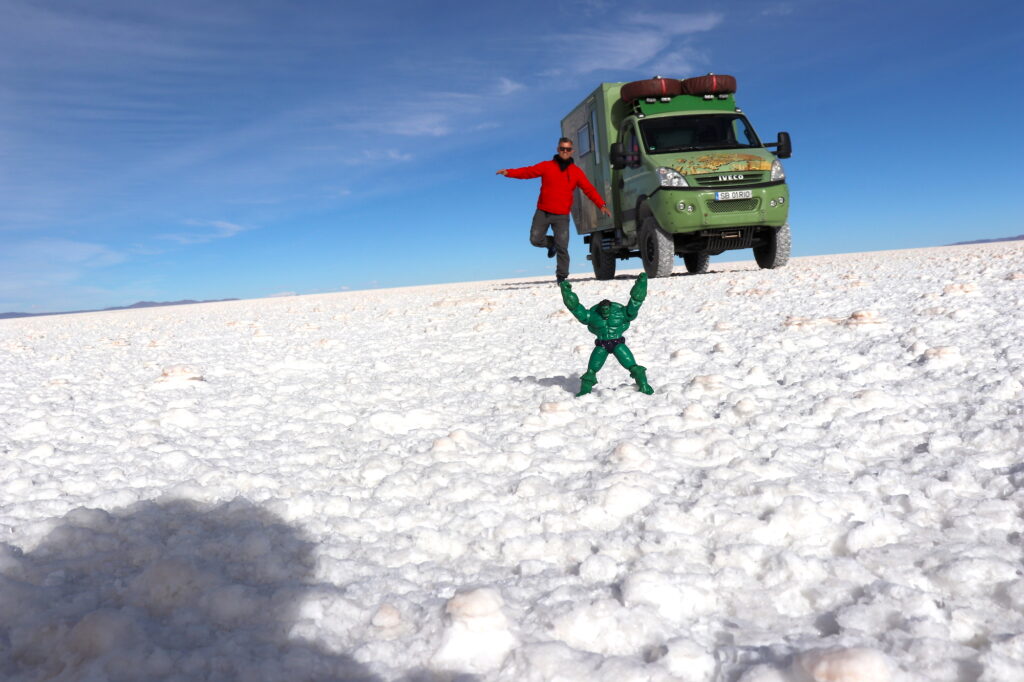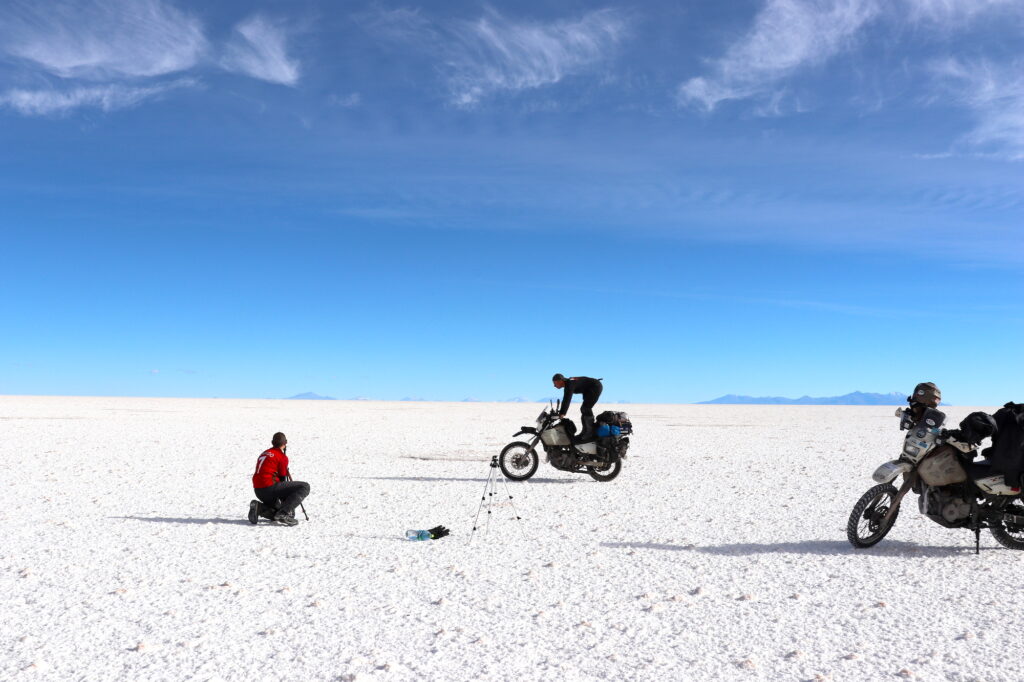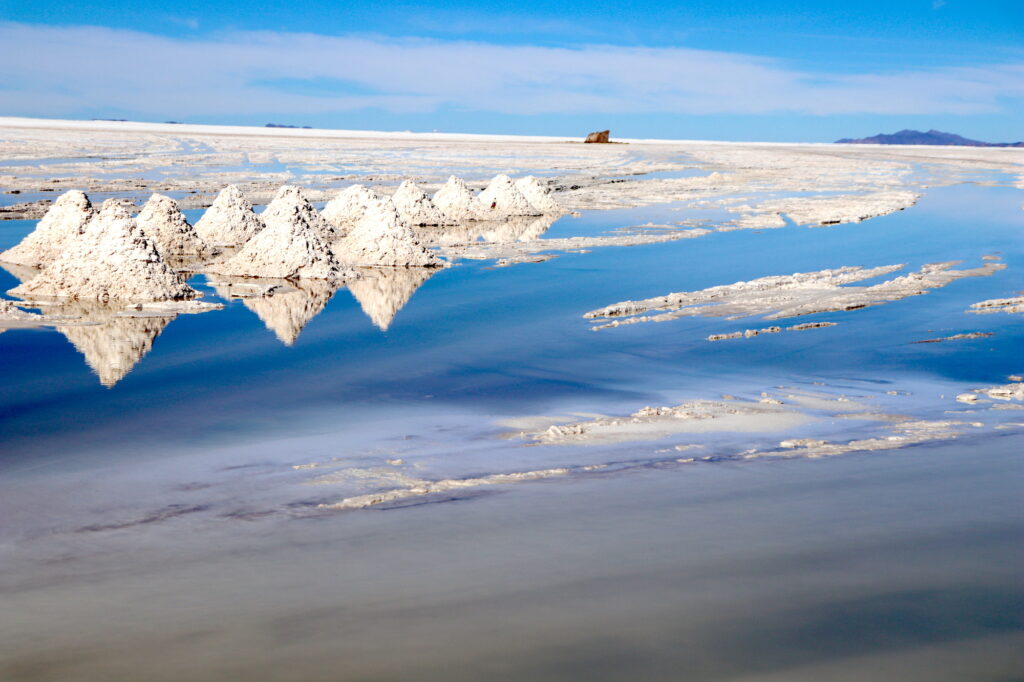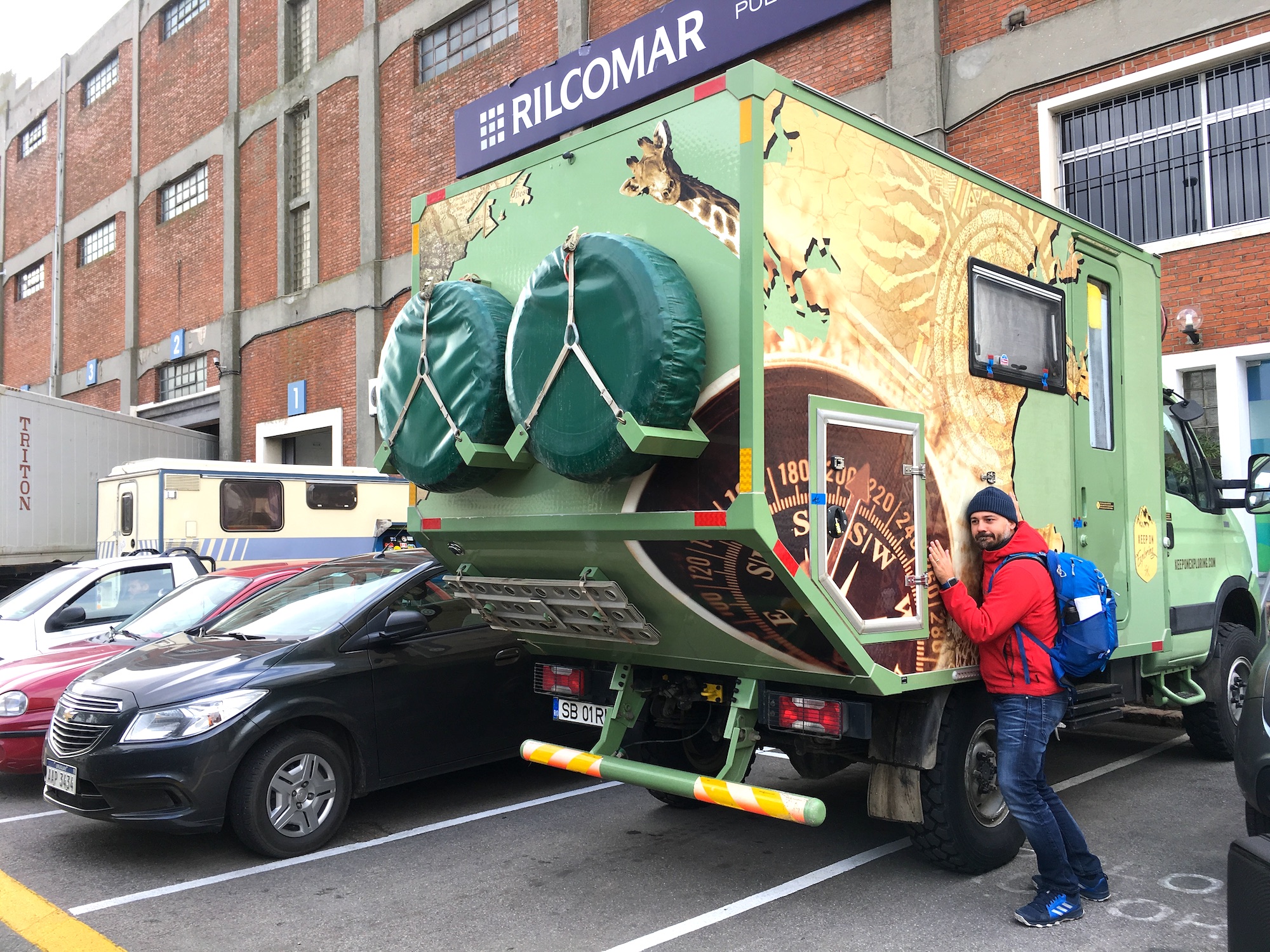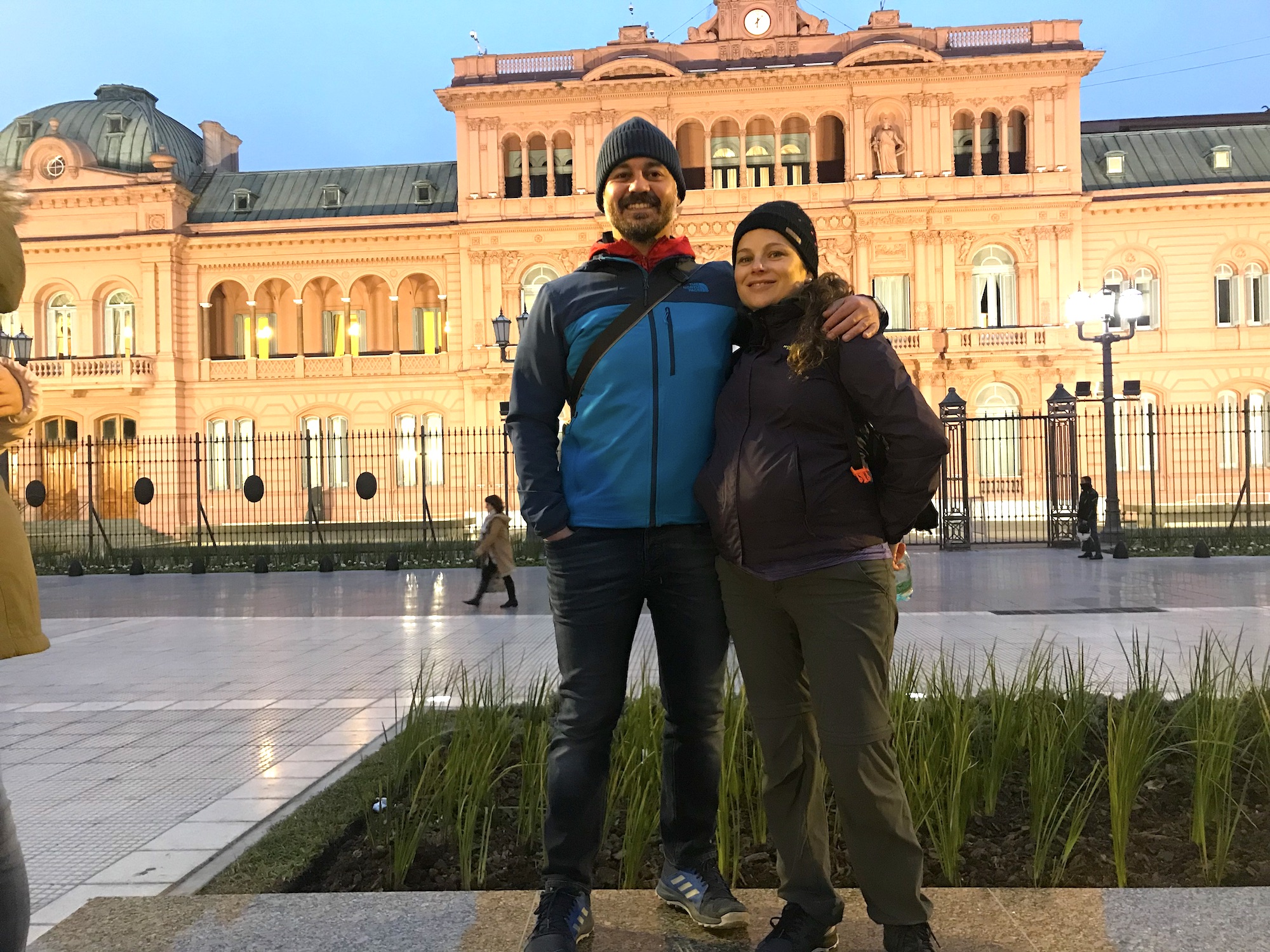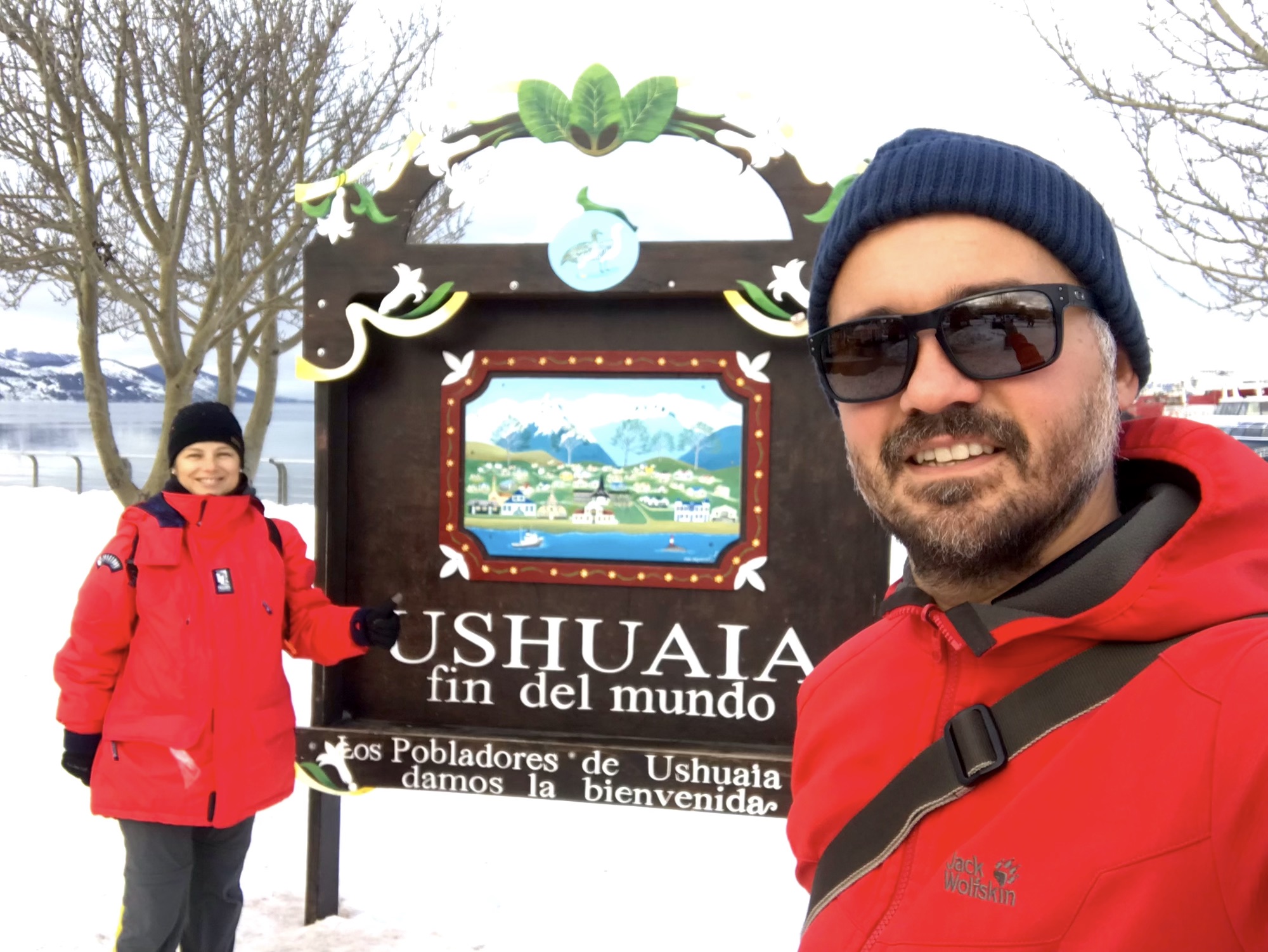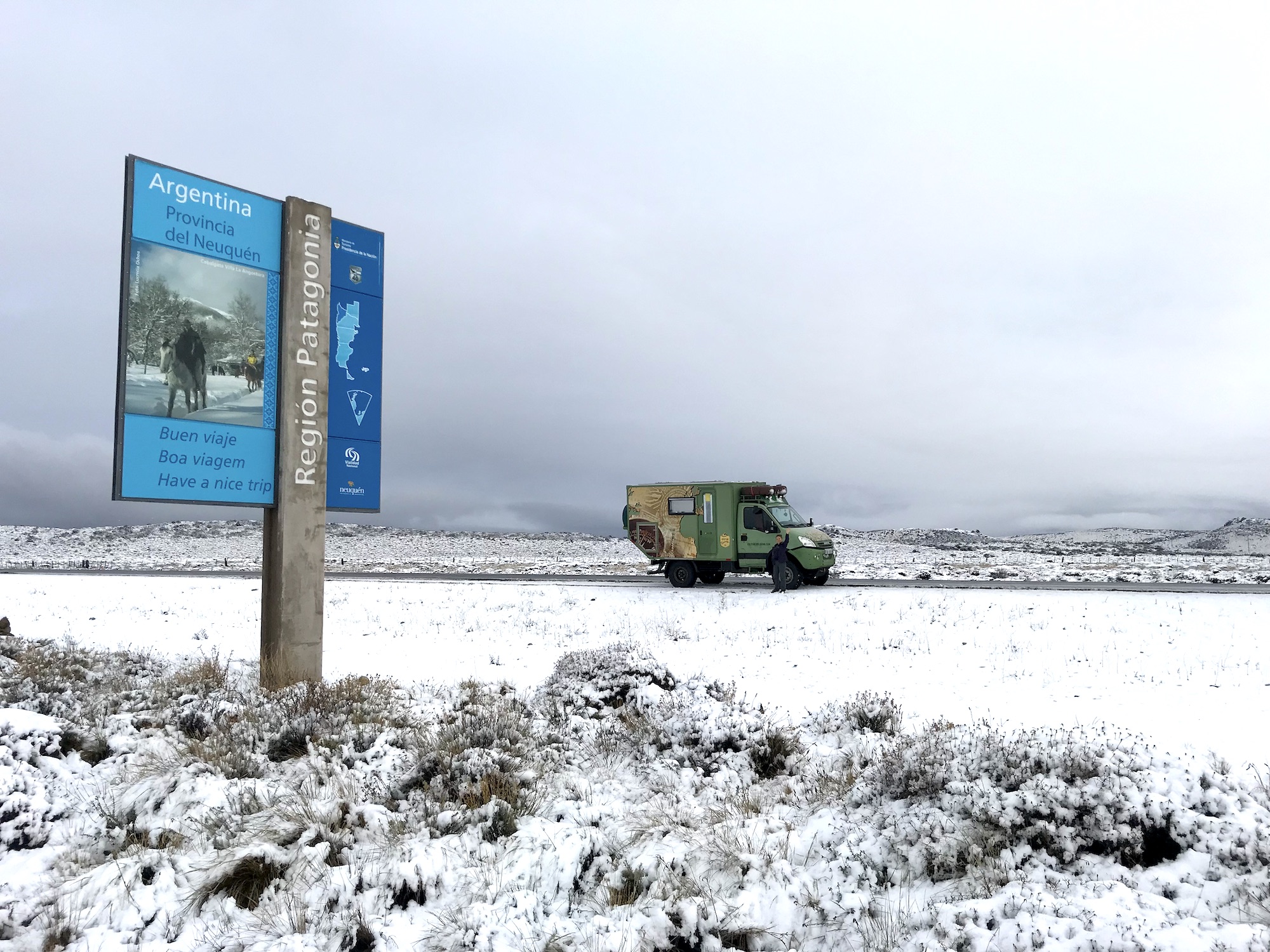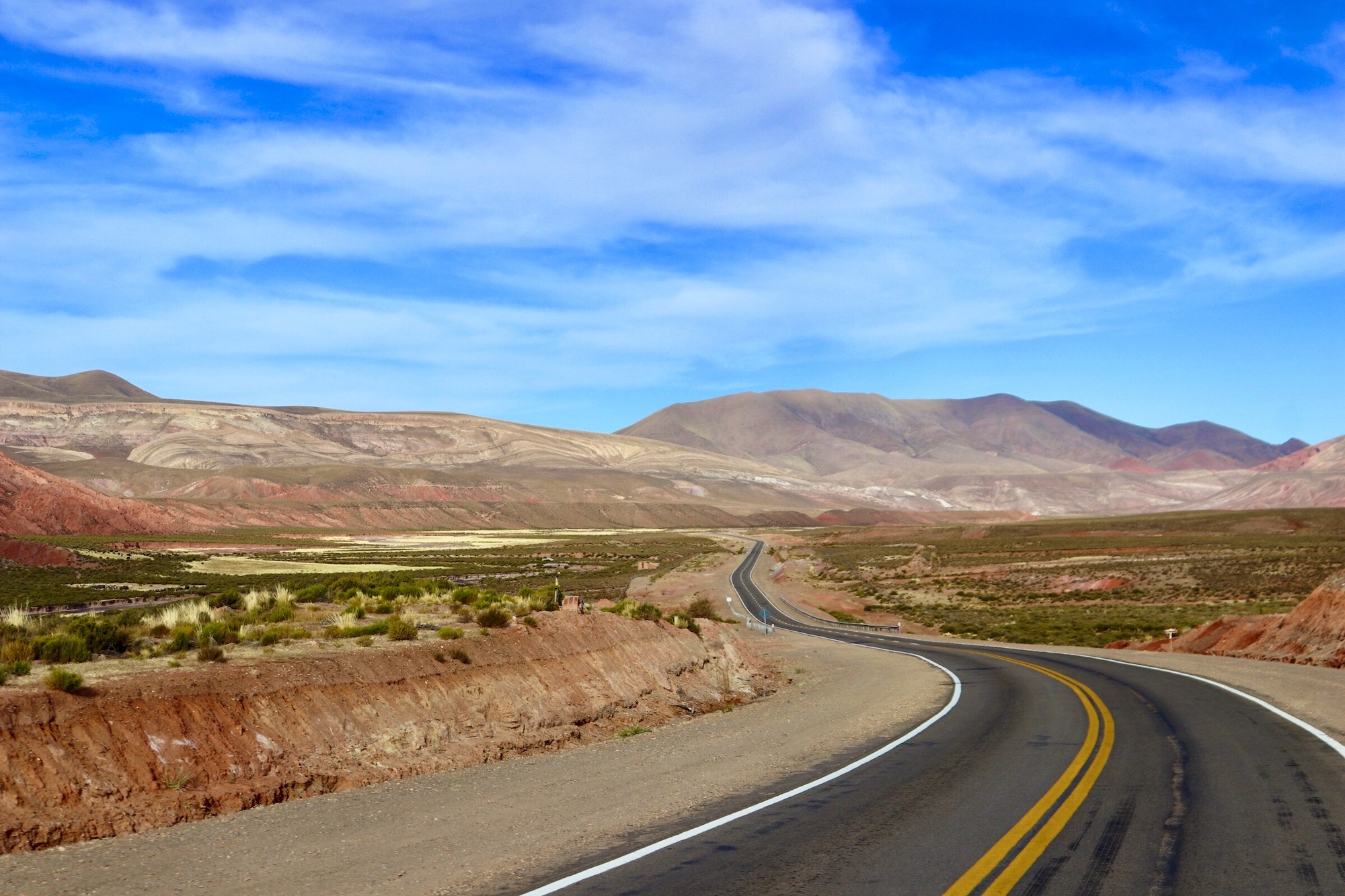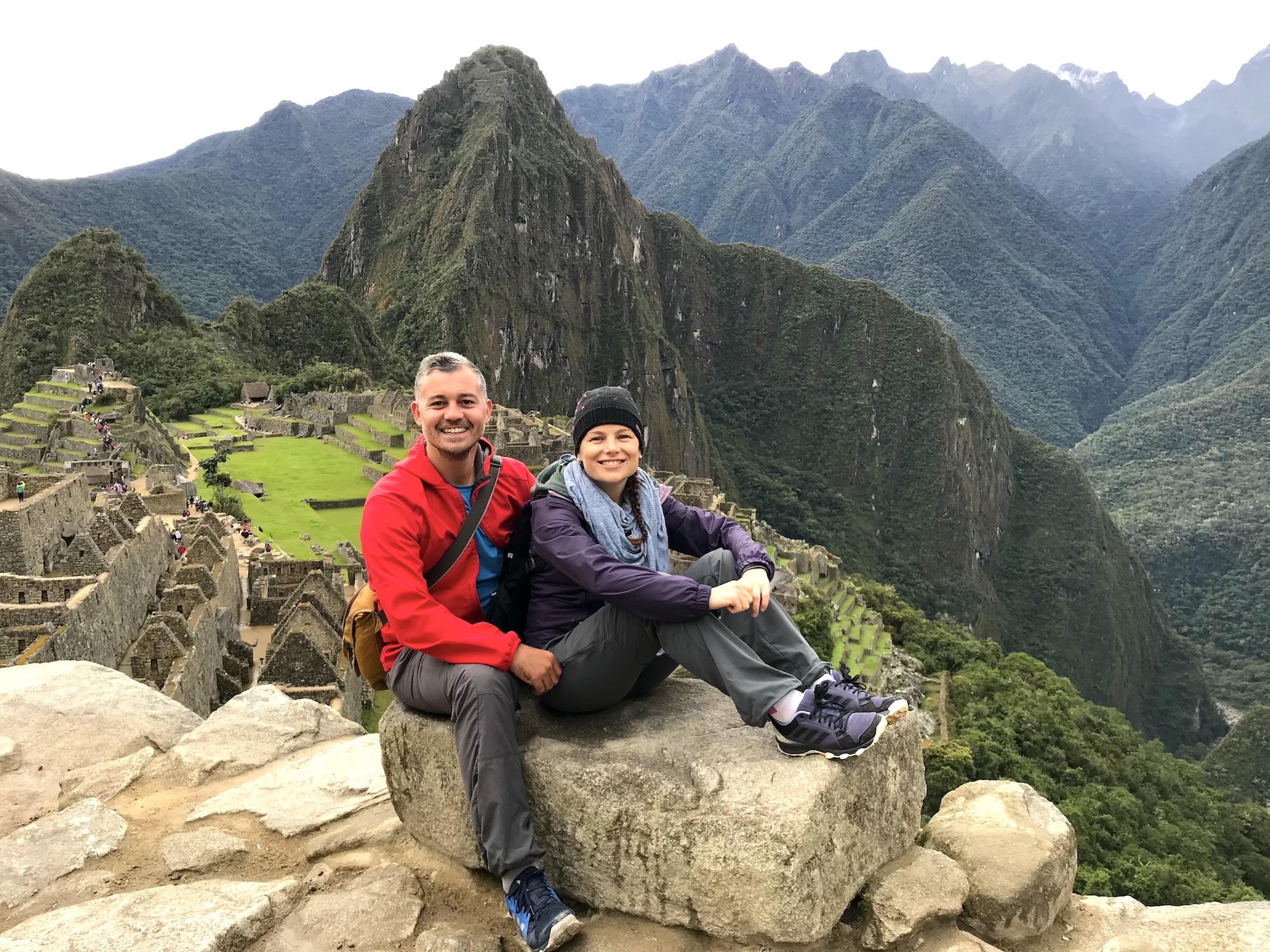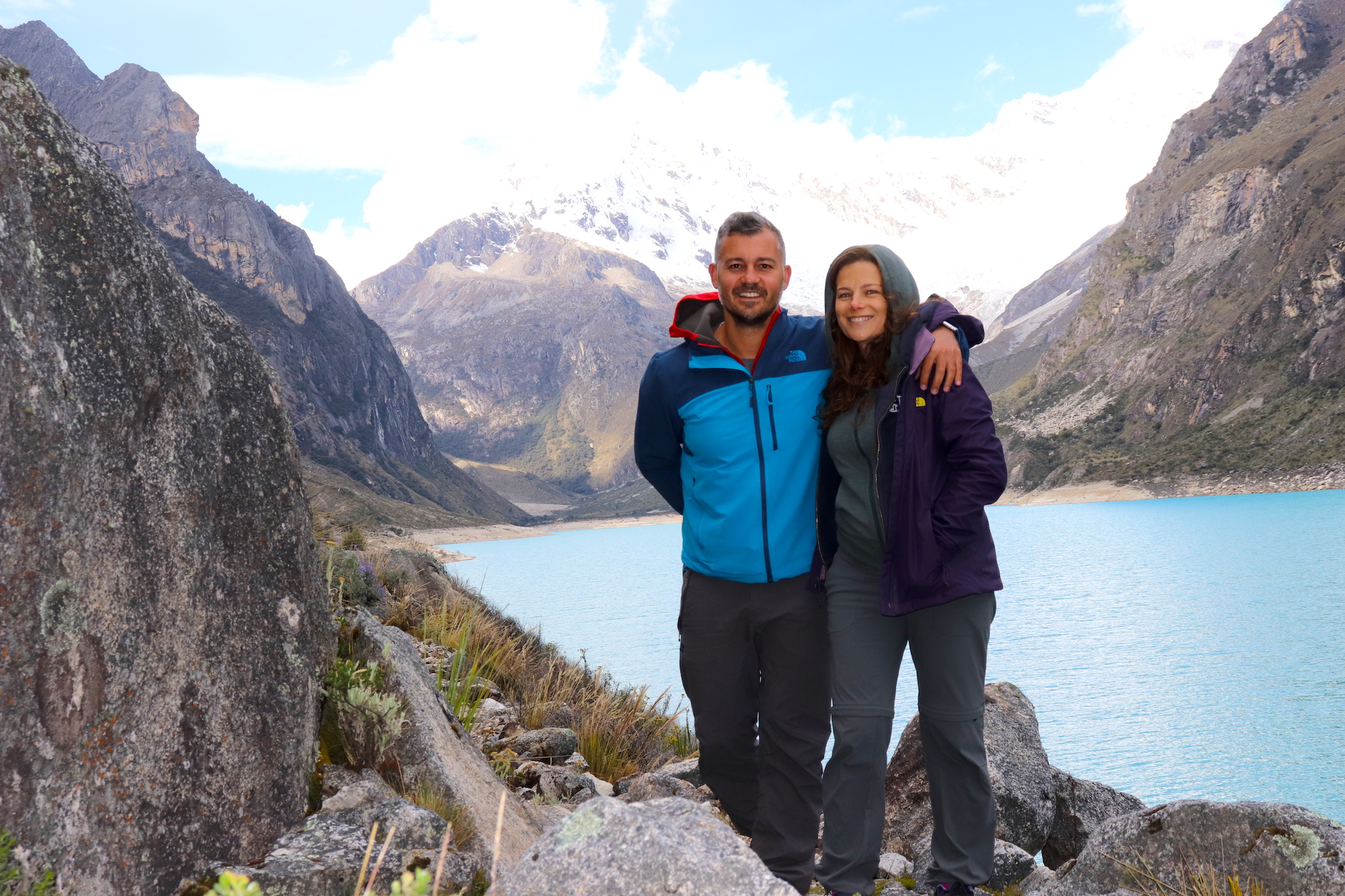To visit or not to visit Bolivia? That was my question. Reputable for its unfriendly locals and for its fuel restrictions to foreign vehicles I was doubtful if we should travel through Bolivia on our way towards Argentina. We could chose to follow the Atacama Desert through Chile. JP on the other hand was eager to visit Salar de Uyuni, the largest salt flats in the world. Besides, how could we miss crossing on a wooden barge Lake Titicaca, visit the highest capital in the world La Paz and meet a new culture that we knew so little about. “Maybe we will be surprised by the hospitality of the Bolivians. We might even find them friendly or at least we will learn something out of it”, I thought.
So we chose again the “unexpected” as our road friend. In the end our expedition was about this, leaving preconceptions behind and enlarge our horizons.

Crossing the border with Bolivia
The first unexpected event happened very fast: crossing the border with Bolivia. Back in Romania when I was researching all the visas I needed to prepare for the American continent, I learnt that the only country I needed a pre-arranged visa in South America was Bolivia. It was too much of a hassle to get one in advance without having the exact dates when we would be in Bolivia. Seeing on the map that we could avoid it, being a landlocked country, I did not stress out too much about it. "I would deal with it on site. Maybe we would just skip it” I told JP. By the time we got to Bolivia’s border I completely forgot about that.
Relaxed we presented our passports to the customs officers waiting to be processed. Out of the blue something banged me!
“Lady, you need to apply for a visa!” the officer told me. "What?? How comes?” I answered. “Our Austrian friends which are traveling with us just got their entry stamp without any problem. Romania just as Austria is part of EU, so theoretically I have the same right to enter Bolivia”, I added. “Lady you need a visa”, the officer repeated with a firm voice and without further explanations. It didn’t seem to be room for negotiation.
I was refused to enter the country without a pre-arranged visa. “Well, well… what can we do now?” “How can I get one?” I was looking at JP and at our Austrian friends. We didn’t expect that setback. We excluded the option of going back. We were too tired.
The officer invited me outside and pointed out an office. “Go there and prepare the application. You will be told everything what you need for the file”.
When I went inside the small copy center the man which was waiting in the office looked at my passport and told me: “You needed a hotel booking in Bolivia, a return flight, yellow fever vaccination certificate, passport copies, profile photo and the visa application form. He then started to hand over the application form to complete it.
“How am I suppose to get a return flight ticket? We will exit Bolivia driving. Why do I need a hotel booking? Isn’t it obvious that we are sleeping in our truck?” I was nervous talking to JP. Plus I had no internet to book anything. We just left Peru and we lost all the network connection. “How can we get a sim card with internet in the middle of nowhere?” I started to get irritated. But the man from the copy center seemed relaxed. “There was a way”, I thought!
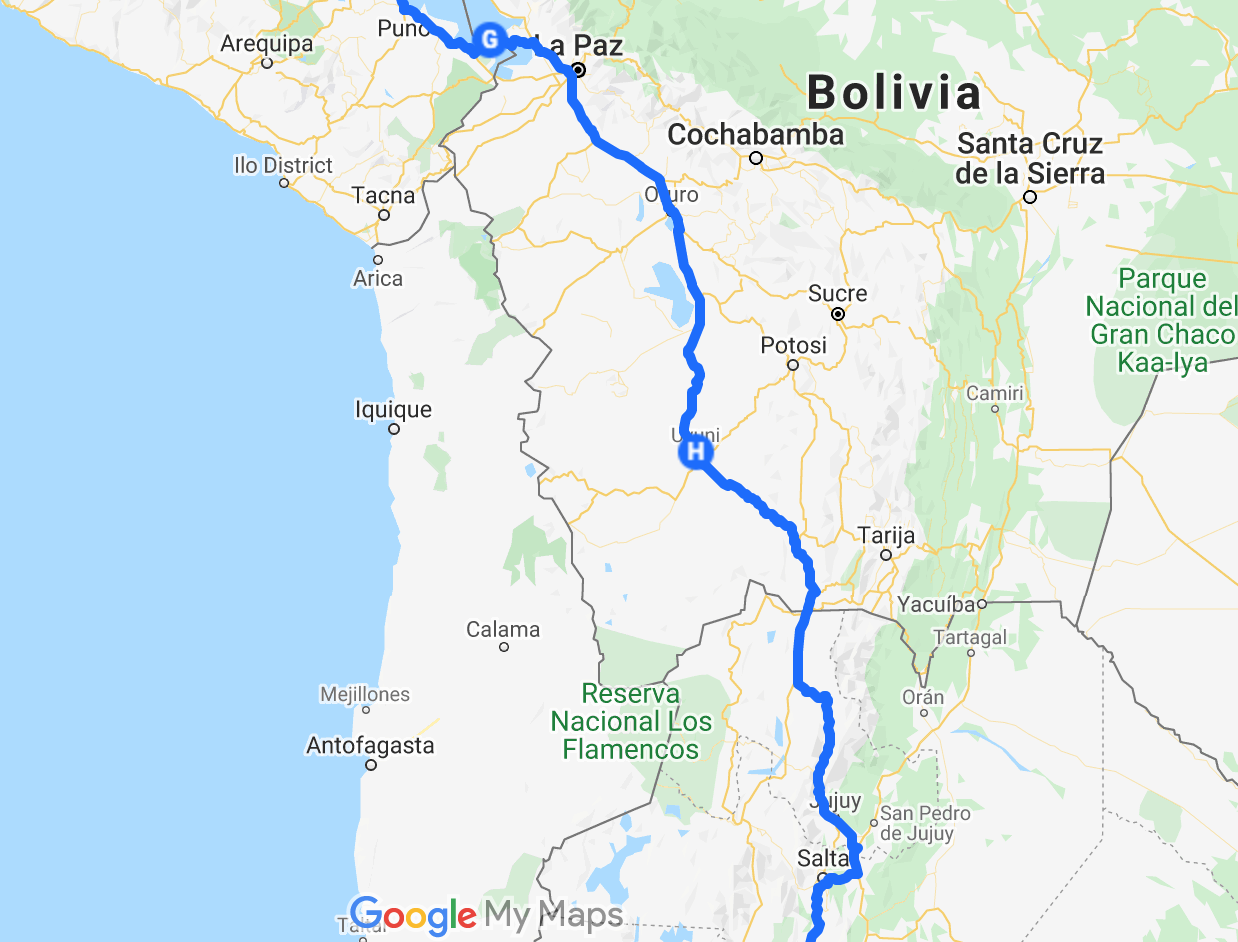
How to get a Visa in Bolivia on site
It was actually easier than I thought to get a visa at the border with Bolivia.
The man from the copy center had all the bookings done in advance: accommodation, flights, there was a printer, internet connection, a copy machine. All the tools to complete the file. Fortunately I had my Yellow Fever Vaccination and profile photo with me. In about 30 minutes I was ready with the dossier of papers. Nobody really asked me about the legitimacy of my “apparent” bookings. All what they cared about was to have those papers on file, follow the bureaucratic process and move on with their day. Reminded me of my visa experiences in Africa. Everything was possible.
When I thought they were about to stamp my passport with all the dossier I prepared the lady from the counter said: “100$”. “What??? What 100$?” I asked. “ This is the cost of the visa to enter Bolivia” she calmly added. “Dang it, Salar de Uyuni! You better worth all the money!” I thought :))) There was no Latin American country that charged us that much for an entry visa. I paid the visa fee and accepted the unexpected to happen, spending the double of our daily planned budget. :))
As we got the passports stamped we left to process the TIP ( temporary importation paperwork) for Brutus. The customs officers were busy playing cards. It seemed like we were disturbing from the fun moment they had. Suddenly their playful mood changed into an authoritative one and they started to question what were we doing in Bolivia. I remember one officer went through all my passport pages one by one (I had two passports connected one another due to valid visas).
He asked irrelevant questions, such as: "How much is your passport? Did you pay for the visa?”. With a smile on my face I answered politely. “My passport is not that much. I guess you are looking at all the stamps in there. We traveled a lot of get here. I paid for the visa to enter Bolivia, of course. As you can see I have the visa inside”.
A typical untrustworthy and suspicious interrogatory of a communist style that reminded me of Romania before the ‘90s or nowadays Nicaragua. I couldn’t believe these regimes are still alive. Not a friendly start in Bolivia, I thought.
In the end we received the TIP for Brutus and moved on with a divided feeling of what is going to happen next.
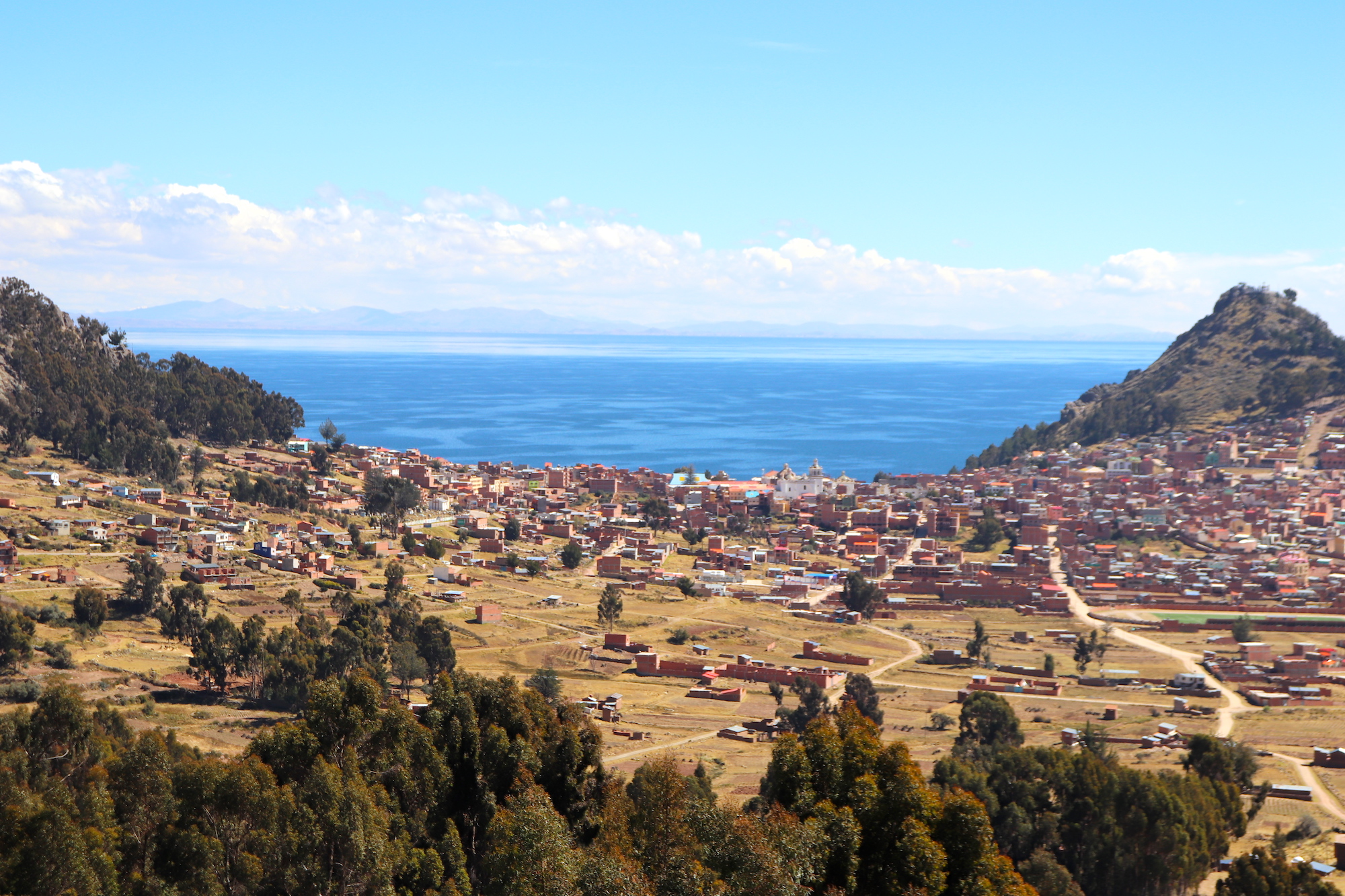
Camping on the shores of Copacabana
We were lucky to drive only 20 minutes from the border to our first camping spot located on the shores of Lake Titicaca in Copacabana.
Copacabana is a beach resort that attracts tourists from all over the world for its coast to the world’s highest navigable lake in the world and the nearby “Isla del Sol” (The Island of the Sun) with its Inca archeological sites.
As soon as we descended towards the beach we sensed a soothing ambience. Suddenly the pressure of the hostile border experience leveled up as the vast Lake Titicaca with its generous beach front unveiled. Seagulls were roaming the shores with their specific sound of freedom, the wind was blowing mildly, the air was chilly, but pleasant. It was the feeling of a cool and calm autumn day by the sea.
We decided to go for a stroll to stretch our legs after the long drive and discover a bit Copacabana resort located at 3,841m height. Walking on the side lake was relaxing and refreshing. We came across with huge statues of two Inca men facing the urban area. It was clear to us that the Incas were iconic figures in these parts of the Andes too. A powerful image to represent the history and the ancient heritage of the Bolivians from Lake Titicaca.
The floating islands of Lake Titicaca
As we approached the nerve center of the resort we found an avenue full of restaurants, bars and a lively atmosphere. We did not expect that overtone in an apparent calm set up. It was time for a well deserved drink with Anna Maria and Gerald in one of the terraces facing the endless lake and the marina with its white boats. I was fascinated to learn from our Austrian friends with whom we were traveling from Peru about the Uros people and their floating islands on Lake Titicaca.
Not too far from Copacabana on the Peruvian side of Lake Titicaca there are communities of indigenous people that live on the lake itself. “How is it possible??” I was trying to imagine. “Simple!” Anna Maria answered. “They built their own floating islands and houses out of Totora reeds and float on the waters.” They visited the Uros floating islands before and were fascinated about the culture. “These people lived here even before the Incas and built their settlements on the lake because they didn’t have space inland. They were cast out by other populations. So they developed these skills building out of reed little floating islands, boats, houses and a whole culture around it” Anna Maria said.
I was absorbed thinking about it. “How do they manage a sustainable living floating in such harsh environments? The lake can be very chilly and windy”, I was thinking.
“Uros people how they are called are known to be very resilient. They are accustomed with the incredible cold winds of the lake. They survive from fishing and hunting. They hunt mostly seagulls and flamingos. More than this they have their own elementary school and church on the floating islands. The Uros developed tourism and they welcome people like us making an extra living by selling handcraft.” Gerald was mentioning.
I was intrigued to learn about the Uros and their adaptability skills! I regret now that I decided to skip that adventure to the floating islands. I felt a bit tired and I was afraid to stay much longer at high altitudes. 3800m is an elevation considered risky for pregnancy. Maybe there will be a next time.
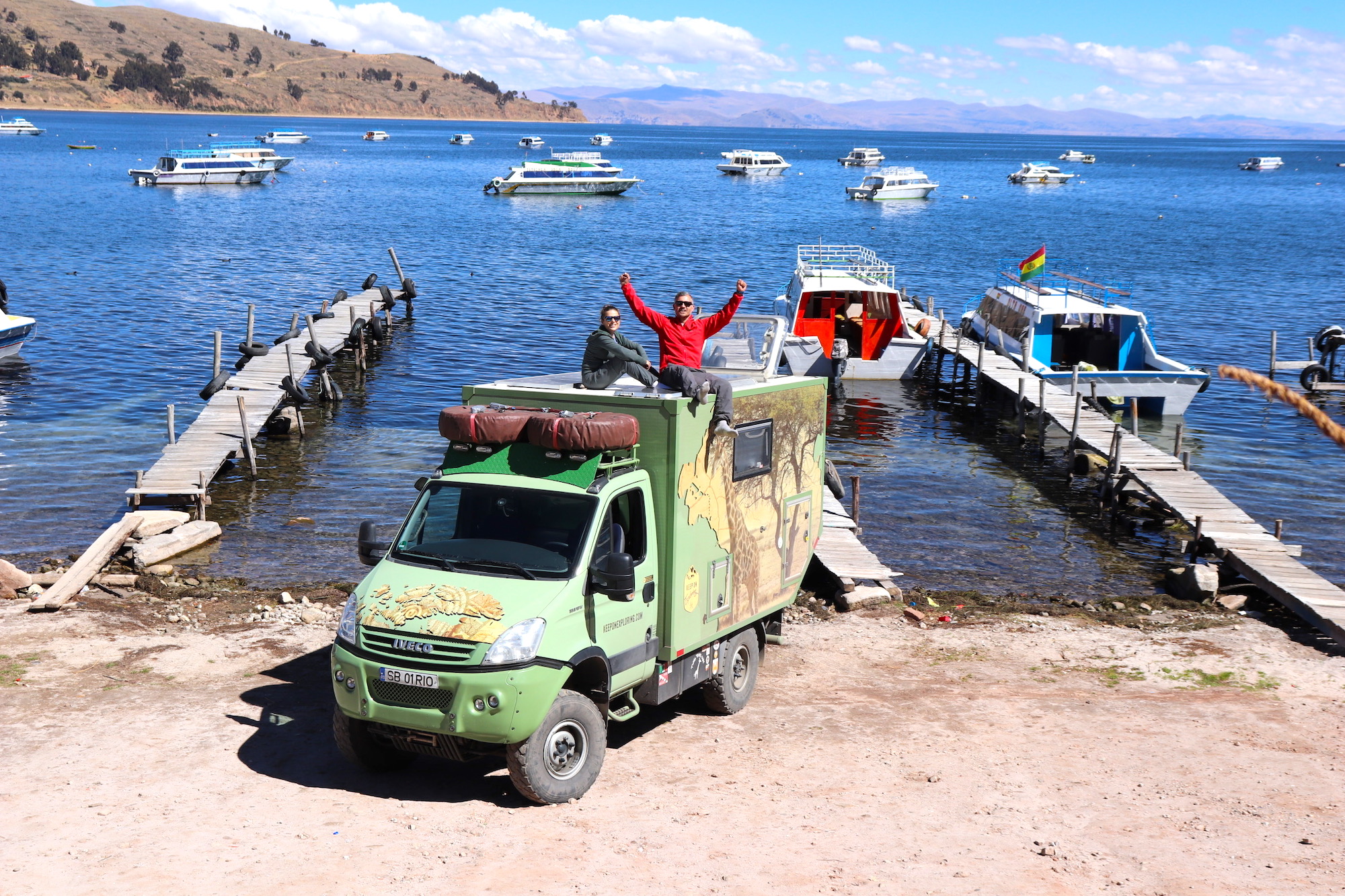
Crossing Lake Titicaca on a wooden barge
The next morning after taking a bunch of pictures climbing the top of the truck we were off for a new adventure: crossing Lake Titicaca at Strait of Tiquina on a wooden barge. This was the best route to save the driving distance on our way to La Paz.
Heading towards the strait we were baffled by the tremendous landscapes of the Altiplano merging with Lake Titicaca. Luckily those sights helped JP relax a little bit before the maritime adventure we were about to have. He was nervous for Brutus.
As we arrived in the small village of San Pedro de Tiquina we waited to embark both our vans (ours and Anna Maria and Gerland’s) on the basic floating equipment.
We were greeted by an authentic scene of a small village with its daily trading and sailing activities. Barges and canoes with passengers and vehicles were crossing regularly through. Vendors were selling food in the nearby market. Everything seemed to follow its daily natural course in San Pedro de Tiquina. Outside it was sunny and the clear blue sky was contrasting with dozens of white boats tagged with the Bolivian flag. A mild wind was forming rhythmic waves on the lake while on the other side of the strait we could see the houses of San Pablo de Tiquina village. It didn’t seem to be a long ride.
Our barge arrived. JP and Gerald parked the camper vans on the wood raft. It was us, the two vehicles, Elias the captain and a wooden barge with a small engine. Looking at the equipment we realized we had no insurance that we would get safe on the other side. Anything could happen. We could all sink and say goodbye to our dear homes on wheels and to our expedition all together. We were nervous but hopeful. The locals seemed very confident about their daily operations.
JP asked Elias smiling: “What do you think? Are we going to get safe on the other side of the lake?” With a positive voice smiling back he added: “Claro!” (For sure). He was assertive in his actions and familiar with the procedure. “I am 100% sure we would get safe on the other side” the captain reassured us.
As we started to float everything was moving underneath us. The truck was bouncing from one side to another. We could hear loudly the creaks of the wooden pipes and Brutus’ suspensions. We were looking at each other with doubtful eyes but smily faces. We crossed our fingers and hoped for the best!
Regardless of the risks and our fears, the feeling of cruising Lake Titicaca was amazing! Seagulls flying everywhere, boats sailing with passengers and even buses from one side to the other, the pleasant waves and the welcoming breeze made us forget about the dangers and enjoy the unique moment. At some point is was silence. We were captivated by the powerful nature. We were just staring in the horizons, thinking that we are crossing the highest navigable lake in the world.
I remember how fascinated I was about that geography lesson back in the 6th grade of school. I never thought I would actually have the chance to experience Lake Titicaca in reality one day. Suddenly we were there! In a place so far but so prominent in my mind. The world became small and dreams once again achievable.
We soon approached the other shore and disembarked careful the vans from the wooden barge. We paid 50BOB (Bolivian Boliviano) to Elias and we breathed out relieved. JP was so happy to get away with Brutus intact. The journey to La Paz continued.
On our way to La Paz
We were piloting speechless the Altiplano of the Andes, the most extensive highland area in the world after Tibet. An epic landscape integrating with the endless lake was unfolding. As beautiful the nature was as sad were the humble living conditions of the locals and their impoverished villages. Agriculture, lamas and vicuna herding seemed to be the main occupations.
Getting to the chosen camping spot in La Paz was tricky. First we had to overcome the high traffic of the executive capital of Bolivia with its numerous uphills and downhill drives. After more than two hours in traffic gems often on unpaved roads, the last leg to our camping spot was a steep mountain descent of 30km full of bumps. We were afraid our breaks would fry again. We kept repeating: “Ohh no! I hope it’s not going to happen again. No, not here!”
Eventually we arrived alive, breaks survived and Anna Maria and Gerald welcomed us with opened arms at Swiss Oberland camping spot. Seeing their smily faces was a relief. The place had all the facilities needed in that apparent unkind scene we first encountered.
We ended the night over a well deserved dinner at the cosy restaurant of Swiss Oberland Hotel.
The surprise of La Paz: a great cable car network
The next day after a lazy breakfast we departed with Anna Maria and Gerald to experience La Paz, the highest capital city in the world, located at 3,640m altitude. They had been there before and were kind enough to introduce us the highlights of the city. It was amazing to just tag along that time.
The best thing about La Paz was its modern cable car network which is actually the largest urban cable car system in the world. It helps skipping the traffic of the capital, getting fast from one mountain to another. The means of transportation is offering a tremendous panorama to the city which is located inside a huge canyon and on the surrounding Andes mountains.
“It seems that we were ascending and descending the ski slopes of Austria. It is so cool and cosmopolitan”, I was mentioning excited. “I didn’t expect such a contemporary and well connected transportation system in Bolivia” I added. “The cable car company is Austrian”, Anna Maria proudly added 🙂
Looking over the city from the top we discovered a super vast urban area which was extending from the depressions of the valley up to the heights of the surrounding summits. We did not only have the perspective of the city’s unique location but as well close insights into people’s houses as we were passing very close over the communities. Expecting to see snow powdered peaks in the capital, we rather encountered a dry landscape, formations of hoodoos and bulbous naturally eroded rocks. What a scene! It was sensational.
The city center of La Paz
Once we arrived in the old part town we came across with the Writer’s Coffee, a “must go” coffee place recommend by almost any travel guide in La Paz. The moment we got in we were lured by the fresh coffee smell, the showcase full of appealing cakes and the European scent of the bookstore. After we warmed up over a cappuccino and a delicious chocolate cake we were ready to wander on the cobble stone streets of the capital’s city center.
When we got to Plaza Murillo, in the central square of La Paz, we assisted to the changing of the guard of Palacio Quemado, the official residency of the President of Bolivia. It was a nice moment looking at the soldiers parading with the national flag. We had seen something similar in Quito of Ecuador.
The architecture of the central plaza had the specific Spanish influence with the respective colonial buildings, cathedrals and palaces contrasting with a newly build skyscraper. The disparity was not disturbing, somehow the old and the new blended in a harmonious way.
There were more locals than tourists enjoying the large plaza full of pigeons. The people seemed to be more reserved comparing with other locals we encountered on the continent. Perhaps is was the regime of Evo Morales that kept people somehow in a bubble of time.
The nearby cobble stone alleys were connecting to historical buildings, hidden museums, art stores and craft markets. Walking that part of town had a special ambience. We found La Paz somehow more virgin, preserving more of its indigenous identity rather than its colonized one. It was less touristy, less built up as a holiday destination compared with other former Spanish colonial settlements like Cusco, Cuenca or Quito.
That was the last day spent in the company of our Austrian friends. For three weeks we had been on the road together from Laguna Parón of Peru up to La Paz in Bolivia. Time came to say goodbye to our dear friends and be thankful for all those memorable times together. The next day we planned to head south towards the salt flats of Uyuni, while Anna Maria and Gerald decided to cross the Amazon basin to visit Pantanal of Brazil.
Thank you for being amazing road partners! It wouldn’t had been the same without you!
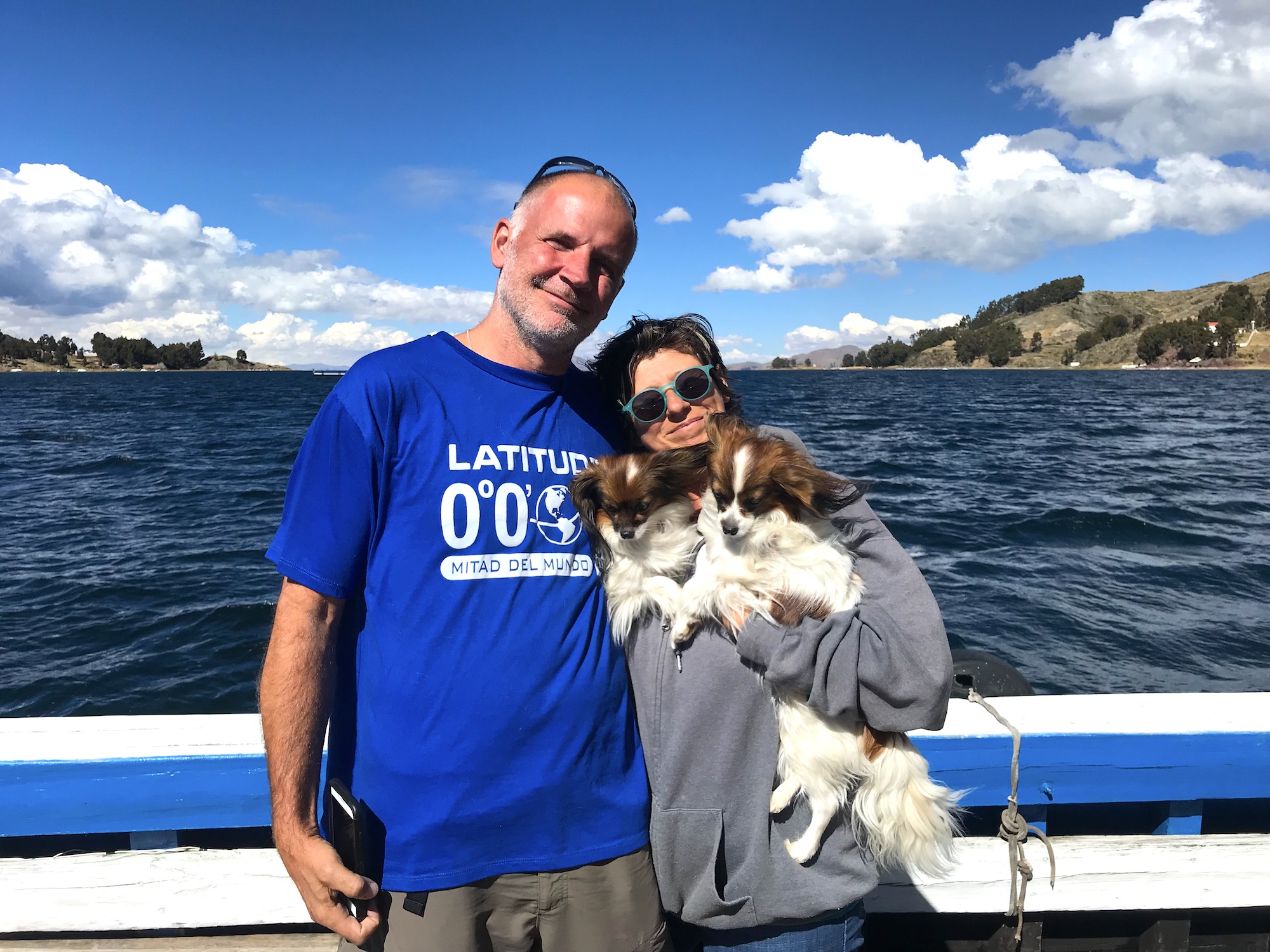
On our way to the largest salt flats in the world
There were 530km and 7-hour drive to get from La Paz to Uyuni, the gateway to the vastest salt flats in the world. We wanted to kill that distance in one day. The road on the Altiplano was in a pretty good condition and straight. The weather suddenly became colder and drier. We crossed villages and cities that appeared lifeless. People could barely be seen on the streets and the ones we saw would not sketch a smile on their face expressions. Most of them were wearing traditional clothing. Somehow it gave us the feeling of an oppressed nation.
When we would stop to pay the road fees the locals didn’t seem to comprehend or interpret what you were trying to convey although we were speaking the same language. There was no room for discussions nor dialog with the road tax collectors. It was one way communication. No smiles, no thank you, no “Have a nice journey!” as we would often get elsewhere.
The portrait of Evo Morales, the president at that time, was exhibited everywhere from the huge street banners of the national road to the interior of state owned buildings. It was mostly about him and his great achievements in Bolivia. Evo Morales was an omnipresent figure. It reminded me of a familiar face I knew: Ceausescu of Romania with its communist regime and megalomania. It was a time when fear was “God”, freedom of speech was “0" and the repression of people was felt in the airspace.
We finally got to the point when we needed to fuel. We filled up our tanks in Peru knowing about the fuel scarcity for foreigners and its low quality in Bolivia. There were only few gas stations authorized to sell fuel to foreign vehicles and the price was double compared with the one given to the Bolivians. But we heard from other travelers that there was a way. We could still get diesel from regular gas stations if we would negotiate with the fuel vendor. Theoretically that was not allowed, but practically this is what happens. If the fuel for the Bolivians was 4BOL/l, for foreigners was 8BOL/l at authorized gas stations. The general practice was to offer 6BOL/l with no receipt at any gas station to the fuel vendor.
We knew what we had to do, so we did it. The lady that served us at the pump station immediately offered us 6 BOL for 1 liter of diesel. JP convinced the lady to pay 5.5BOL/l, just for the sake of negotiation. It worked well and we moved on.
I had a breakdown when we got to Uyuni
By evening we finally arrived in the city of Uyuni, the departure base to Salar de Uyuni with its endless flat salt land. We drove the whole country for almost a week to get there. The expectations were high considering the efforts we made to see this tremendous territory.
As we entered the town of Uyuni we faced a desolating atmosphere. It seemed more of a lost wild wild west than a world class tourism destination, as I probably expected. The buildings had no outer coating, no roofs, the roads were unpaved, there were no streets signs, the people were walking with their heads looking down, it was foggy, cloudy and outside got much colder. Gosh, it was a depressive atmosphere.
I remember that evening we barely found the camp spot which was located in a local’s courtyard. The road towards the overnight spot was a frozen muddy alley with no indications or directions. The street and the number of the house were not recognized by google maps. I was not surprised.
Outside was already dark and we ended up going in circles for a while until we realized which was the street and the house number. Tired and stressed after a long drive, JP yelled at me as if it was my fault we didn’t find the campground. I literally exploded. That was the least I needed after a long day. I burst into tears and could not stop for a while. Everything cumulated: the fear of the constant drive over 3600m altitude, above what is considered safe for pregnancy, the unfriendly environment, the long drives to get anywhere, the cold, JP’s little annoyances.
I needed to get out all that negativity and fear accumulated. I couldn’t stop crying. It seemed like a panic attack. JP told me with a calm voice "Stop crying. It might affect the baby." It was the only thought that calmed me down. I breathed in and breathed out for a while without thinking. I drank a cup of hot milk with honey and I started to cool down. Soon I felt asleep really deep.
Suddenly the magic: Salar de Uyuni
The morning came and the day to visit Salar de Uyuni too. I erased from my mind all what happened the day before and prepared for a new experience.
Famous for being the biggest salt flats in the world and located on the Altipano at an elevation above 3,600m, the area which covers 12,000sq km is a former lakebed that formed throughout thousands of years. Its pictures are renown by the immense mirroring effect it creates after rain, as well as the optical illusion of things looking bigger the closer they get to the camera. There is no perception of depth. One can play a lot with the dilution of distance creating fantasy pictures.
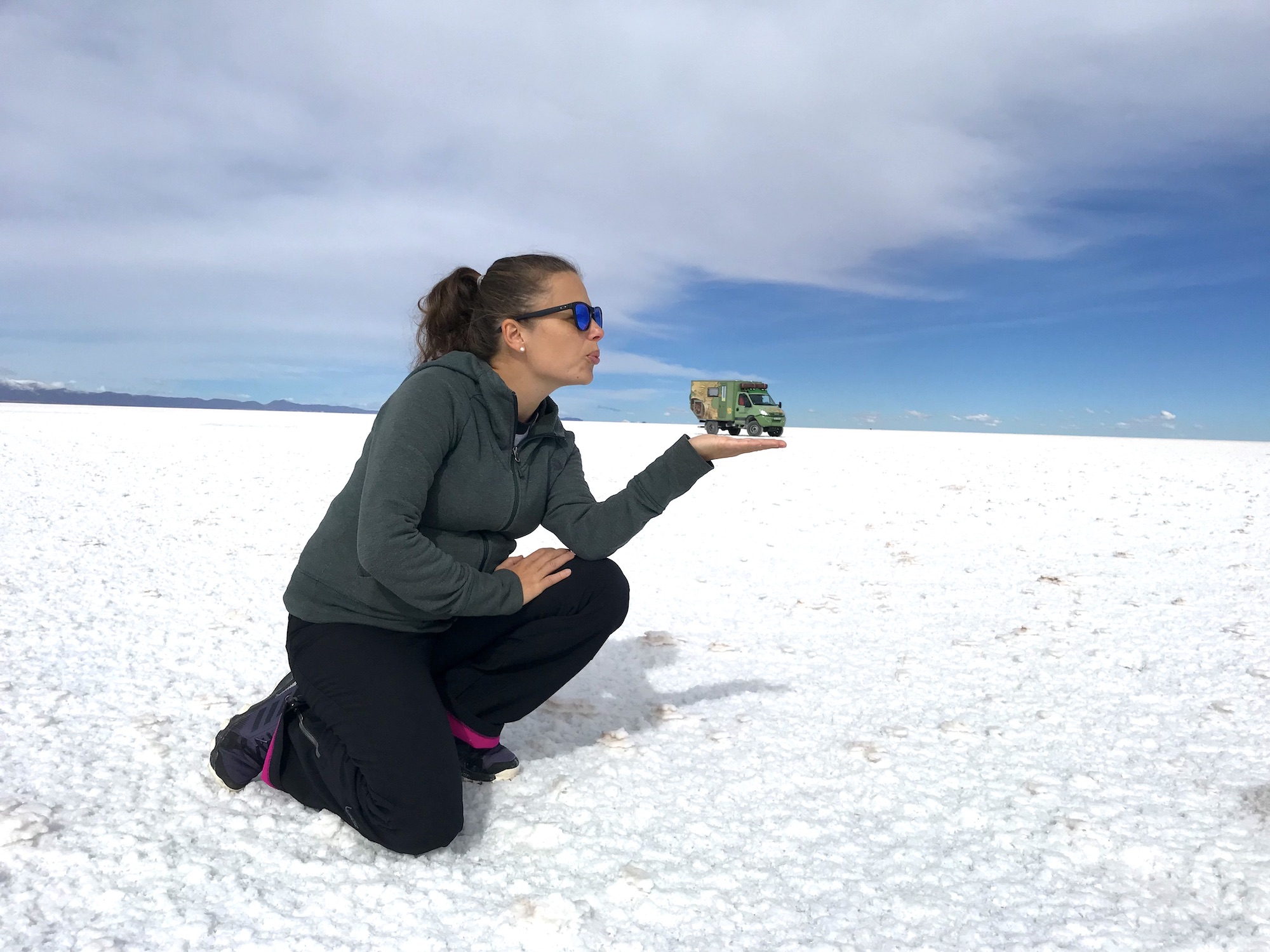
Before entering the vast white lands we had to prepare the truck. We needed to put a layer of oil underneath to protect it from the corrosive salt.
We woke up early to start that process, but it didn’t matter as most of the car wash shops that were applying this oil were closed. It was too early to start a cold day in Uyuni. We were going in circles for a while until we found a place opened that did the operation. By 12pm we headed to Salar de Uyuni which was located 25km from Uyuni city.
A sea or nothingness, a white flat land covered with salt was unveiling in front of us. We didn’t know which direction to take, there were no marked roads. We could go anywhere and that sense of freedom was pretty fascinating.
We made it to Dakar Monument, a landmark where most of the tourists stop for pictures before emerging into the land without horizon. There we found plenty of excited people that they made it into the white nowhere. Out of the blue there are two bikers waving at us.
“Well, whom can they be?” We didn’t know anybody traveling by enduro motorcycles. One of the bikers took off the helmet and approached us. We were surprised to see it was a woman. She was wearing a black rider costume full of patches with flags from most of the countries of the continent. It was obvious then they were crossing the Americas just like us. The woman was probably in her early 40s and her hair was shaved. With a welcoming smile she added:
“Hey! We saw you earlier in town. Your truck is awesome!”
“Thanks and nice to meet you" we added. “Your bikes are pretty cool too. Where are you from?”
“We are from New York” the woman answered. This is my road partner, Paul. He had short hair just like Aida, but that did not surprised us 🙂 Paul was friendly and had a down to earth attitude.
“We got stacked in the muddy salt area to get over here” Aida added laughing. She didn’t seem to be bothered. On the contrary she sounded rather pumped up by the adventure. The good spirit and energy of the two was contagious.
We connected right away and chatted for a little while. Aida and Paul were road partners at that time, without being a couple, Aida wanted to point out. “I am married. I have a lovely husband back home, a 21 years old son and a 16 years old daughter”. “Paul and I met during a motor show event and he came up with this idea of traveling around the world. It was something I had in my mind for a while. He is a mechanic too, so I didn’t think too much, I discussed this with my husband and here we are”, Aida was telling the story with a big smile on her face.
We were surprised, but in the same time we admired her determination, courage and adventurous spirit to achieve her live time dream. Paul was the perfect partner, crazy (in the good way :-), fearless and with a great humor.
“So where do you plan to head next?” we asked them. Paul smiling added: “We have a plan: there is no plan” :)) A priceless sense of freedom.
Soon we had to say goodbye to our new friends and departed to explore the Salar. The dry ocean of salt was waiting for us.
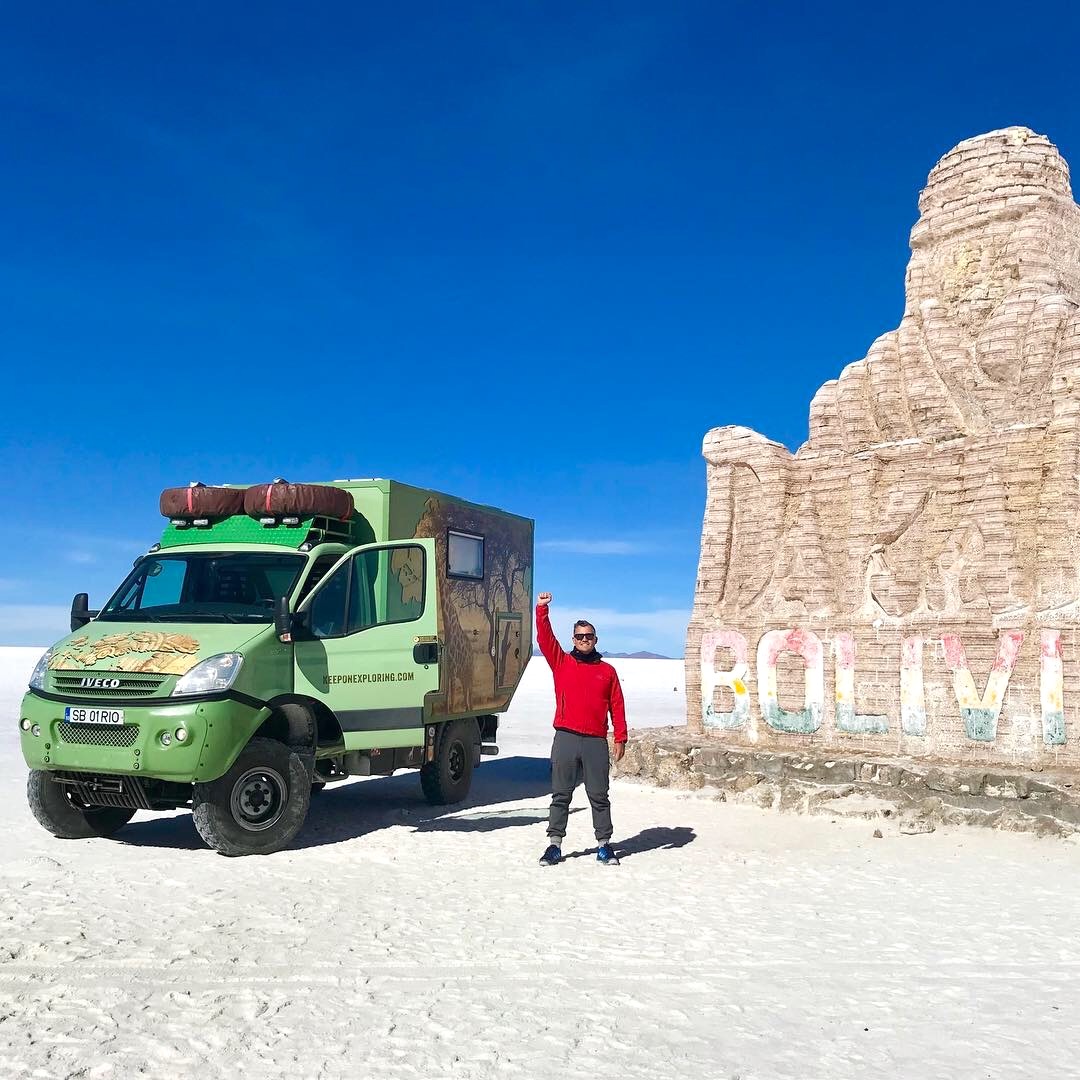
Into the wild white!
And that was definitely another JP moment! He was enthusiastic like a child that he was rolling the wheels of the truck without any indication or direction. He went wild into the apparent nothingness.
“Where are we going?” I asked. “I don’t know.”, he answered. “Isn’t it amazing?”, JP added. After couple of miles, it was just the two of us, no cars could be seen around, no nothing, besides mountains in the very far away.
We decided to stop and camp. We would either travel for hundreds of kilometers or would stop there, it didn’t seem to matter. There was no destination, no landmark, there was no “we need to get there” or to drive more. And that was the magic! Emptiness and fullness in the same time. No matter what you do, where you go, you end up in the same spot, the same white land with no horizon, the present.
It was peaceful, calm, we could not hear anything, no birds, no cars, no sound,.., until Aida and Paul reappeared from nowhere. “Oh, looks who’s coming?” JP was laughing.
We spent the whole afternoon playing with the cameras and the optical illusions of the site in the company of Aida and Paul. Any object looks bigger the closer it is positioned to the camera in the Salar. Aida is a photographer and Paul seemed to be an expert in flying his drone, so we hit the jackpot! They took some amazing shots of us at Salar de Uyuni. A bit of a childish moment is always good.
Camping in Salar de Uyuni at -7 degrees temperature
The night was approaching and outside was getting much colder. We ended up camping together. Somehow it felt safer. Aida and Paul opened up dozens of bags which were hanging on the motorcycles and started to set up their tent. They seemed very skillful in doing so. It was part of their daily routine.
Later on we invited them in our vehicle for dinner. JP cooked for us risotto with chicken, parmesan and parsley. They were so happy for the treat and especially to warm up a bit inside. Aida and Paul were joking most of the times. We were lucky to have their cheerful company. One of those genuine moments with authentic people.
While we were talking outside became -7 degrees and Aida and Paul had to sleep in their tent! Jeeesus! That was so tough. But they didn’t seem to have any problem with that.
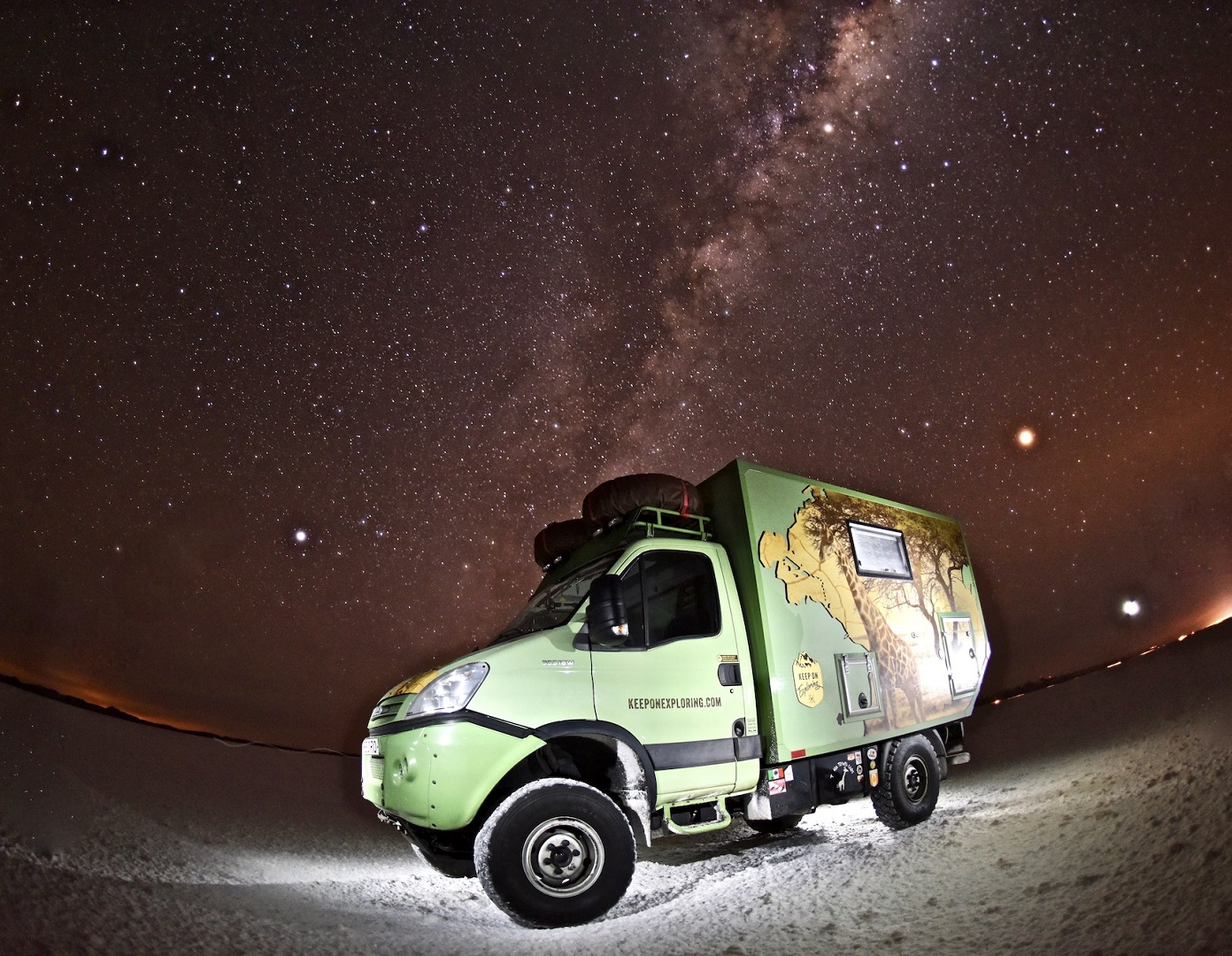
Waking up in the morning I watched them how practical and resilient they were in that cold weather. How did they manage everything with the little infrastructure they had. For us making a cup of tea was simple. We would just turn on the gas cooker, prepare the tea, then washed the cups with the water from the sink and the job was done. To have breakfast we could easily get some oats and milk from the fridge or prepare eggs the way we preferred.
For them things were a bit different. They had to get wood to create a fire place or in that case as there was no wood around they used a little gas devise the size of a cup to hit water. To get anything out of their bags was a painful exercise because they had to open up most of their things around the camp. With the cold outside it was hard to manipulate anything with two hands, even to stretch one finger was unpleasant. So first they needed to warm up their bodies, then to turn on the fire, hit up the water they carried in bottles on the bikes, then prepare the tea.
The breakfast that day was: boiled eggs and left overs that needed to be eaten before they would rotten in the bags. After this process was done they had to wash their utensils with cold water. Since there was no water to waste they just cleaned them with a piece of paper. One can not carry a fridge on a motor bike nor a stove. Every can of food is calculated to fit the overall baggage the biker can carry. This includes a tent, a mat, a sleeping bag, minimal utensils, few clothes for summer and winter, tools and some spare parts for the motorcycles.
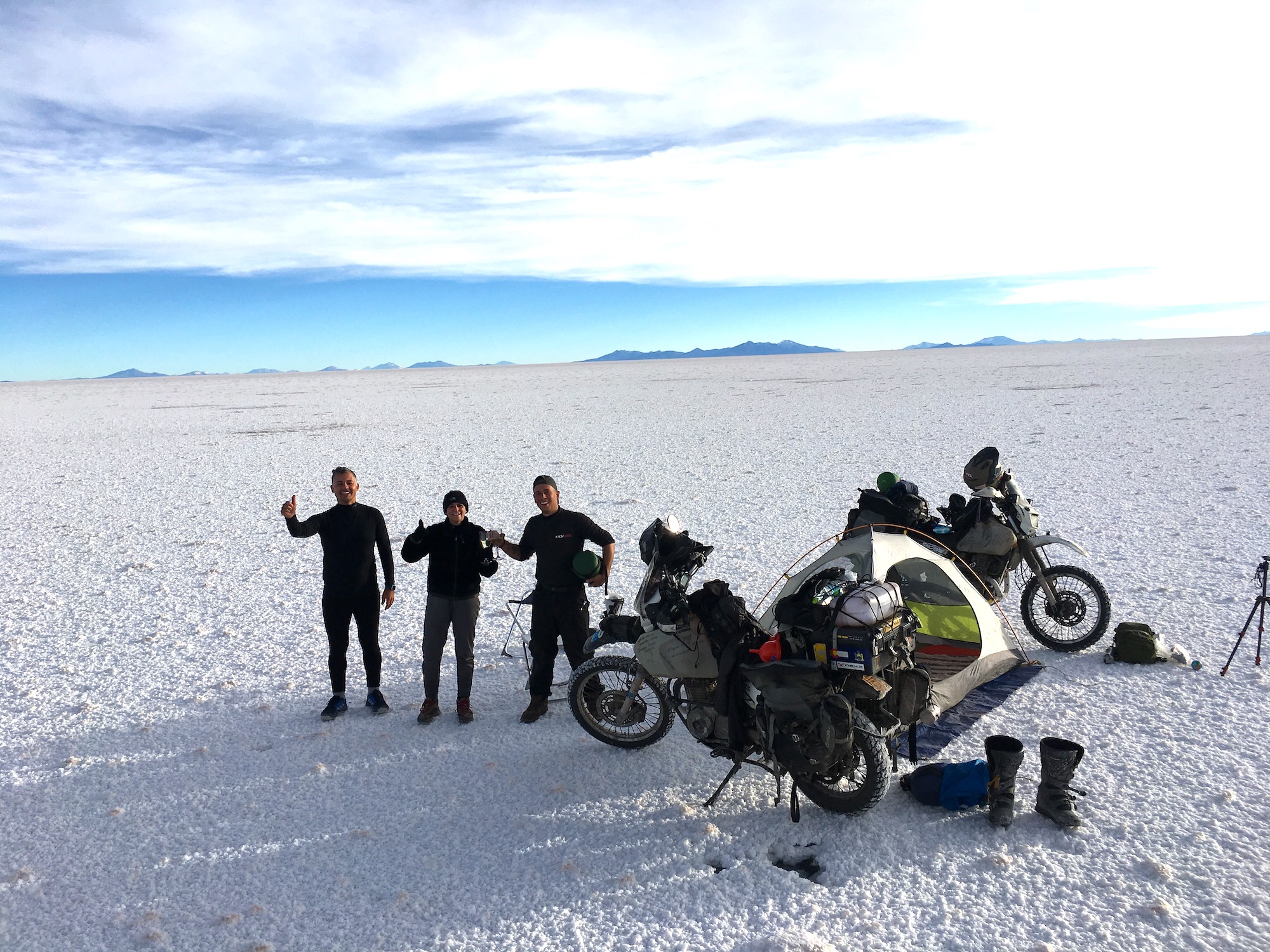
It was pretty wow to see Aida as a woman managing all that herself without making a fuss. On the contrary she was smiling all the time. She seemed rather exhilarated by the adventure than intimidated by the harsh conditions. Such a tough and practical woman! Paul, her road partner was completing her with his mechanic skills and jokes, making out of any challenging situation a humorous moment, always keeping things on a positive note. They had the back of each other.
After a tea and a cup of coffee together, I went for a walk into the nowhere. I asked JP to catch me up in half an hour. I needed to move. I was getting heavier and my back started to hurt sitting on the co-pilot seat for long drives every day. At some point when I became a dot in the horizon, JP came to pick me up. Fantastic sense of fullness and nothingness. I felt energized and ready for a new driving day.
We had to return to Uyuni to wash the truck from the underneath salt deposits and then to drive towards the border with Argentina.
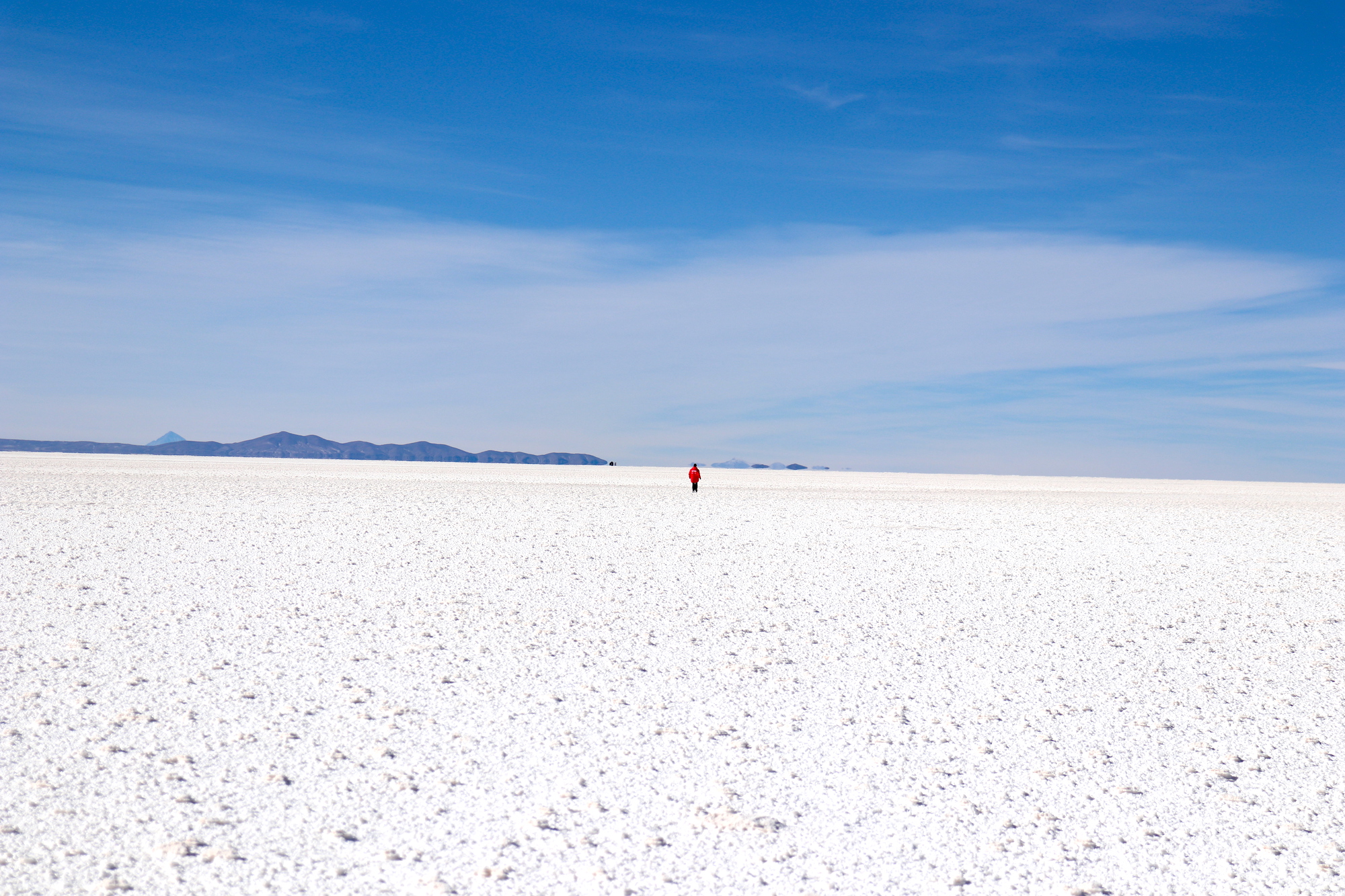
Everything happens for a reason
Back in Uyuni, while we were washing the truck, Aida and Paul saw us at the car wash station. They stopped to say hello. They had dirt and salt all over their bodies and bikes. “ We got stacked again into the muddy areas of the salt flats” Aida was mentioning smiling.
Paul unfortunately got his knee switched. He was limping. “I am fine”, he said. This happens a lot when I ride. “My leg will swallow for few days but it will recover”, he sounded accustomed with such events.
I felt so bad and pity for them. But funny enough they didn’t. They were driven by that sense of adventure and craziness. They found it cool, it was part of the journey.
The fact that they were mostly camping in the open nature, in a tent, often is harsh environments like in Salar at -7 degrees, with no source of immediate heating, water, minimal food and conditions, was inspiring to me. They took the “hard road”. I was appreciating and respecting their willpower, down-to-earth approach, positiveness and lack of fear. Everything was taken on a fun and laughing tone. It made me toughen up a little bit.
I needed to see that we were somehow “glamping” (glam camping) compared with other fellow travelers. Everything happens for a reason. We were meant to meet in the apparent hostile environment.

We decided to ride together towards Tupiza, a town close to the border with Argentina.
The landscape we came across was beautiful but different from what we had seen before. Views were varying from meadows with lamas to dry canyons. A wild beauty. People continued to seem unresponsive. I pushed JP to cross the border with Argentina the following day. I needed a change to a more familiar culture.
Was it worth it to visit Bolivia? The appeal of Copacabana resort with its view to Lake Titicaca, the experience of crossing the highest navigable lake in the world on a wooden barge, the tremendous sights of the Andean Altiplano, the panorama of La Paz from its modern cable car system and the nothingness effect of Salar de Uyuni showed us that Bolivia has an extraordinary nature. Building memories and friendships with Anna Maria and Gerald, Aida and Paul were priceless experiences too. It was not a question of worth, but rather a learning process of opening up to diversity, adversity and realization that there is beauty in everything. So yes, the experience was worth it!

